You are using an out of date browser. It may not display this or other websites correctly.
You should upgrade or use an alternative browser.
You should upgrade or use an alternative browser.
Reviews by Wiljen
Filters
Show only:
Loading…
Wiljen
Headphoneus Supremus
Pros: Great build quality, mini-XLR at cups gives plenty of cable options, Fun signature for pop, rock, edm, and hip-hop
Cons: no 3.5mm cable provided, warmer than some and not reference neutral.
Can the $499 Apos Caspian Headphones deliver the sonic goods or are they too sweet for their own good?

It takes a certain kind of craziness to want to introduce a new line of headphones in 2021. On top of a super conjested market with minimal returns (Ask the folks at Sennheiser who sold off their consumer headphones division last year if it’s all strudel and coffee in that regard), You have the shortages of parts due to the pandemic, and embargoes of some parts due to political pressures.
Apos Audio’s primary focus is the retail side of the business but that hasn’t stopped them from collaborating with headphone manufacturers and creating products like the Apos Caspian Headphones which we previewed in August 2021. Getting into the headphone market right now is fraught with all kinds of risk and after a recent conversation with one of the brands that has benefited enormously from the exponential growth of the market and sold thousands of DACs and headphone amplifiers in the process — it’s not something that they have contemplated for even one second. Just because you can, doesn’t always mean that you should.
On the other hand, the margins can be pretty good for boutique headphone manufacturers, but are very small when it comes to the larger mass market products, and finding a way to distinguish your new product in an ocean of headphones is very difficult. Brands like Audeze realized this a few years ago and started developing other products utilizing their technology for other markets like the medical world and office conference speaker systems.
The market for $4,000 headphones is remarkably small and it’s why brands like Grado Labs who sell thousands of high-end headphones every year has kept its focus on affordable models and its very successful phono cartridge business which pays the bills every month.

Kennerton Audio’s own line of headphones runs from the Jord ($350) up to the Rognir (read our review) and Thror ($3500) with several stops along the Trans-Siberian Railway giving them some level of expertise when designing headphones for the upper end of the market. The Rognir is one of the most impressive products in the ultra high-end headphone category and should be considered with the best from Meze Audio, Audeze, and Dan Clark Audio.
Sandu founded Soundnews and has been listening and writing about audio gear for quite some time now and had some definite ideas about what he wanted in a headphone; Apos also had a very specific price point that they wanted to target and the reached out to Kennerton. From this collaboration, we ended up with the Apos Caspian Headphone that is under review this week.
I’m sure some will raise an eyebrow at the idea that a publication is getting into the “manufacturing” side of the business but how is that any different than publications like Gear Patrol who do product collaborations with Huckberry and a lot of outdoor product manufacturers?

Nobody forces you to buy anything and you are being informed about the conflict in advance.
The cable and case are also typical of Kennerton offerings. The areas where the Apos Caspian differs from most of the Kennerton line are the driver which is unique to the Caspian and the cup design which shares elements of the Vali and Magni, but is not a duplicate of either.
The ear pads are hand-sewn leather and again similar to other Kennerton models and one of the better made memory foam pads available in my personal experience.

For those less familiar with the Kennerton line, the Caspian has a steel headband with a padded leather wrap and stamped gimbals with adjustments similar to those used by Beyerdynamic or Sennheiser.
The ear cups are aged oak with a large grille finished with the Apos logo in matte black that matches the gimbal/headband. The connectors are 3-pin mini-XLRs on each cup with a slight forward angle.

Overall, the Apos Caspian has a dark wood and flat metal aesthetic that gives it a very businesslike appearance. The 380 gram weight puts it near the middle of the pack; the HiFiMN HD6xx weighs closer to 200 grams and the HiFiMAN HE6 tip the scale at nearly 700 grams.
Can you drive these with your iPhone or a Dongle DAC?
The nominal impedance is listed as 33 ohms with a sensitivity of 115dB/mW. My measurements showed an impedance of 37 ohms at 1 kHz and a sensitivity of 116dB/mW at the same frequency (±3dB).
This puts the Caspian in the class of headphones that can easily be driven by a Dongle DAC or tablet; but I would add that it doesn’t require one from a power perspective.
The Caspian will scale some qualitatively with better sources but it simply does not need the additional power most amps provide.

Apos Flow cable (XLR to mini-XLR) costs $100 extra I found it odd that a headphone that was designed to work using a Dongle DAC, phone, or tablet does not come with a cable compatible with any of them. The stock cable is a 6.35mm single ended cable and the Apos Flow cable that was provided as an upgrade is 4-pin XLR to mini-XLR for in home use and the other options for the Flow cable do not include a 3.5mm single ended jack.
The Caspian seems a bit schizophrenic as it is designed for use with portable source gear but neither the open back design nor cable options are particularly suitable for that use case. Luckily, mini-XLR to 3.5mm cables are not all that uncommon and I had more than one in my possession so I was able to test the Caspian using both desktop gear (Questyle CMA 15 and RME ADI-2) and portable gear (Kann Alpha, WM1A, and Dethonray DTR1).
Moving to the ADI-2’s headphone output resulted in a a cleaner sound with a much higher level of transparency and detail; the Questyle CMA15 also performed similarly with good dynamics and without adding more colorations to a headphone that definitely requires some sunlight if you really want to hear what it can do.

On the low end, the Caspian delivers good bass extension and impact without sacrificing clarity in the process. I have to say I’m impressed with the amount of bass impact the Apos Caspian delivers for an open-back design as it borders on “bass-head” territory which is usually an area where closed back designs rule.
The bass does roll-off somewhere in the lower 20Hz range; there is more than enough impact with music, movies, and video games and an ample amount of texture.
The mid-bass offers some degree of emphasis; I would not call the Caspian neutral sounding in this particular area but the overall levels of transparency and texture are not diminished by it. There is definitely some mid-bass bleed which is something that I expected considering how strong the deep bass is with almost every genre of music.
The lower midrange has good note weight and energy which definitely moves the Caspian outside the norm and away from the Harman target; it would be fair to describe the Caspian are quite linear sounding in this area and that’s a really important characteristic especially with orchestral and string quartet pieces.
The combination of strong bass response, midrange energy and resolution really brought a number of classical pieces to life; the dynamics on the “1812 Overture,” and “The Great Gate of Kiev” were impressively reproduced and I found that strings had excellent timbre and decay.
When a headphone makes strings really sound that natural, it’s hard not to notice and want to continue listening.
There is an upper midrange lift that brings female vocals forward in the mix and gives violin a nice upper range without becoming brittle or steely sounding.
Listening to rock guitar tracks highlighted a few things; the Apos Caspian can be very impressive in terms of its tonal balance and midrange resolution, but it also rounds off the edges which could lead some to think that rock music will sound slightly dull. I do wish there was a bit more detail here in that regard.
Moving from the upper midrange into the lower treble the tonal balance remains fairly balanced and there isn’t much a change with the presentation. Above 6 kHz, there is a degree of roll-off which prevents the Caspian from ever sounding bright; the trade-off is a lack of air or sparkle that robs cymbals of some of their energy to sound more realistic.
The Caspian does respond well to some EQ between 6-8 kHz and I felt that the headphone responded best overall with source equipment and headphone amplifiers that were on the more neutral side. Darker sounding sources will come across as quite dull and lacking in detail through these headphones.

The tonal balance of the Caspian has a rather significant impact on the soundstage; there is more depth than width, but I felt that the warmer tonal balance created the impression that there was much less than was actually present.
Everything sounds quite natural; a small club or large auditorium are faithfully reproduced but the tonal balance diminishes what could be one of the Caspian’s best attributes.
Instrument separation is good in the upper registers but can have a small degree of overlap in the lower. Every instrument occupies its own space within the soundstage but it’s not as carved out as other headphones in the category and I did detect a small amount (tiny) of compression when listening to some very complex material.
Is it for the Head-Fi folks who want to conduct a critical listening session every single time they put them on? Not really.
The cable choice is odd considering that its impedance and sensitivity rating make it almost ideal for portable source gear. I do think you will achieve better sound quality using a dedicated headphone amplifier and balanced cables if this is going to be a daily driver. The build quality is quite good and the overall attention to detail and finish is quite appropriate for the asking price.

But is it different enough from the other models in the Kennerton lineup to warrant a look if you already own their M12 or Magni headphones? Yes, it carves out its own niche within the Kennerton made models.
At $499, it faces a lot of competition from HiFiMAN, Sennheiser, and Meze Audio and others as well so where does it fit?
If you’re looking for a neutral or overly detailed sounding pair of headphones, the Caspian won’t be your cup of tea.
But for those of you looking for a very pleasing sounding pair of headphones for popular genres,, the Apos Caspian might be exactly what you’ve been searching for. The fact it is equally at home in the studio and on the road is also a big plus.
Where to buy: $499 / $599 at apos.audio (without/with Flow Cable)

It takes a certain kind of craziness to want to introduce a new line of headphones in 2021. On top of a super conjested market with minimal returns (Ask the folks at Sennheiser who sold off their consumer headphones division last year if it’s all strudel and coffee in that regard), You have the shortages of parts due to the pandemic, and embargoes of some parts due to political pressures.
Apos Audio’s primary focus is the retail side of the business but that hasn’t stopped them from collaborating with headphone manufacturers and creating products like the Apos Caspian Headphones which we previewed in August 2021. Getting into the headphone market right now is fraught with all kinds of risk and after a recent conversation with one of the brands that has benefited enormously from the exponential growth of the market and sold thousands of DACs and headphone amplifiers in the process — it’s not something that they have contemplated for even one second. Just because you can, doesn’t always mean that you should.
On the other hand, the margins can be pretty good for boutique headphone manufacturers, but are very small when it comes to the larger mass market products, and finding a way to distinguish your new product in an ocean of headphones is very difficult. Brands like Audeze realized this a few years ago and started developing other products utilizing their technology for other markets like the medical world and office conference speaker systems.
The market for $4,000 headphones is remarkably small and it’s why brands like Grado Labs who sell thousands of high-end headphones every year has kept its focus on affordable models and its very successful phono cartridge business which pays the bills every month.

From Russia with Love?
In order to mitigate the risks and improve their chances of success, Apos Audio partnered with Sandu Vitalie of Soundnews to help tune their new headphone, and with Kennerton Audio; who are based in Russia for help with the design and construction.Kennerton Audio’s own line of headphones runs from the Jord ($350) up to the Rognir (read our review) and Thror ($3500) with several stops along the Trans-Siberian Railway giving them some level of expertise when designing headphones for the upper end of the market. The Rognir is one of the most impressive products in the ultra high-end headphone category and should be considered with the best from Meze Audio, Audeze, and Dan Clark Audio.
Sandu founded Soundnews and has been listening and writing about audio gear for quite some time now and had some definite ideas about what he wanted in a headphone; Apos also had a very specific price point that they wanted to target and the reached out to Kennerton. From this collaboration, we ended up with the Apos Caspian Headphone that is under review this week.
I’m sure some will raise an eyebrow at the idea that a publication is getting into the “manufacturing” side of the business but how is that any different than publications like Gear Patrol who do product collaborations with Huckberry and a lot of outdoor product manufacturers?

Nobody forces you to buy anything and you are being informed about the conflict in advance.
The Skinny
Those familiar with the Kennerton family of headphones will recognize some of the features from their other models fairly quickly. The headband is pure Gallahorn GH, the cups and cable jacks are from the Vali, and the wood is similar to the Magni or M12 Dusk.The cable and case are also typical of Kennerton offerings. The areas where the Apos Caspian differs from most of the Kennerton line are the driver which is unique to the Caspian and the cup design which shares elements of the Vali and Magni, but is not a duplicate of either.
The ear pads are hand-sewn leather and again similar to other Kennerton models and one of the better made memory foam pads available in my personal experience.

For those less familiar with the Kennerton line, the Caspian has a steel headband with a padded leather wrap and stamped gimbals with adjustments similar to those used by Beyerdynamic or Sennheiser.
The ear cups are aged oak with a large grille finished with the Apos logo in matte black that matches the gimbal/headband. The connectors are 3-pin mini-XLRs on each cup with a slight forward angle.

Overall, the Apos Caspian has a dark wood and flat metal aesthetic that gives it a very businesslike appearance. The 380 gram weight puts it near the middle of the pack; the HiFiMN HD6xx weighs closer to 200 grams and the HiFiMAN HE6 tip the scale at nearly 700 grams.
The Kishkas
Internally, the Apos Caspian uses a 50mm dynamic driver with a graphene coated low-mass diaphragm. The driver is then mechanically decoupled from the frame to help lower distortion; it has been tuned to deliver a polite sonic signature with some intentional filtering of the top end between 2 kHz and 7 kHz to reduce listener fatigue.Can you drive these with your iPhone or a Dongle DAC?
The nominal impedance is listed as 33 ohms with a sensitivity of 115dB/mW. My measurements showed an impedance of 37 ohms at 1 kHz and a sensitivity of 116dB/mW at the same frequency (±3dB).
This puts the Caspian in the class of headphones that can easily be driven by a Dongle DAC or tablet; but I would add that it doesn’t require one from a power perspective.
The Caspian will scale some qualitatively with better sources but it simply does not need the additional power most amps provide.

Apos Flow cable (XLR to mini-XLR) costs $100 extra I found it odd that a headphone that was designed to work using a Dongle DAC, phone, or tablet does not come with a cable compatible with any of them. The stock cable is a 6.35mm single ended cable and the Apos Flow cable that was provided as an upgrade is 4-pin XLR to mini-XLR for in home use and the other options for the Flow cable do not include a 3.5mm single ended jack.
The Caspian seems a bit schizophrenic as it is designed for use with portable source gear but neither the open back design nor cable options are particularly suitable for that use case. Luckily, mini-XLR to 3.5mm cables are not all that uncommon and I had more than one in my possession so I was able to test the Caspian using both desktop gear (Questyle CMA 15 and RME ADI-2) and portable gear (Kann Alpha, WM1A, and Dethonray DTR1).
The Sound of Music
I had initially tried the Caspian with the RME ADI-2 using it as a DAC and the Xduoo TA-26 amplifier but found it to be a poor pairing as both the amp and headphone add warmth to every recording and the overall presentation became too thick and lacking in detail.Moving to the ADI-2’s headphone output resulted in a a cleaner sound with a much higher level of transparency and detail; the Questyle CMA15 also performed similarly with good dynamics and without adding more colorations to a headphone that definitely requires some sunlight if you really want to hear what it can do.

On the low end, the Caspian delivers good bass extension and impact without sacrificing clarity in the process. I have to say I’m impressed with the amount of bass impact the Apos Caspian delivers for an open-back design as it borders on “bass-head” territory which is usually an area where closed back designs rule.
The bass does roll-off somewhere in the lower 20Hz range; there is more than enough impact with music, movies, and video games and an ample amount of texture.
The mid-bass offers some degree of emphasis; I would not call the Caspian neutral sounding in this particular area but the overall levels of transparency and texture are not diminished by it. There is definitely some mid-bass bleed which is something that I expected considering how strong the deep bass is with almost every genre of music.
The lower midrange has good note weight and energy which definitely moves the Caspian outside the norm and away from the Harman target; it would be fair to describe the Caspian are quite linear sounding in this area and that’s a really important characteristic especially with orchestral and string quartet pieces.
The combination of strong bass response, midrange energy and resolution really brought a number of classical pieces to life; the dynamics on the “1812 Overture,” and “The Great Gate of Kiev” were impressively reproduced and I found that strings had excellent timbre and decay.
When a headphone makes strings really sound that natural, it’s hard not to notice and want to continue listening.
There is an upper midrange lift that brings female vocals forward in the mix and gives violin a nice upper range without becoming brittle or steely sounding.
Listening to rock guitar tracks highlighted a few things; the Apos Caspian can be very impressive in terms of its tonal balance and midrange resolution, but it also rounds off the edges which could lead some to think that rock music will sound slightly dull. I do wish there was a bit more detail here in that regard.
Moving from the upper midrange into the lower treble the tonal balance remains fairly balanced and there isn’t much a change with the presentation. Above 6 kHz, there is a degree of roll-off which prevents the Caspian from ever sounding bright; the trade-off is a lack of air or sparkle that robs cymbals of some of their energy to sound more realistic.
The Caspian does respond well to some EQ between 6-8 kHz and I felt that the headphone responded best overall with source equipment and headphone amplifiers that were on the more neutral side. Darker sounding sources will come across as quite dull and lacking in detail through these headphones.

The tonal balance of the Caspian has a rather significant impact on the soundstage; there is more depth than width, but I felt that the warmer tonal balance created the impression that there was much less than was actually present.
Everything sounds quite natural; a small club or large auditorium are faithfully reproduced but the tonal balance diminishes what could be one of the Caspian’s best attributes.
Instrument separation is good in the upper registers but can have a small degree of overlap in the lower. Every instrument occupies its own space within the soundstage but it’s not as carved out as other headphones in the category and I did detect a small amount (tiny) of compression when listening to some very complex material.
Conclusion
Who exactly should consider the Apos Caspian Headphones? With a tuning that is rather warm and slightly thick, I would honestly suggest that it is better suited for headphone listeners that are using it with more neutral sounding or even bright source components or headphone amplifiers.Is it for the Head-Fi folks who want to conduct a critical listening session every single time they put them on? Not really.
The cable choice is odd considering that its impedance and sensitivity rating make it almost ideal for portable source gear. I do think you will achieve better sound quality using a dedicated headphone amplifier and balanced cables if this is going to be a daily driver. The build quality is quite good and the overall attention to detail and finish is quite appropriate for the asking price.

But is it different enough from the other models in the Kennerton lineup to warrant a look if you already own their M12 or Magni headphones? Yes, it carves out its own niche within the Kennerton made models.
At $499, it faces a lot of competition from HiFiMAN, Sennheiser, and Meze Audio and others as well so where does it fit?
If you’re looking for a neutral or overly detailed sounding pair of headphones, the Caspian won’t be your cup of tea.
But for those of you looking for a very pleasing sounding pair of headphones for popular genres,, the Apos Caspian might be exactly what you’ve been searching for. The fact it is equally at home in the studio and on the road is also a big plus.
Where to buy: $499 / $599 at apos.audio (without/with Flow Cable)
Wiljen
Headphoneus Supremus
Pros: good build, near neutral signature, polite treble while still well extended
Cons: won’t please bassheads, somewhat lean

disclaimer: The Dunu TitanS was sent by Dunu for purposes of this review. I have no financial interest in Dunu, any of its distributors, or resellers. I will admit to an ongoing love affair with several of Dunu’s in-ears and I probably am a bit biased in that I have an expectation that they will perform well. For more information on the Titan S or to purchase your own, See the Dunu website.
Unboxing / Packaging:
The TitanS ships in slip-cover with the earpieces displayed on front and the specifications on the rear. The inner box is gloss black with Dunu in silver on the top and is tastefully understated. Lifting the lid reveals the blue zipper case with the earpieces, cable, and accessories all hiding either in it or under it. The kit consists of the case, earpieces, cable, 10 sets of tips in three different styles, a shirt clip, and various instruction and warranty cards. The kit is impressive, not for the sheer volume of stuff, but for the quality of the items in it as the soft case is the same model paired with the Falcon Pro and models higher up the line. It would have been easy to cut corners on this budget model, but Dunu didn’t.






Build/Fit:
Those familiar with the Titan line will take one look at the Titan S and know that something has changed. The earlier Titans all shared a very similar shell design that I call the ice cream cone shape with a small faceplate and outer shell followed by a bell to house the driver and then a nozzle to direct sound into the ear canal. The 6 was a little bit of a departure in that it blended the two sections a bit but overall it still had the same aesthetic. Those days are gone. The Titan S is a reboot of the franchise and while internals are similar, looks are not. The new design has a larger triangular shaped zinc shell with the nozzle exiting the leading point of the triangle and the bi-pin connector the top. All the edges and corners are smoothed so they sit comfortably in the ear. There is a large functional outer vent and another smaller vent just behind the nozzle on the under side of the shell. Size is fairly large so those with small ears may need to audition these before purchase. This is one place where the new design may be a step backward for some but for most with normal sized ears the Titan S is quite comfortable.

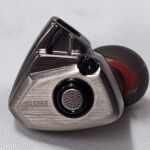
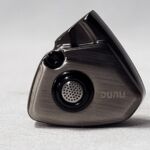



Internals:
The heart of the the Titan S is a new 11mm dynamic driver that while not part of the ECLIPSE family has a lot of trickle down technology from its bigger siblings. The driver uses a multi-layer polycondensated liquid crystal polymer diaphragm, an ultra-lite CCAW voice coil and N52 internal magnet structure. I’ve mentioned before that Kevlar is one form of liquid crystal polymer and the reason for use in diaphragms is its combination of stiffness and lack of weight. Copper clad aluminum wire CCAW is a cost saving measure as aluminum is less expensive but requires more space while copper is considerably more costly but more compact. The hybrid CCAW is a way to hit a happy mid-point between larger Aluminum windings and more expensive copper windings in the coil. The resulting driver has a nominal frequency response of 5Hz – 40kHz with an impedance of 32Ω (@ 1kHz) and a sensitivity of 110dB/mW (also at 1kHz). I found the Titan S easy to drive from dongles or phones and that additional power wasn’t needed for it to do its best work. The Titan S does scale some qualitatively, but doesn’t need a potent source to sound its best.
for the record, I did attempt to find an internals diagram and then not finding one did attempt to open the case on one to get internal photos. The screw is either captive or purely for looks and I gave up on trying to remove the face when it became obvious that doing so without damaging them was not likely. Maybe one of the gents that regularly do tear-downs will offer something up but I like mine well enough to not want them destroyed for the sake of a photo.
Cable:
Dunu cables have been among my favorites of late as their modular design is quite good and their durability is generally equally good. The cable here is a bit simpler than some as there are no modular connectors or fancy fittings involved. Starting at the southern end we have a 3.5mm jack in a 90° housing with a proper strain relief. The cable itself is a mix of single crystal copper and silver plated copper strands in a brown casing. From the jack to the splitter it is a 4 wire tight twist. Above the splitter it is a much looser two wire twist up to the earhooks and 0.78mm bi-pin connectors. The connectors have colored plated to denote left and right indexing and while standard cables will fit the Titan S, the geometry of the connector on the supplied cable is enough different than standard that aesthetics are impacted by switching cables.





Sound:

Bass:
The Titan S shares a similar low-end tuning with the Falcon Pro in that there is a mild emphasis in the mid-bass but the sub-bass tapers off gradually with some roll-off evident in the 30Hz range. This won’t please the basshead crowd, but is a more natural sound than many with elevated sub-bass. What sub-bass is present has good speed and some texture as well so doesn’t disapppoint qualitatively. The mid-bass emphasis is very mild and is heard more as a bit more presence in the mix than as a distinct emphasis as in reality the Titan S is near linear through about the 1kHz mark where it begins to deviate northward fairly quickly. For a budget in-ear, the bass quality is better than expected and quite different than most. Those looking for a big V need to look elsewhere as what is here is a well controlled near neutral presentation with good texture and moderate detail.
Mids:
Lower-mids have a very smooth transition from the mid-bass with no discernible bleed or obstruction and no big recess to be found. Lower vocals have good tone and cut through the mix well but are not quite as weighted as on the Falcon Pro. Guitar has a quick attack and a slight sustain that give it a natural tone and good clarity. Starting at about 1Khz there is a push forward that looks bigger on paper than it sounds in the ear. Strings have good energy while not getting too hot and piano has enough detail to be a fun listen. I didn’t find a tendency for the emphasis in the upper-mids/lower treble to become shouty but it is possible with extreme recordings that double down on the emphasis. Female vocals do stand slightly in front of their male counterparts but not artificially so. Mids are quite well done here and I had to remind myself these sell for $79 when critiquing as comparisons are generally to higher priced models.
Treble:
Unlike a lot of in-ears with an upper-mid push, the Titan S does not plateau that emphasis all the way through the lower-treble. Instead that upper-mid emphasis drops back rather rapidly above about the 3kHz mark and the result is a very non-fatiguing listen. Extension is good with roll-off somewhere above the limit of my hearing (14kHz roughly) and there is enough energy at the top to provide some air but sparkle is a bit limited. Snares have good rattle and cymbals aren’t over clicky but are slightly less than realistic. Overall, the treble tuning is on the safe side and while it won’t please treble enthusiasts, it won’t send the treble shy to the exits either.
Soundstage / Imaging:
Stage is good on the Titan S with moderate depth and only slightly more width by comparison. There is some height but it stops well short of fully three dimensional with the bulk of the sound seemingly coming from eye level almost directly in front of the listener. Seating the orchestra is straight forward with no major misplacements or overlaps. Instrument separation is good and about what you’d expect here with some mild compression becoming evident when tracks get overly complex. Imaging is good, but again stage size keeps it from being fully realized and honestly we shouldn’t expect miracles form this $79 offering.
Comparisons:
There is no shortage of budget single dynamics to compare against so I picked four of the most popular with price points that are close to the Titan S. Some a bit less, others a bit more, but those looking at buying the Titan S would likely consider all of these as direct competitors.
Fiio FD1 – $59.99 – We have to include Fiio in any discussion of budget models as they have been a dominant force in the market place. The FD1 shell is acrylic vs the metal shell of the Titan S so weight is a bit less on the Fiio. Both use a single dynamic with the fiio sporting a Beryllium coating vs the LCP of the Titan S. The Fiio is a little warmer and a bit more V-shaped and neither is going to please the bassheads in the group. Mids are a bit better on the Titan S as the FD1 is a bit recessed by comparison, but the note weight is slightly better on the FD1. Overall, I find the Titan S has a more natural tonality and is a more enjoyable listen.
Moondrop Aria – $79.99 – You couldn’t ask for a more dead on compare than these two. Both $79.99, both LCP, both metal shells, right down the line these two check all the same boxes. Size and weight won’t help us sort this one either so its down to sound. The Aria has a bit more low end and will please those looking for big bass hits a bit more. What they trade for that is clarity and while the Aria has more bass, the Titan S has the better textured more articulate of the two. At the top end, the Titan S is better extended again having more clarity and better instrument separation but coming across as a bit more technical when compared to the slightly smoother Aria. The treble shy will prefer Aria, those looking for a closer to neutral reference with more technical merit will chose Titan S.
T-force Yuan Li – $129.00 – So what does a fifty dollar step up get you? The Yuan Li is definitely more about fit and polish as its mirror polished shells stand in stark contrast to the industrial look of the Titan S. Internally the Yuan Li uses a 10mm dynamic with a DLC diaphragm so similar but not exactly the same as the Titan S. Sound wise, the Yuan Li has similar extension at the low end and won’t make the bass fans happy either so not a lot of separation there. Mid-bass is a little smoother and more organic with slightly better note weight on the Yuan Li in comparison to the Titan S. That observation really carries through the whole signature. The Yuan Li is a bit smoother, more relaxed, and effortless in its delivery while the Titan S is a bit leaner and not quite as smooth. Overall the Yuan Li is probably a better option when listening with poorly recorded tracks or just for fun while the Titan S is a bit more technical and closer to accurate.
TinHifi T2 Evo – $59.99 – And finally the step back in price. Most of the T2/T3/T4 line have shared a similar barrel shaped design with some form of 10mm dynamic driver in the shell so this could have just as well been any of the TinHifi mainstays. They also share enough in signature that likely would be interchangeable or nearly so in that respect too. The EVO uses a DLC diaphragm so a slight departure there, but other-wise specs are nearly identical. The barrel shape shell may fit smaller ears better than the Titan S but loses some style points in the process. Sound wise the two have a similar low end but mids favor the Titan S as does the treble where the T2 Evo can be too bright for some. The one place the T2 Evo is a clear winner is stage. When AB testing these two it is like going from your living room to a High School auditorium and those looking for a large stage will prefer the T2 Evo. The Titan S is a better balanced sounding in-ear than the more V shaped and bright T2 Evo though so even with its better stage, the T2 Evo falls to the Titan S.
Thoughts / Conclusion:
The sub one hundred dollar market is one of the hottest and most contested markets in earphones right now with some really brilliant products coming out. A few years ago any of the models I compared would have been a massive improvement over what was available in this price class. It’s a good time to be an audio enthusiast as prices continue to drop and quality continues to go up. That having been said when Dunu told me about the Titan S, I had my reservations. Don’t get me wrong, I like Dunu and generally think they do a good job building a quality product and aggressively pricing it. But this was something different. We want to take on the Aria on its own turf, same price, same driver type, same shell materials and we think we can beat it. The Moondrop series has been hugely popular for years and with the Aria still being on many “recommended” lists, that’s a bit like announcing your intention to beat Floyd Mayweather before you start taking boxing lessons. I’ve been a Dunu fan for years, but I was not at all sure I wouldn’t have to write a review that said “Close, but no”. I shouldn’t have doubted Dunu though as the Titan S does indeed knock the Aria out of that top spot for me and become my recommended in-ear at its price point. For a near neutral, very technical proficient in-ear that doesn’t fatigue during longer listening sessions, the Titan-S is the one to beat.
Dunu Titan S

Wiljen
Headphoneus Supremus
Pros: Good build and kit, good mid-bass, W shaped signature
Cons: Not for the treble shy, recessed lower mids, rose gold may not be for some.

Budget Wired In ear
Hidizs MS2
March 19, 2022 wiljen 907 Views 0 Comments Editdisclaimer: I was sent a kit of recent releases from Hidizs for review. That kit included the Hidizs AP80 Pro X (review on Ecoustics.com soon), the MS2 in ear (reviewed here), the S9 dongle dac, and the DH80S dac/amp that are still works in progress. I own an AP200 as well that I purchased outright as well as having reviewed the MS1, MS4, and Ap80 previously. I have no financial interest in Hidizs or any of its partners or vendors and my review was not compensated other than the earphone itself. If you have an interest in the MS2, more information can be found on Hidizs website.
Unboxing / Packaging:
The MS2 is the middle model in the line with a retail price of $89 but you wouldn’t necessarily know that to look at the packaging. The box is a lift top design with a photo of the earpiece on the front and the specs on the reverse. The Hidizs name and logo, the model name, and the knowles and Hi-res stickers on the front are all done in metallic reflective silver while the specs on the reverse are are in matte black. Lifting the top reveals the earpieces in a foam surround with the glitter bomb face plates a nice contrast to the white box. All of the other goodies are hiding underneath the foam tray. Lifting out the tray reveals a leather(ish) hard shell case that is way better than the average at this price. Inside the case we find the cable, and two styles of tips in SML for a total of 6 pairs.



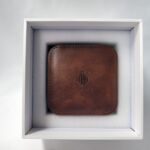
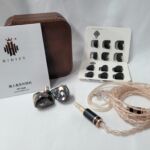
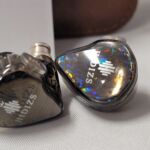
Build/Fit:
The MS2 shares a good bit with the MS1 rainbow as it uses the polymer shell with an aluminum nozzle rather than the metal shell of the earlier MS1 and MS4 models. The MS2 is available in green, red, blue, purple, black, all with a transparent resin that shows the internals to varying degrees depending on the depth of color. Regardless of which color you choose, the underside of the faceplate has a glitter bomb look that makes the face plates sparkle in bright light. Nozzles exit the polymer shell at the lower point (semi-teardrop shape) with a slight forward rake that is exaggerated by the shape of the shell. Insertion depth is fairly good and isolation is aided by this. Nozzles have a large lip for tip retention as well and take standard sized tips so tip rolling is easy for those that cant find a match in the provided set. There is a single vent over the dynamic drivers on the underside of the shells that can be blocked while wearing so some adjusting to prevent blocking the vent may be needed. I found comfort quite good as these are mid-sized shells and fairly light weight so all but the smallest ears shouldn’t have fit issues.
The case deserves some discussion as well as it is better than one should expect at this price. Metal plates support the leather to prevent collapse and internal memory foam pads help keep the contents protected. The top also has a mesh pocket for accessories to further keep things from rattling around and getting scratched up.



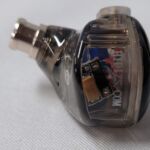




Internals:
The MS2 is a hybrid model with a 10.2mm dynamic driver with a titanium plated diaphragm and a Knowles 33518 balanced armature. Hidizs lists the titanium plating as helping mid-bass and the 33518 adding to the top end for increased treble response and resolution. The 33518 driver is very similar to the 30095 but has a lower price point so is a common site in budget models. The dynamic driver handles the low end most of the mid-range with the balanced armature adding to the top end. The crossover is a fairly simple design with a couple of visible components directly on the rear face of the dynamic driver. Nominal impedance for the MS2 is listed as 18Ω with a sensitivity of 112dB/mW which puts it in the very easy to drive class and I found it worked well using the S9 Pro dongle or AP80 Pro X DAP. It does scale some with better sources but additional power is not needed and in some cases is actually counterproductive as with high potency sources the noise floor sometimes became evident.


Cable:
The provided cable uses rose gold accents to highlight the copper strands in the cable. The jack is a gold plated 3.5mm with a straight housing in black and rose gold with a short strain relief. The cable itself is 2 silver plated copper strands and 2 oxygen free copper strands in a clear casing. The strands are in double twist from the jack up to the splitter. Above the splitter and rose gold coin chin slider, single wires per side run to the earhooks and 0.78mm bi-pin connector in a clear housing. The right connector is marked with a red dot for indexing purposes.

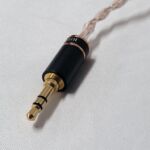

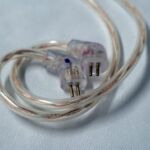
Tips:
The Ms2 Ships with two styles of tips on cards for storage when not in use. I really prefer this style of storage system as it makes it easy to mark which tips came with each model when storing several. All the tips are gray translucent silicone with one set having a wide bore and a fairly shallow depth and the other having a narrower bore and a bit taller as well. The shallow/wide version enhances bass while the tall/narrow version provides a bit more balanced signature. I chose the taller/narrow bore tips for the bulk of my listening.

Sound:
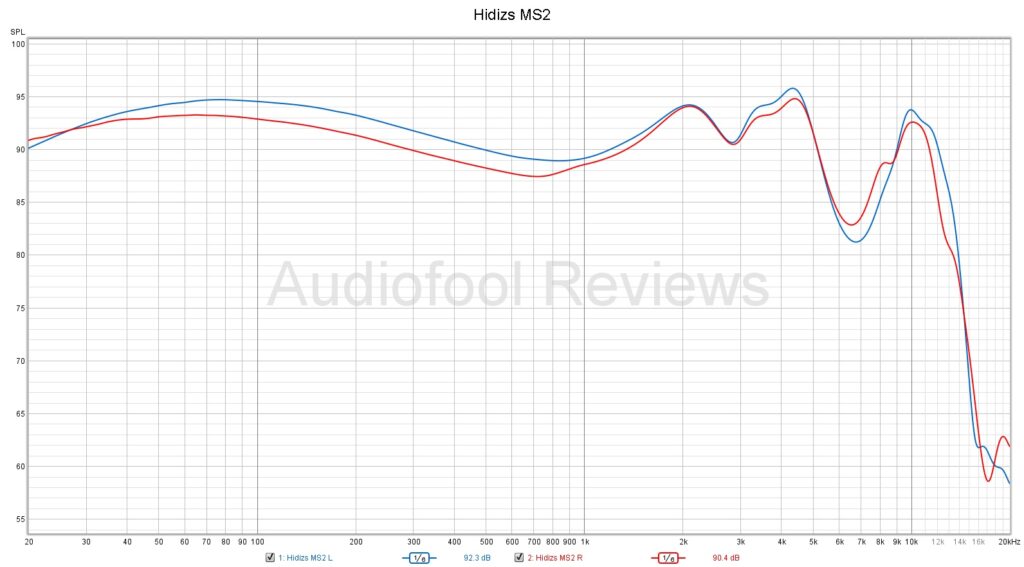
Bass:
There is a moderate sub-bass emphasis with a center around 80Hz and a fairly slow taper to either side. There is notable roll-off evident below about 35Hz but above that point the sub-bass presence makes itself known. There is some rumble here but not enough to make the bass head crowd happy. The sub-bass is not as well textured as I’d prefer but that improves as we move up and there is more texture and detail in the mid-bass. Mid-bass has good slam when called upon but remains a bit more present in the mix than neutral even when not the focus of the piece. Mid-bass does have some mild bleed into the lower mids which adds a little warmth to the sound at the expense of a little detail in that area.
Mids:
Lower mids rest at the bottom of the W and are recessed notably. Male vocals have good weight and clarity if they are a step behind their higher counterparts. Guitar has good growl with enough of a sharp edge to sound realistic. Strings vary with some being quite energetic and others seeming a bit flat depending on the recording. Piano has good timbre as does acoustic guitar. There is a considerable upper-mid push that brings female vocals to the front. Be cautious of tracks that also emphasize female vocals as they can get a bit shouty and nasal if doubled up.
Treble:
The lower treble is on the same plane as the upper mids and does become the dominant feature of the Ms2 landscape. Lower treble is quite forward but the MS2 isn’t prone to sibilance at normal listening volumes. At high volume there is some stridency and more of a tendency toward sibilance so these are not the in-ears for those who want to “crank it up. There is some grain to the treble as it drops back in the 7-9kHz range which helps keep it polite. Snare rattle is good, but cymbals carry a bit too much energy at times and can come off as slightly metallic sounding as a result. There is good top end extension with final roll-off above 14kHz and enough air and sparkle to avoid feeling closed in.
Soundstage / Imaging:
The MS2 has good stage dimensions but is definitely wider than deep and seating the orchestra a bit odd as some instruments appear more side to side than front to back as a result. Instrument separation is good, but not outstanding and layering follows that same pattern. As tracks get faster, there is some evidence of compression although it takes a lot to really notice thickening of the lower registers. Imaging is good with placements being easy to recognize and track, and positions in space reasonably well defined.
Thoughts / Conclusion:
The Hidizs Ms2 is an affordable hybrid that delivers a W shaped signature that is good for EDM and popular genres. It is best listened to at lower volumes as there is some tendency to become strident as volumes go up which may be a deal breaker for some users but for those worried about protecting their hearing its actually a good barometer of when you need to turn the volume down a notch. The strong points of the MS2 are good mid-bass and treble detail with enough mids to not sound scooped out and a good driving low end to keep things going. Sub-bass has good rumble but is not over-emphasized, and imaging is good as well. They do lose a little on the stage as it is a bit shallow and on the lower mids where there is some bleed and recess as they are obviously not the star of this show. For me, I’d pull the upper-mid/lower treble back slightly and add that same amount to the lower-mids. The W tuning wont be for everyone but it is a fairly unique signature at this price point and will offer the listener something a little different than the standard big-V or harman target tuned in-ears that dominate this price bracket.
Hidizs Ms2

L
LikeHolborn
what are like it but not wide as it is deep, with no treble splashiness (cymbals etc, or otherwise) heard that rose brand..? t3 like the reviewer up suggested?
Wiljen
Headphoneus Supremus
Pros: Great build quality, near reference sound, MQA support available on most inputs, 5V output mode
Cons: universal remote not of same quality as main unit, some controls a bit clunky to manipulate.
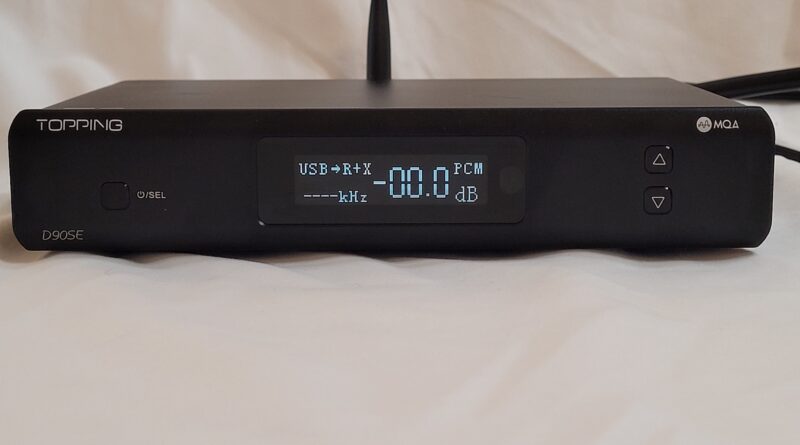
Disclaimer: Apos Audio sent the D90SE for review as a loaner. I have no financial interest in Apos Audio, or Topping, and received no compensation for this review. I am using an affiliate link here at the request of Apos Audio for tracking purposes, but do not claim proceeds from the use of this link. Increasingly vendors are requesting use of affiliate links so you may see more of them added to my reviews for tracking purposes, rest assured I have no intention of monetizing this site. For more information about the D90SE, see Apos Audio, or Topping’s website.
Unbox/Packaging:
Those familiar with topping products will recognize the packaging of the D90SE as it follows the trend with a matte black box with the Topping name on top. Details of what is in the box are provided by a label on the side. Lifting the top reveals the DAC tucked into a foam surround protected by a plastic bag with compartments cut in the foam for the accessories A little more unpacking and you have the USB cable, power cable, Bluetooth antenna, and remote unpacked. The addition of a set of RCA cables or XLR cables so you don’t have to go dig for them would be appreciated but otherwise it is a fairly complete kit.




Build:
The chassis anodized aluminum and is available in either matte black or brushed metal finishes. The only visual differences between the D90 versions are the inclusion of the MQA logo on the 2nd gen model at upper right and the D90SE logo at lower left on the newest version. The face of the unit from left to right has the power button, display screen, and a pair of up/down buttons at far right that control selector functions and volume when used in pre-amp mode. The rear face from left to Right, the rear of the unit has a pair of XLR outputs followed by the RCA outs. The next block is the inputs starting with an HDMI style IIS input, then an optical (Toslink) and the blutooth antenna port stacked one on top of the other, coax and USB are similarly stacked next in line followed by single XLR for AES input. The last block is the power input which has a standard C13 female port with fusing built in and the power switch. Here again, you’d be excused for not seeing any difference in previous versions as the D90 MQA sported exactly the same layout externally. Overall heft of the unit is gratifying as well as it feels very solid in hand with no rattle, lose ports, or wobble to any of the sockets. It looks equally at home in my headphone setup or replacing my Bel Canto in my home setup. Props to Topping for looking the part of a high end unit, now about that remote…. (Unfortunately, the same universal remote used with all topping DAC/amps has shipped with all versions of the D90 and is not the quality of the rest of the unit. Its time for an app to replace remotes anyway so how about it topping?)




Internals:
If one could be forgiven for not noticing the external differences in D90 versions, the same cannot be said for internals. Previous generations of the D90 relied on AKM 4499 DACs while this newest iteration uses the ESS9038 Pro 8 channel DAC chip with 4 channels summed into each output for reduced noise and improved performance. The D90MQA brought the Xmos216 USB processor that allowed for full MQA decode via USB but other inputs were still limited to PCM only for some and PCM/DSD for others. The D90SE improves on that with full MQA decode, unfolding, and MQA studio are now supported via all the inputs except IIS. USB and IIS input support 32/768k PCM. The USB offers DSD512 native support while the IIS offers all the way up to DSD1024. The Coax/Optical/and AES are still limited to 24/192 PCM and DSD64 (DoP) but now do add MQA support. Even Bluetooth has upgrades with a new bypass of its internal DAC circuits and a direct pipe into the ESS9038Pro for improved sound quality. Bluetooth supports AptX Adaptive, and LDAC as well as AptX-HD, and AAC so the full gamut of sources should be compatible. Another new trick in the D90Se’s bag is the addition of a new high-power option that increases RCA output to 2.5V and XLR output to a full 5V. This allows the user to set output to 4V for standard consumer gear or 5V for professional gear and gives the D90SE an even broader range of applications.
For all the added power and new features of the D90SE, Topping has not forgotten what got them here. THD+N is insanely low and pushes the boundaries of what my analyzer is capable of measuring. Others have tested the D90Se and found nearly 135 dB of dynamic range using the XLR outputs and a THD+N of <0.00007% for RCA out both of which are certainly class-leading and quite possibly about as good as it gets regardless of price.

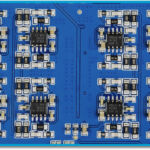
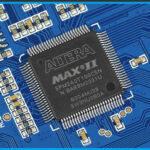

Settings:
The D90SE, much like its predecessors requires that the power button on front be held in while powering on the unit to enter setup mode. From there options of switching between DAC and Pre-amp mode are available. This prevents accidentally switching modes and destroying your hearing but does seem a bit antiquated and less than intuitive compared to some other models. Another thing to remember is that just changing the setting doesn’t save it. You have to go through the options to option # 13 to save the settings and restart the unit. A 14th option does exist but is rarely used as it is factory reset.
Topping D90SE Settings
Edit| Setting Number | Setting | Options |
|---|---|---|
| 1 | Auto Power | on / off |
| 2 | Screen Brightness | Low/Med/High/Auto (mid with 30second timeout) |
| 3 | Line out Mode | Preamp/DAC |
| 4 | Line out Type | RCA/XLR/Both |
| 5 | Bluetooth Enabled | on/off |
| 6 | PCM Filters | 7 filter options |
| 7 | DSD Filters | 4 filter options |
| 8 | IIS Interface Phase | Standard/Reverse |
| 9 | DSD Channel (IIS) | LRCLK / DATA |
| 10 | DSD bit flag (IIS) | Pin 15 / Pin 14 |
| 11 | Polarity (IIS) | normal / inverted |
| 12 | maximum output level | 4V / 5V |
| 13 | Save and Exit | Save and reboot / exit without save |
| 14 | Factory Reset | set to defaults |
In operational mode, the D90Se is designed to be controlled using the remote as the single button on the front of the unit serves as on off and input select, but all other functions require the use of the remote to access. Down the left side of the remote, you have Power, a headphone button that is not used, the FIR Filter select button, and the Auto button which turns on and off automatic standby. Filters available are Sharp, slow, short-delay sharp, short-delay slow, super slow, and low dispersion short-delay when using PCM input and 37kHz or 65kHz when using DSD input. IIS and DSD phase settings can also be adjusted. The Auto-standby feature allows the device to go to sleep when no signal is detected and power back up on signal introduction. For the most part I found this worked well but did occasionally clip the first note while waking up. Down the right side of the remote we have mute at the top, display brightness at the bottom, and two unused buttons between. On the wheel in the remotes center, up and down are volume control in pre-amp mode, while right and left are input selection and the center of the wheel controls output selection. Pairing bluetooth is enabled by holding down the Brightness button until the display indicates pairing. The unit must be in bluetooth mode before holding down the button as it will not initiate bluetooth mode if the unit is not already in it.







Sound:
While all this is good to know, unless the D90Se sounds at least as good as previous generations it doesn’t matter much. I matched my previous listening tests so I had a solid compare of the earlier model to the current release. I tried the D90 in both my home system as replacement for my Bel Canto 2.7 and in my headphone rigs replacing either my RME ADI-2, the Burson Swing, or a Bifrost MB. As mentioned in the previous review, the Bel Canto and RME units are a good bit more costly and it probably isn’t quite fair to expect the same level of performance out of the D90SE, but it comes closer than it has any right to for half the sticker of the other two.
My home rig hasn’t changed since the last go around except for the Triode TRX-1 that went back after review. My main system is a Bel Canto 2.7 DAC, Bryston Pre-amp, Levinson 23 amp and Magnepan 3.7s. Trading the D90SE into the Bel Canto spot using a fully balanced chain makes a small difference and quite frankly it favors the D90SE. Both are very clean, detailed, and crisp but the D90Se is a bit more authoritative in the lows and has better note weight throughout the range. Previous iterations of the D90 could easily have been mistaken for ESS based DACs with their analytical nature, but the D90SE is unmistakably the mighty 9038Pro as it as clean as anything I’ve heard short of the Chord Dave and might actually be closer to it than I’d like to admit. I had said that I could live happily with the D90 in place of the BelCanto and now I am considering putting the BelCanto 2.7 up for sale and keeping the review sample D90SE in its place.
Likewise, when replacing the ADI-2 in my headphone rig the D90Se showed improvements over the previous generation and was a bit closer to the ADI-2 in clarity and detail. Again the D90Se is a bit fuller compared to the slightly leaner presentation of the ADI-2. Transients are now a draw with both the D90SE and ADI-2 being extremely quick. Honestly if one does not need the recording capability of the big RME, the D90SE is a better spend and leaves you with more to spend on the rest of your system or less to spend overall.
The D90SE likewise replaced the Burson Swing without the noted drop in clarity and transient speed I had noted previously. Again the D90SE has proved to be at least the equal of a modified Swing with SparkOS op-amps throughout. The Bifrost MB presents a thicker, richer tone, but sounds overly smoothed compared to the D90Se with a good bit of attendant detail loss. The Bifrost MB will likely be heard as a touch more musical at the expense of detail but that cost if fairly high as the D90Se delivers a lot better resolution when put side by side with the Bimby. I don’t think the difference in sound here is a knock on either product, just they are designed to satisfy two different consumers with the Bifrost MB being more forgiving of poor source and the D90SE being more technical in its presentation but less forgiving.
Conclusions:
Topping has built an enviable reputation for producing products that measure exceedingly well and sound just as good all at price-points that are forcing other makers to rethink their price structures. The D90Se is just such a product. It improves on the already quite successful D90 line with even better measurements, an arguably even more capable DAC chip, and improved functionality and MQA support. Previous generations of the D90 challenged DACs costing double and triple its asking price and now the D90Se not only challenges those same products, it bests some of them. It is getting increasingly difficult to find reasons to spend more on a DAC than the cost of the D90Se and when paired with an A90 amplifier, it represents a viable end-game combo for many at a mid-fi price. At the risk of being redundant, check out the D90Se and if you are in the market for a new DAC/AMP combo, check out Apos Audio’s D90Se/A90 Ensemble that comes with the needed cables included. At $1410 + plus tax, I’m betting you’ll be hard pressed to do better than the value that combo respresents. Highly recommended.
Wiljen
Headphoneus Supremus
Pros: Good build quality, good detail and dynamics, measures extremely well
Cons: No DSD512 or MQA support, settings require reboot to change

Disclaimer: The Topping D30pro was provided for purpose of this review by Apos Audio. Apos sells the D30pro in combination with the A30Pro amplifier and XLR interconnect cables as an Apos Ensemble. The Ensemble contains everything needed to start using the D30Pro/A30Pro immediately and retails for $779.99. I have no affiliation with Topping or Apos Audio, nor have I received any compensation beyond the unit itself for this review. If you have an interest in Topping, check out their website or to purchase your own Topping 30Pro Ensemble check out Apos Audio
Unbox/Packaging:
Those familiar with topping products will recognize the packaging of the D30pro as it follows the trend with a white box with blue Topping name on top. Details of what is in the box are provided by a label on the side. Lifting the top reveals the DAC tucked into a foam surround protected by a plastic bag with a compartment next to the dac for the accessories A little more unpacking and you have the USB cable, power cable and remote unpacked. The addition of a set of XLR cables so you don’t have to go dig for them would be appreciated but otherwise it is a fairly complete kit. Unlike its bigger siblings, the D30Pro has an auto sensing power input so setting a 110/230V switch is not necessary before use.


Build:
The front of the unit is understated as well with a display screen on the left and volume knob to the right. The rear of the unit is a little busier with XLR outputs, RCA outputs, coax and optical inputs, usb input and power input and switch from left to right. For being such a compact unit all connections still have plenty of space to be used simultaneously if desired. The Frame is all anodized aluminum with no plastic parts save the feet. The shell gives the unit some heft and I had no issues with the stack wanting to move or slip once setup like can sometimes happen with smaller products (magni). While the Size of the D30Pro is obviously targeted at desktop use, it worked equally well replacing my Bel Canto in my home setup. The remote is the universal Topping remote and is lightweight plastic. The issue I have is use of this same rem0te across all products means some buttons do nothing and there is no intuitive way to use the remote.



Internals:
I had originally thought I’d pull the board and take some internals shots but that proved to be fairly difficult and with this being a loaner, I didn’t want to risk damage to the unit so I quickly gave up on the internals photos. The D30pro is a departure from the norm for Topping as it uses four Cirrus Logic 43198 chips instead of the more common ESS and AKM series chips. To my knowledge the D30Pro is the only current DAC in the Topping lineup using the CL series chip. The 43198 is a capable performer but is now about a generation behind the ESS and AKM offerings so has limited DSD and no MQA support. Still for a lot of us MQA is a non-issue and most of our audio collection is well below DSD256 in quality so D30Pro offers plenty of capability for most listeners. The use of four dac chips to support 2-channel output helps further lower noise levels and allows the D30Pro to have an overall THD+N of <0.00009 which is by any comparison fantastically low. The D30pro also sports a signal to noise ratio of better 120dB which is also quite respectable. While the numbers are quite good, I have to think that the decision to go with the Cirrus 43198 may have been in part due to parts shortages as even in bulk the CL chip costs nearly as much as newer generation chips were they available in normal quantities.

Inputs:
supported bit rates and sample frequencies vary depending on input used:
USB Supports: 16-32 bits at 44.1-384Hz for PCM, 64-256 DSD Native, 64-128 DSD Dop
Coax/Optical inputs support: 16-24bit at 44.1-192kHz and are PCM only
Probably the most glaring omission here is the lack of MQA support that has been recently added to several of Topping’s other product lines. Some will also bemoan the lack of DSD512 support as some recent competitors have added DSD512 along with PCM 32/768kHz support to products at roughly the same price.
Settings:
While the D30pro is quite customizable, getting to the settings is a bit of an exercise. With the unit off, press the volume knob in and hold it while turning the unit on. This puts the unit in setup mode and the volume knob becomes the scroll wheel and select button for the various settings. While in setting mode, the user has the option to set the dac filter with nine(9) possible settings to choose from, DAC vs pre-amp mode, Auto power on/off mode, display brightness, and output used. Output can be XLR, RCA or both. Once settings are chosen, power-cycling the D30pro locks those settings in and allows the user to resume normal operation. The downside is to change settings one needs access to the rear of the unit. The upside is it cannot be placed in DAC mode by accident and destroy your hearing because you hit the wrong button on a remote.
The D30pro is designed to be controlled using the remote as the volume wheel on the front of the unit has fairly limited functionality. The remote is the standard Topping 15 series remote with power and mute at top, a four button wheel immediately below for settings, then three rows of buttons below the wheel. The first row has a headphone button that isn’t used on the left and the line out button on the right which is used to select XLR or RCA outputs. The second row has the FIR filter select button at left and the M button at right that isn’t used. The final row of buttons has the Auto button at left which controls auto power on/standby and at right the brightness control.
Sound:
Sound discussions of DACs are always difficult as the best possible answer is that it contributes nothing to the sound at all. Reality is most hardware introduces some residual artifact and isn’t perfectly clear, but Topping has done a good job of making those artifacts extremely difficult to pick out of the mix. I decided to try the D30Pro in my home system as a replacement for my Bel Canto 2.7. The rest of the components are a Bryston BP26 Pre-amp and MPS2 power supply, a Levinson 23 amp, and Magnepan 3.7 speakers. This is a fairly clinical sounding chain without a lot of added warmth but with a ton of detail and transparency. Trading the D30pro into the Bel Canto spot using the XLR outputs is immediately notable as the D30Pro is a touch warmer and thicker in the mids than the Bel Canto. The Cl chip has shown similar results in other devices like the Opus #1s that has a nice balance between weight and warmth on one side and detail and clarity on the other. I found the Bel Canto to be a bit more detailed but a bit more clinical sounding and slightly less engaging than the D30Pro. Running the same chain using the RCA outputs results in very similar tonality if requiring slightly more amplification to reach the same level.
Replacing my ADI-2 with the D30Pro/A30Pro combination paired with an Sennheiser HD800 and Beyerdynamic T5, I was surprised to find similar clarity with a very slight mid lift to the D30Pro/A30Pro combo. The most notable advantage of the ADI-2 is the resolution with more micro-detail when compared to the D30Pro. The D30pro sounds a bit more fluid sounding if delivering fewer nuances in the process.

Conclusions:
Topping has been making a name for itself with a string of dacs and dac/amps that test remarkably well, pack a lot of features, and are extremely competitively priced. The D30Pro continues that trend in some regards but the switch to Cirrus Logic DAC chips is not without an impact. The D30Pro sacrifices some detail and capability due to that choice of chip and as such gives some of its competitors an opportunity. Those looking for DSD512 or MQA support will likely skip over the D30Pro due to its lack of those features but for most of us the vast majority of our music collection will perform perfectly well on the D30pro and sound quite good doing it. While the D30pro is in a crowded field at the $349 price point, it offers enough to make it a strong contender and certainly is worth an audition. The combination of D30pro/A30pro and XLR cables offered in the Apos Ensemble make it an even more enticing proposition.
Wiljen
Headphoneus Supremus
Pros: good build quality, great power, neutral signature
Cons: Single ended amp in disguise, may lack some finesse

Disclaimer: The Topping A30pro was provided for purpose of this review by Apos Audio. Apos sells the A30pro in combination with the D30Pro DAC and XLR interconnect cables as an Apos Ensemble. The Ensemble contains everything needed to start using the D30Pro/A30Pro immediately and retails for $779.99. I have no affiliation with Topping or Apos Audio, nor have I received any compensation beyond the unit itself for this review. If you have an interest in Topping, check out their website or to purchase your own Topping 30Pro Ensemble check out Apos Audio
Unboxing:
The A30 comes in a small lift-top box with the topping name on top and the model name on the side along with Topping’s address. If you weren’t already familiar with what you were getting, the box would do little to encourage a purchase and is very obviously more about transport than marketing the product. Inside the box a small closed cell foam surround protects the unit and keeps it separate from the power cord, manuals, and 6.35 to 3.5mm adapter. The kit does not include any interconnect cables so you’ll need at least one pair to complete the hookup process which Apos provides if purchasing the Ensemble.


Build:
The A30Pro shares the casing with the D30Pro DAC and is the mid-sized model between the D90 that is a full stereo component size and the L30 which is 1/4 size. The A30Pro is designed as a desktop companion for tighter spaces than the D90/A90 can fit. The case is brushed aluminum available in natural color or black anodized. From left to right, the face of the A30pro has a power LED indicator, a 3 position input switch, a 3 position gain switch, an XLR output, 4.4mm pentaconn jack, 6.35mm jack, and finally the volume control knob at far right. The reverse is equally busy with XLR inputs, RCA inputs, RCA outputs, a pair of 6.35mm mono outputs for balanced pass through, with a ground/lift switch above them (more on this in a minute), and finally the power input and switch.



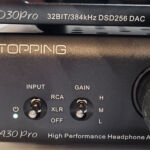
Internals:
This is where it gets complicated. With balanced inputs and an XLR and 4.4mm output, we’d expect the A30Pro to be fully balanced and differential. Put simply, it isn’t what most expect it to be. Technically speaking it does use separate grounds for the 4.4mm and XLR connectors so it meets the technical definition of balanced requiring equal paths to ground, but it is not differential with measurements confirming that the two pins for left channel in the XLR and V+ and ground rather than V+/V- as is typically seen. Technically speaking V+/V- defines a differential amplifier and not a balanced one, but the two are often used interchangeably. Output power is the same regardless of which output is used so there is no gain in potency to be had by using the 4.4 or XLR over the 6.35mm. Thankfully, the A30pro has plenty of power using the 6.35mm so having an assortment of connector types does increase the versatility of the amp as it can power anything from easy to drive dynamics through the big planars. I measured a nearly 3 watts of output power with a 32Ω load and 450mW with a 600Ω load. The heart of the A30Pro is an array of OPA1656 op-amps in a nested feedback composite amplifier circuit. Topping introduced the circuit with the A90 and it has both trickled down into other products and been improved along the way. The design is a hybrid current drive amplifier so it works equally well with headphones with a high current demand and those with a larger voltage demand. Nominal output impedance is less than 0.1Ω. Noise levels are so low that another amplifier has to be placed between the A30pro and the measurement device and then results divided by the amplification factor of the secondary amp. Tested without a secondary amp, even the vaunted Apx555b analyzer is not sensitive enough to measure the noise level. That’s simply amazing for a $349 amp.
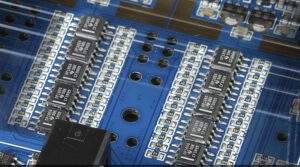
Sound:
I did my listening with a combination of the D30pro that was shipped as part of the Apos Ensemble and with my RME ADI-2 as DAC. Some will find the pairing of the ADI-2 as overkill since it retails for more than 4 times the cost of the A30Pro but I wasnted to really wring out everything the A30pro was capable of so using a DAC that provide crazy detail levels makes sure the Amp isn’t restricting it. One thing is evident regardless of the DAC paired to the A30Pro. It has some power and authority. Bass hits are potent but control is very good as well so the punch is exactly where it should be and doesn’t spread out. Likewise, repeated strikes don’t lose impact as they can with some lesser designs. The A30Pro delivers solid mids as well with good note weight and clarity throughout the range. Treble is well extended as well with no notable roll-off being attributable to the amplifier.
I think the big take away for me was how well the A30pro handled just about everything. No matter what track I played or what headphone I had connected, the A3opro delivered the goods. Big hits were big, quiet passages were quiet, fast complex sequences were delivered effortlessly with no loss of clarity or impact. This is a potent amp and its power handling is definitely its best trait. It won’t make things buttery smooth or tube like, but it can slam with the best of them when called upon.
Comparisons:
It seems only fair to look above and below the A30Pro in the Topping line to see what saving a bit costs feature wise or what spending a bit more gains.
The A50s is the next step below the A30Pro at $249 while the A90 at $499 is the step above it in the line.
The A50s despite the name sounding like it should be a step up is a step behind the A30Pro in both power and clarity even accounting for the balanced/differential output of the A50s. The A50s is at its best when used with balanced inputs and balanced headphones but even in that configuration it lacks some transparency and more than a little power when placed side by side with the A30pro. Both share similar construction and size while not exactly alike is close enough that if one won’t fit the space, the other likely won’t either. The A50s also uses a DC wall wart rather than having an internal power conversion so many pair a linear power supply with it that brings the cost above the A30Pro.
The A90 is the flagship and it shows as it has a more robust feature set than the A30Pro. The A90 has a true pre-amp functionality rather than the simple pass through of the A30pro and also has true differential amplification so is capable of delivering even more potency than the A30Pro. In most respects the A30pro is very much the little brother of the A90 with similar construction and circuit design. The A30p just uses 50% of the A90 as a single ended model while the A90 doubles the circuit count by offering true differential output.
Other common headphone amplifiers at roughly the same price are products like the SMSL SH-9 and Schiit Jotunheim. Both of these offer strong competition for different reasons. The SH-9 is very similar to the A30pro in size, build quality, power, and output. Both are single ended that have balanced output connectors for convenience sake rather than differential outputs. The SH-9 uses the THX 888 module and has similar measurements. Its noise level isn’t quite as good as the A30Pro boasts but still well below the level of audibility. I think the SH-9 sounds a little dryer and has a bit more top end emphasis but with it being slightly less expensive than the A30pro it certainly bears consideration.
The Jotunheim on the other hand is the same price as the A30pro in its most basic configuration and can quickly escalate to double the price if a DAC module or phono pre-amp is included. The upside for the Jotunheim is space conservation and flexibility with balanced power output that exceeds what the A30pro can deliver. In singled ended mode, the Jotunheim is slightly less potent than the A30pro. Some will argue that with only the ESS 9028 and AD5547 DAC modules available that the Jot is somewhat limited but one can always plug in an external dac so this really isn’t a disadvantage. This one comes down to preference as the A30pro measures better than the Jot, but both sound really good to my ear.
Thoughts/Conclusions:
With trickle down tech from the A90, I had expected great things from the A30pro. I will admit finding out it was a single ended amp with balanced connections for convenience sake rather than being a fully differential amp I was a bit disappointed as I had hoped for a true budget A90. On the flip side, the single ended output of the A3opro more than rivals a lot of its competitors balanced output both in power and in quality. One upside to the A30Pro is that you can use whatever jack you like and get the same sound quality out of it. Too often an amp is great balanced but only passable in single ended and although not nearly as common I have seen instances where an amp was better in single ended mode than in balanced. With the A30pro you get the same signature across the range of connections so no worries about buying new cables for all your headphones to match the new amp you bought. Sound wise the A30pro delivers a clean, neutral, well detailed sound with plenty of potency if coming off slightly clinical. Its quite a departure from my tube amps that offer a lot of warmth and coloration and much closer to the ADI-2 or Pass HPA-1 in presentation. That puts it in pretty good company for an amp that costs less than replacement remote for the ADI-2 or a servicing for the HPA-1.
Wiljen
Headphoneus Supremus
Pros: absolutely gorgeous, stage is fantastic, tuning is very engaging
Cons: somewhat source dependent, high cost.
disclaimer: I received the Kennerton Rognir as part of a review tour. I got to keep it for 14 days before sending it on to another reviewer. A big thanks to Andy and to Kennerton for entrusting me with their masterwork. It should be noted that the tour kit differs from the retail kit in that all pad and cable options available are being shipped with the tour kit to give reviewers a chance to try out all of the optional gear. When ordering your own Rognir, all of the options are customizable at time of purchase and additional pads cables etc can be purchased separately if needs change. I have no financial interest in Kennerton or any of its distributors. If you are interested in Kennerton products or the Rognir, visit their website.
Unboxing / Packaging:
The Rognir forgoes a lot of the fancy packaging of other high end models with a more utilitarian packaging but came well packed for travel and everything has its own space so no scratches, dings, marks, or other blemishes occur during the process. The Kit with the review unit includes the standard package which consists of the headphones, eco-leather case, the standard cable (6.3mm TRS) , the Premium 2m Litz caable (dual XLR mini to 4-pin XLR), a custom 4 pin XLR to 6.3mm adapter and the standard pads (ECL-R-01 lambskin). In addition to the standard kit, the tour package adds the 1.5m light weight custom Litz cable (4.4mm TRRS) and three additional styles of pads (R-02 Lambskin, ECL-02 Leather, and R-03 perforated Lambskin) all of which are angled memory foam style pads. Overall it is a very complete kit as shipped. The one item that is missing is a 3.5mm terminated cable which seems odd as it is now the most popular terminator in general circulation. Kennerton doesn’t currently have a 3.5mm terminated cable in stock with only a 6.3mm to 3.5mm adapter in the catalog. I did do some testing using a 3.5mm terminated Black Dragon (5ft) cable I had on hand from a previous audition of a ZMF headphone. The case is unique to Kennerton and offers a padded pocket of the headphones, a separate net pocket for the cable and an optional carry strap for shoulder carry if desired. The only trick they missed was putting a mesh pocket on the outside of the case for a DAP.

Build/Fit:
Having seen pictures of the Rognir and knowing the particulars, I expected a certain heft when removing them from the packing material. Picking them up was the first hint that any preconceived notions I had were about to be wiped out. The Rognir does not feel heavy in the hand or on the head and was extremely comfortable when worn. I expected something more like the Ananda in both weight and comfort but was quite happily wrong on both counts. Knowing the weight is lighter than expected, one could reasonably think well maybe they are smaller than the pictures suggest. Not true either, cups are roughly the same size as the Fostex 610, Beyer T1, or Hifiman He6. Cups are available in a number of woods including bog oak, coffee beech, Purpleheart, Bubinga, walnut, and Teak. Special orders include the stabilized Karelian Birch wood used in the tour pair as well as several other stabilized woods all of which are gorgeous. As much as I like the Rognir’s color and figure, the Thekk in the Karilian Birch on the Kennerton website rings the bell for me and one of the best looking headphones made (imho). The other thing to know is that Kennerton sources raw wood and manages the curing process internally so each pair has been through rigorous testing at multiple stages along the drying, rough cutting, shaping, and finishing processes to ensure the quality and durability of each cup. What Kennerton sells as second quality would pass as 1st quality for a lot of makers, they are that meticulous. Shaping the cups is a multi-stage process in itself with the finished product having 3 graduations from pads to faceplates with a vent immediately above the rear gimbal attachment point on the side of the cup and the mini-XLR connector on the front lower side. the XLR connectors give the cable about a 15º forward tilt. Pads are attached with a flap in slot arrangement similar to Beyerdynamic models (more on those in a bit). Again, the Rognir are fantastic looking and its almost a shame that to really enjoy them you have to put them on where they cannot be enjoyed visually, but read on, they sound even better.


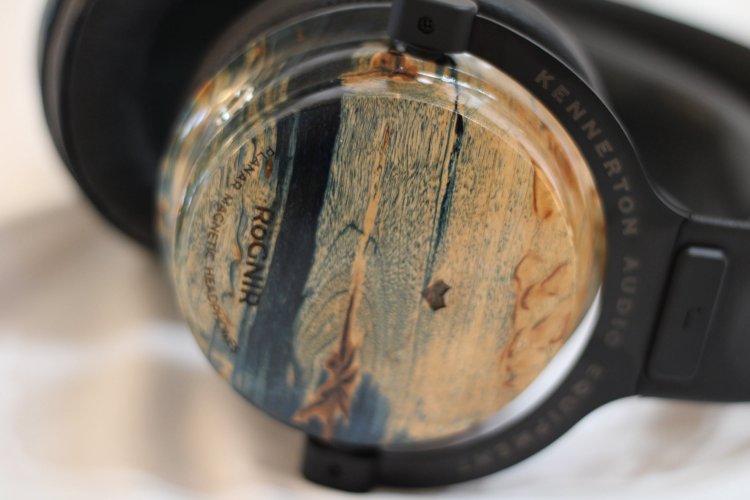


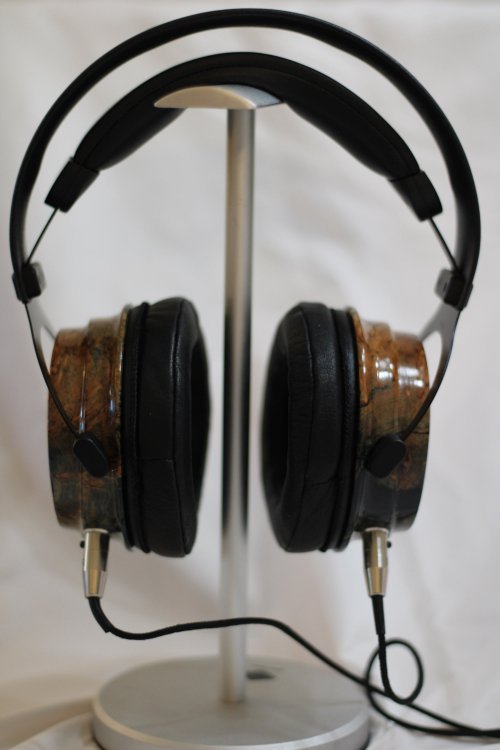
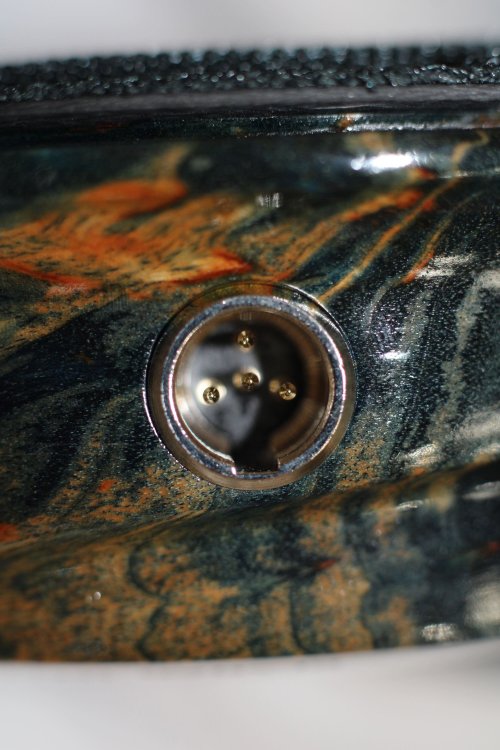
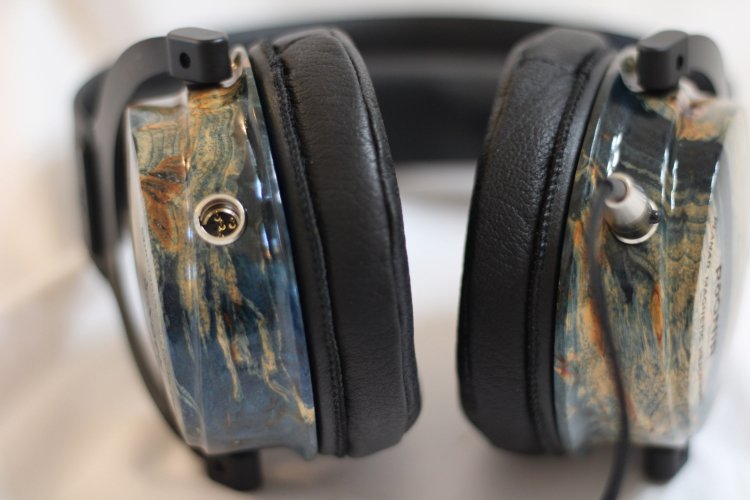


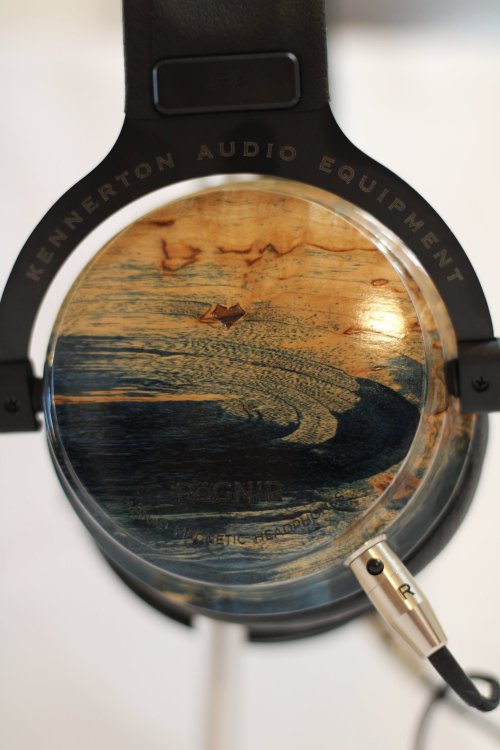
Internals:
The heart of a lot of the Kennerton headphones is a planar magnetic driver designed by Kennerton and built in the same factory that produces parts for Russian military fighter aircraft. Kennerton started out with a typical planar driver and analyzed all the problems with that driver and set about fixing them. The result is a patented driver that minimized the internal structure to reduce reflection and remove unwanted resonances. Materials include a carbon fiber frame and support, 10 semi-circular neodymium bar magnets, and an extremely low mass 20µm polyimide diaphragm. By contrast, a fine human hair has an average thickness of 50µm. The driver in this 80mm planar is remarkably thin. Nominal impedance is listed as 42Ω with a sensitivity of 100 dB/mW at 1kHz (±3dB). The Rognir does need some power to drive well but had no trouble working from sources like the Cayin N3 pro and Kann Alpha using the 4.4mm balanced cable. The Burson Funk Had more than enough power to use with the Rognir with average listening volume only requiring between 25% and 30% on the volume control. I also found the RME ADI-2 had good synergy with the Rognir. Portable sources do get pushed fairly hard so battery life may be less with some other models but listening is still very possible with good headroom even when using mid-fi portable gear.

Cables:
The standard retail package of the Rognir ships with an XLR terminated cable and a 6.3mm Terminated cable in the package. The XLR is a heavy woven cable using 1970s production litz cable with solid oxygen free copper cores and silk insulation. Each strand is coated with an enamel coating to prevent oxidation and insulate the strand and then an outer nylon sleeving is used to that serves as a secondary dielectric and enhances durability as well. It is an extremely well made cable and befitting of the Rognir. An adapter for XLR to 6.3 is also included for those wanting to use the Litz cable with a single ended device. It is a heavy cable and not very suitable for travel use especially when adding the weight of the adapter. The 6.3mm cable provided in the package is a single strand with a similar nylon outer coating and is fairly stiff as well but considerably lighter than the XLR. This comes closer to being portable, but a 3.5 or 4.4 terminated cable would likely be a better option. It does provide a middle ground between the XLR and 6.3 adapter and a 3rd party like the black dragon but is still both longer and heavier than I’d prefer for travel. In addition to the retail kit, the tour package shipped with a 4.4mm terminated litz cable of smaller diameter than the XLR that makes a nice travel option for those with balanced sources. All the cable options use locking mini-XLR connections at the headphone end and as such make a very solid connection. The 4.4mm cable option is not currently listed on Kennerton’s website so if interested you will likely need to contact Kennerton for availability and pricing. I also did some testing with a black dragon 3.5mm terminated cable I had from testing some ZMF headphones with the mini-XLR connectors and found it to be a good travel option for those using single ended gear as the 6.3mm cable with a 6.3 to 3.5 adapter proved both too heavy and too long for legitimate portable use. Most people aren’t going to go very far outside their listening room with a nearly $4000 headphone so this may all be moot anyway.
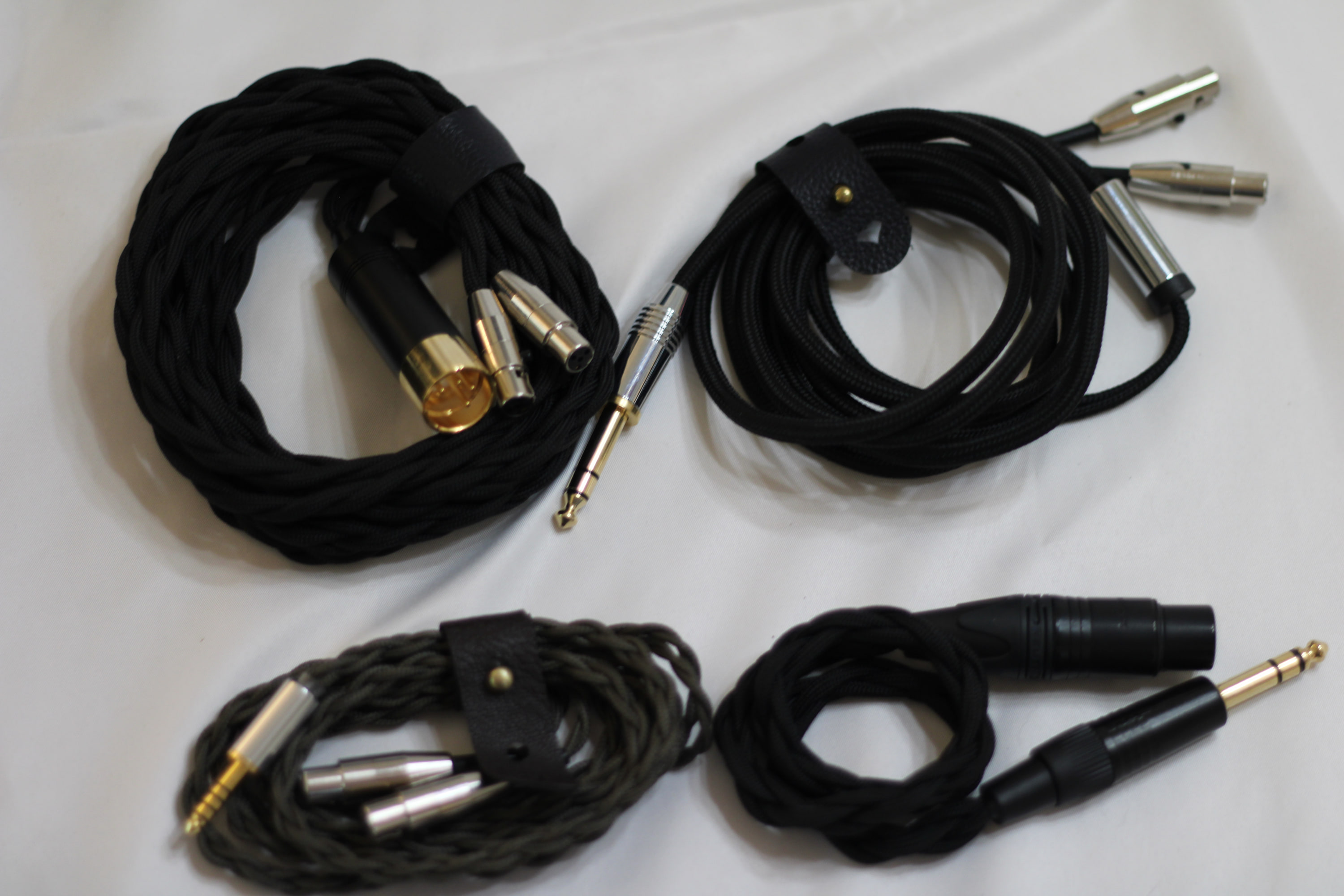
Pads:
The pads on the Rognir deserve some discussion as those shipped with the retail kit are fairly shallow and those with larger ears may well get the sensation that the Rognir is as much an on-ear as an over-ear when using the stock pads. Kennerton shipped 4 sets of pads with the tour sample, stock – lambskin memory foam, Lambskin memory foam angled, Lambskin memory foam perforated angled, and leather memory foam angled pads. Some of these optional pads are slightly thicker and do remove the on-ear feel, but all also have an impact on the sound so one will likely want to audition pads before swapping. Luckily, pads designed for the Beyer T1/T5 and its siblings also fit as did some of the ZMF pads I had on hand so there are a lot of after-market options if the Kennerton branded ones are not a good match for the listener. I did my sound notes while using the stock pads just to keep the playing field level but found that when listening for pleasure a Dekoni made Choice Suede pad from my T1. The suede does reduce isolation some, but had less impact on the signature than some others and gave a great blend of comfort and sound for my tastes.
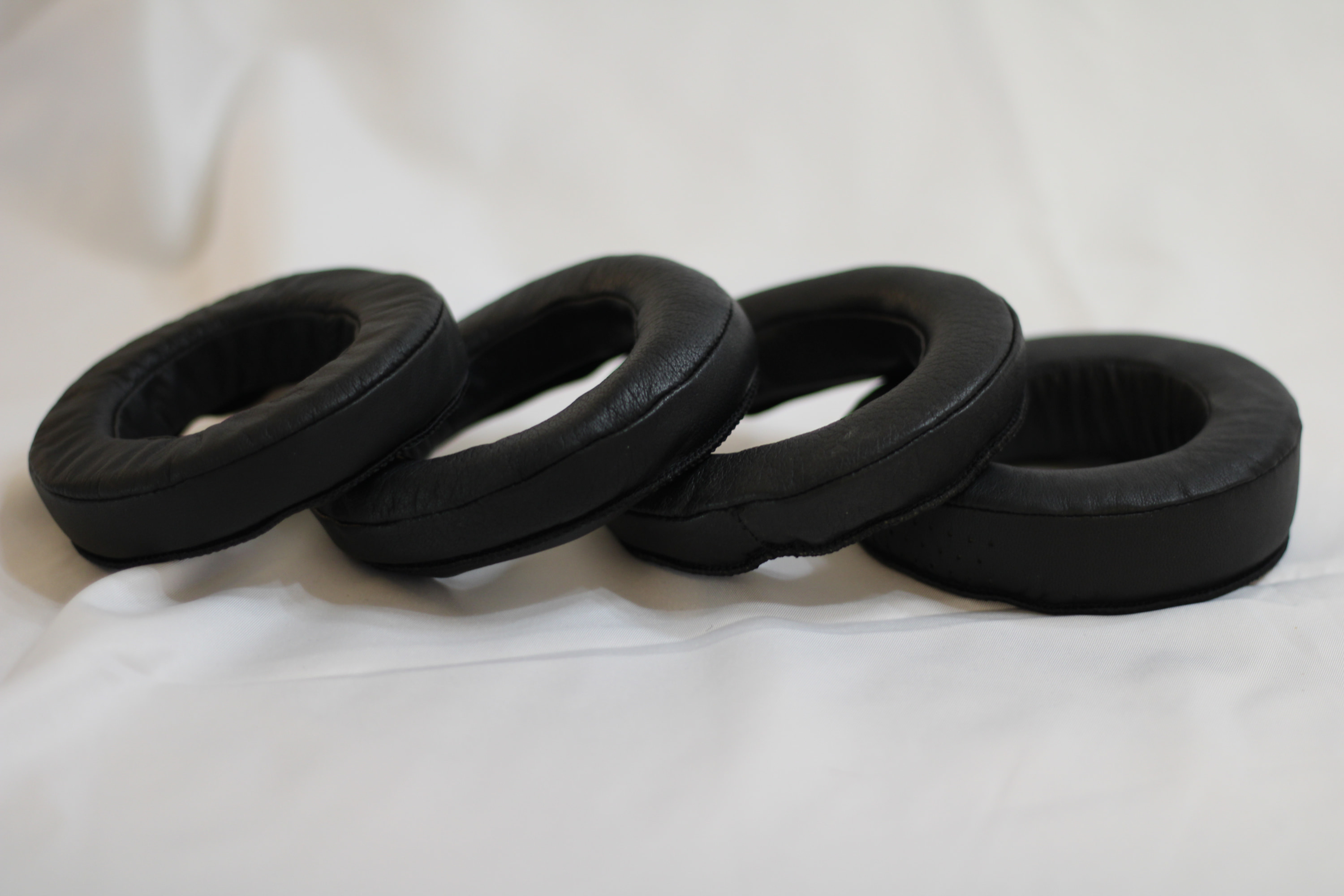
Sound:
First off, the Rognir is a closed back planar that does its level best to convince you it is an open back electrostat. Leave your preconceived notions here as what the Rognir delivers is unlike any closed back planar and maybe any other closed back you’ve heard.
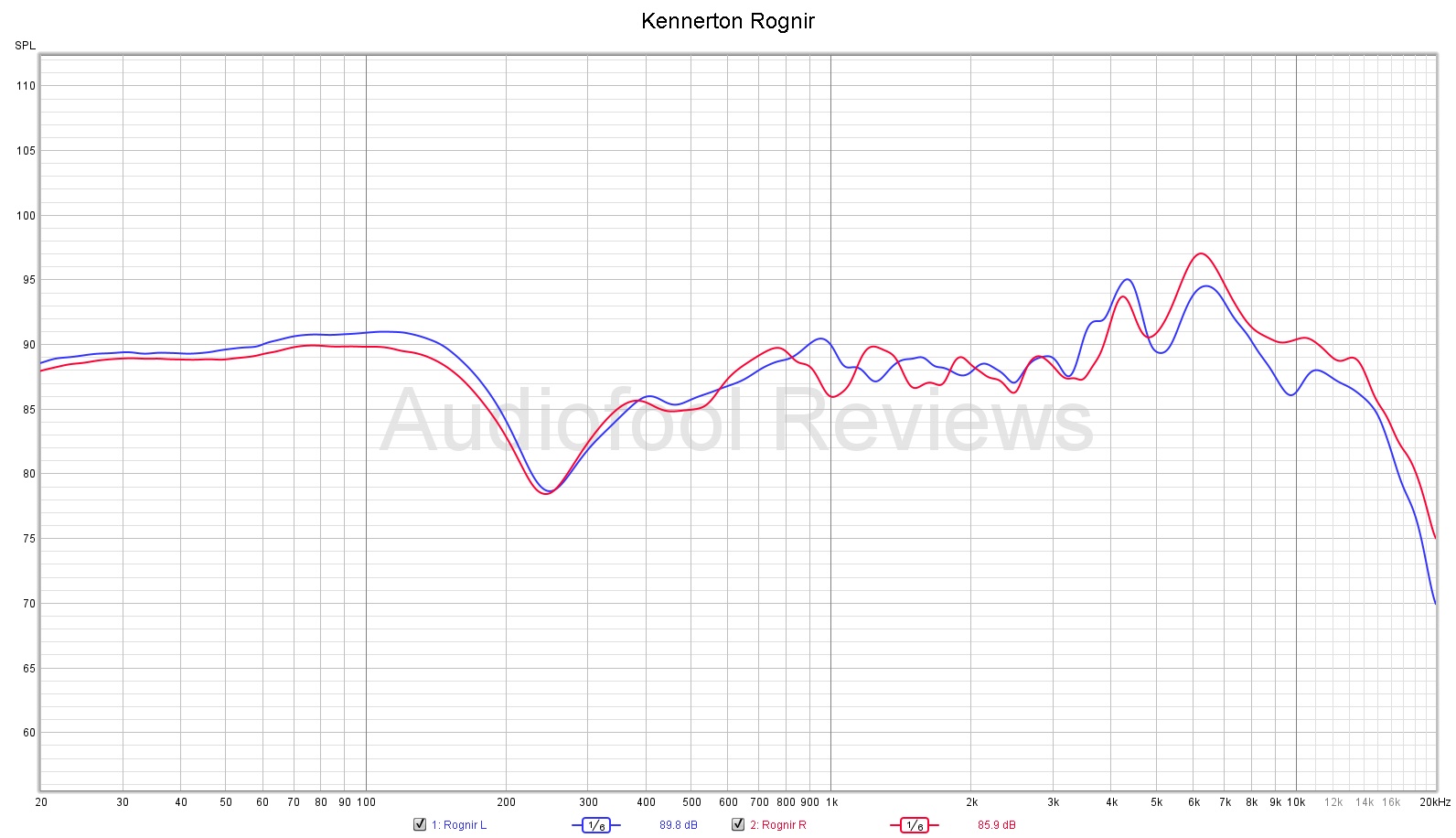
Bass:
Sub-bass is quite good with ample quantity and very good quality. The Rognir is not a basshead model as it doesn’t particularly emphasize the low end, but it does exercise very good control all the way into the sub-bass with the result being more texture and detail than expected all the way down into the 30Hz range before rolling off somewhere in the lower 20Hz range. Mid-bass has equally impressive control and what starts to become more evident is the tonality and timbre are amazingly good. Timpani sounds as realistic as I’ve heard on any headphone and toms and kick drums share in that as well. The combination of control and tone makes the Rognir a pleasure to listen too for bass strings and wind instruments as well as the textural elements that are so often lost or glossed over on other headphones are on full display here. These come as close to a perfect score for bass as I have ever awarded and set the bar for what bass can and should be in a monitoring headphone.
Mids:
The level of control exerted over the bass continues as you move into the lower mids meaning there is no bleed to be found an a very clean transition. The mids are arguably the strongest feature of the Rognir and while the FR chart doesn’t particularly show it, the mids stand out when listening. Male vocals have good tonality with enough weight to sound natural. Cello has great nuance and texture to the sound and guitars have a satisfying sharp edged growl when listening to rock. String tonality which is so hard to get spot on is also extremely good and while maybe a shade behind the LCD-4 in absolute detail is more natural and not quite as strained as the LCD. The Rognir has excellent transparency and seems to deliver all of the detail effortlessly. Female vocals are very mildly forward which helps them cut through the mix, but don’t seem disjointed from the lower voices and as such duets sound better than usual as the two vocals are close enough in space to sound similar to live performance. Again, mids here score near the top of my range and the Rognir does an admirable job.
Treble:
Moving up the frequency range we have bass that is near perfect, mids that are possibly better than the bass, and then we reach the treble with great expectations and for the most part the Rognir delivers. The lower treble is not elevated but maintains the superb detail and clarity found in the lower ranges. Most of the emphasis is in the 4k-7kHz range and it does make the Rognir sound a touch brighter than absolutely necessary at times. The nice thing about this tuning is it avoids sibilance and stridency that sometimes come with a lower treble push an still provides plenty of air and top end to keep things from feeling closed in. Snare rattle is nice and sharp and cymbals have good energy as well with an ocassional hint of metallic sound that may well be the fault of the recording rather than headphone. I want to believe that the Rognir is near perfect, but I did find long listening sessions somewhat fatiguing if using a source that was at all bright paired with it. For the Rognir to deliver its best, it needs a source with a little warmth and a treble that isn’t elevated as a cooler/brighter source can make the Rognir a little too bright for me.
Soundstage / Imaging:
I mentioned earlier that the Rognir was a closed back planar doing its best to make the listener believe it was an open back electrostat and the soundstage is the place that is most evident. The Rognir has amazingly good stage dimensions with good depth and nearly equal width and plenty of height thrown into the mix. It is about as holographic a stage as one could ask for and places the listener in a 3D space where they are the center of the musical world and sounds can seemingly come in from all angles and directions from various distances away. Seating the orchestra is very staright forward with no gaps or overlaps. Echoes are easily detected and one can pretty clearly define the direction and distance of the wall from the stage when listening to Cowboy Junkies Trinity Sessions.
Layering is extremely good and both instrument separation and stereo separation are what you’d expect from a top of the line headphone albeit you’d likely expect it from an open-backed one. Imaging is equally impressive with very tight definition and placement and easy tracking of motions around the stage.
Likewise, try as I might, I simply don’t own a track fast enough and complex enough to cause the Rognir to trip up. I could not induce and audible compression in the lows despite trying hard to do so.
Synergy:
I tried to mate the Rognir with a bit of everything just to see what it liked and what it didn’t. In the desktop arena, I used an Xduoo Ta-30 (Mullard pre-amp tubes) , a Topping D30 Pro / A30 Pro pair, a Burson Swing/Funk pair, an Auris Euterpe, and the RME ADI-2 Pro FS R BE. For portable testing, I used the AK Kann Alpha, Dethonray DTR1, Sony WM1A, Earmen TR-amp, and Cayin N3 Pro. While it is very hard to argue that the Rognir was poor with any of the sources it definitely has its preferences.
Top pairings in the desktop category go to the Auris Euterpe. With the right tubes, this is a phenomenal pairing. The Ta-30 was also quite good, but the brute power of the ta-30 is simply not needed. Middle of the pack was the Topping pairing, and the Burson Pairing (with the V6 Vivid Op-amps throughout) . These both had slightly less warmth than the tubes but still enough to really make the most of the Rognir. For detail retrieval, the Burson pairing was likely the best of the lot. The RME brought up the rear as while it provided detail not unlike the Burson, it was simply a bit too cool in its voicing and left the Rognir sounding a bit brighter and thinner especially at the top end. I love my ADI-2 but this is a case where not every great piece of gear is fantastic together.
Top pairings in the portable category went to the Earmen TR-amp with its magical ability to add a bit of warmth and thickness without losing detail, followed closely by the AK and the Dethonray. Any one of these 3 makes a wonderful travel companion for the Rognir. The N3 pro was also very good when in tube/triode mode but loses out to the others as its detail retrieval is not quite on par. When in solid state mode (the only option with balanced connections on the N3 Pro) it is not as good a pairing and falls only slightly better than the Sony WM1A that finished in last place. The WM1A has long been known for being a somewhat cool sounding analytical device and it came through in the Rognir as a bit of excess brightness. Adding an Oriolus Ba300 between the WM1A and Rognir makes for a fabulous pairing but brings more cost to an already expensive chain of gear.
Thoughts / Conclusion:
I expected good things when I was told I would get a chance to try the Rognir, but I didn’t expect what I got. I’ve had several big planars both open and closed back and thought I had a pretty good idea of what was possible. I expected great detail, a mildly elevated and somewhat thickened bass due to reflection, followed by solid mids (if maybe a touch thin) and a mildly assertive treble as this is the formulaic closed planar. I got the great detail, I got better than anticipated lows with fantastic control and texture, the mids were among the best I’ve heard regardless of type, and the treble well the treble can be mildly assertive but when paired with the right source is also extremely well detailed and transparent. In short, It is a closed back planar that one could honestly mistake for an open back electrostat in a blind test. In a lot of ways the Rognir sounds more like an open-back than a closed. Bass has none of the thickening we normally see and Stage is large, 3D, and well proportioned.
The level of control and detail is also among the best I have heard and I would go so far as to say the Stax 007 doesn’t offer any better detail retrieval than can be found in the Rognir. Sadly my time with the 009 has been limited enough that I don’t feel comfortable speaking to that comparison. I found the Rognir to be similar in some ways to the Empyrean as both share great musicality and an effortless delivery. The Empyrean might be a touch smoother delivery while I think the detail is slightly better on the Rognir. I keep coming back to an LCD-4 comparison as the two share a similar market and a lot of similar tech. In some ways, the LCD-4 can be considered the ultimate monitoring headphone but for me it simply isn’t a lot of fun to listen to. Technically it is about as good as they get, but it lacks the engagement that the Rognir delivers without giving up much in the process. The Rognir is a special headphone and likely to be polarizing. I came away feeling it was in the top 5 I have ever listened to for long enough to rate in about every possible category from kit, to bass, to stage, to OMG they are gorgeous. There is something refreshing about the tuning that I really like as well. Too many of the top models have gone for better and better technicalities but lose the engagement and musicality in the process. In that regard the Rognir offers something even the Empyrean didn’t, I can listen at full volume and thoroughly enjoy my music while my wife lays sleeping on the couch with me. Its only a closed back when you look at it, when you put it on it magically becomes a concert hall.
Unboxing / Packaging:
The Rognir forgoes a lot of the fancy packaging of other high end models with a more utilitarian packaging but came well packed for travel and everything has its own space so no scratches, dings, marks, or other blemishes occur during the process. The Kit with the review unit includes the standard package which consists of the headphones, eco-leather case, the standard cable (6.3mm TRS) , the Premium 2m Litz caable (dual XLR mini to 4-pin XLR), a custom 4 pin XLR to 6.3mm adapter and the standard pads (ECL-R-01 lambskin). In addition to the standard kit, the tour package adds the 1.5m light weight custom Litz cable (4.4mm TRRS) and three additional styles of pads (R-02 Lambskin, ECL-02 Leather, and R-03 perforated Lambskin) all of which are angled memory foam style pads. Overall it is a very complete kit as shipped. The one item that is missing is a 3.5mm terminated cable which seems odd as it is now the most popular terminator in general circulation. Kennerton doesn’t currently have a 3.5mm terminated cable in stock with only a 6.3mm to 3.5mm adapter in the catalog. I did do some testing using a 3.5mm terminated Black Dragon (5ft) cable I had on hand from a previous audition of a ZMF headphone. The case is unique to Kennerton and offers a padded pocket of the headphones, a separate net pocket for the cable and an optional carry strap for shoulder carry if desired. The only trick they missed was putting a mesh pocket on the outside of the case for a DAP.

Build/Fit:
Having seen pictures of the Rognir and knowing the particulars, I expected a certain heft when removing them from the packing material. Picking them up was the first hint that any preconceived notions I had were about to be wiped out. The Rognir does not feel heavy in the hand or on the head and was extremely comfortable when worn. I expected something more like the Ananda in both weight and comfort but was quite happily wrong on both counts. Knowing the weight is lighter than expected, one could reasonably think well maybe they are smaller than the pictures suggest. Not true either, cups are roughly the same size as the Fostex 610, Beyer T1, or Hifiman He6. Cups are available in a number of woods including bog oak, coffee beech, Purpleheart, Bubinga, walnut, and Teak. Special orders include the stabilized Karelian Birch wood used in the tour pair as well as several other stabilized woods all of which are gorgeous. As much as I like the Rognir’s color and figure, the Thekk in the Karilian Birch on the Kennerton website rings the bell for me and one of the best looking headphones made (imho). The other thing to know is that Kennerton sources raw wood and manages the curing process internally so each pair has been through rigorous testing at multiple stages along the drying, rough cutting, shaping, and finishing processes to ensure the quality and durability of each cup. What Kennerton sells as second quality would pass as 1st quality for a lot of makers, they are that meticulous. Shaping the cups is a multi-stage process in itself with the finished product having 3 graduations from pads to faceplates with a vent immediately above the rear gimbal attachment point on the side of the cup and the mini-XLR connector on the front lower side. the XLR connectors give the cable about a 15º forward tilt. Pads are attached with a flap in slot arrangement similar to Beyerdynamic models (more on those in a bit). Again, the Rognir are fantastic looking and its almost a shame that to really enjoy them you have to put them on where they cannot be enjoyed visually, but read on, they sound even better.











Internals:
The heart of a lot of the Kennerton headphones is a planar magnetic driver designed by Kennerton and built in the same factory that produces parts for Russian military fighter aircraft. Kennerton started out with a typical planar driver and analyzed all the problems with that driver and set about fixing them. The result is a patented driver that minimized the internal structure to reduce reflection and remove unwanted resonances. Materials include a carbon fiber frame and support, 10 semi-circular neodymium bar magnets, and an extremely low mass 20µm polyimide diaphragm. By contrast, a fine human hair has an average thickness of 50µm. The driver in this 80mm planar is remarkably thin. Nominal impedance is listed as 42Ω with a sensitivity of 100 dB/mW at 1kHz (±3dB). The Rognir does need some power to drive well but had no trouble working from sources like the Cayin N3 pro and Kann Alpha using the 4.4mm balanced cable. The Burson Funk Had more than enough power to use with the Rognir with average listening volume only requiring between 25% and 30% on the volume control. I also found the RME ADI-2 had good synergy with the Rognir. Portable sources do get pushed fairly hard so battery life may be less with some other models but listening is still very possible with good headroom even when using mid-fi portable gear.

Cables:
The standard retail package of the Rognir ships with an XLR terminated cable and a 6.3mm Terminated cable in the package. The XLR is a heavy woven cable using 1970s production litz cable with solid oxygen free copper cores and silk insulation. Each strand is coated with an enamel coating to prevent oxidation and insulate the strand and then an outer nylon sleeving is used to that serves as a secondary dielectric and enhances durability as well. It is an extremely well made cable and befitting of the Rognir. An adapter for XLR to 6.3 is also included for those wanting to use the Litz cable with a single ended device. It is a heavy cable and not very suitable for travel use especially when adding the weight of the adapter. The 6.3mm cable provided in the package is a single strand with a similar nylon outer coating and is fairly stiff as well but considerably lighter than the XLR. This comes closer to being portable, but a 3.5 or 4.4 terminated cable would likely be a better option. It does provide a middle ground between the XLR and 6.3 adapter and a 3rd party like the black dragon but is still both longer and heavier than I’d prefer for travel. In addition to the retail kit, the tour package shipped with a 4.4mm terminated litz cable of smaller diameter than the XLR that makes a nice travel option for those with balanced sources. All the cable options use locking mini-XLR connections at the headphone end and as such make a very solid connection. The 4.4mm cable option is not currently listed on Kennerton’s website so if interested you will likely need to contact Kennerton for availability and pricing. I also did some testing with a black dragon 3.5mm terminated cable I had from testing some ZMF headphones with the mini-XLR connectors and found it to be a good travel option for those using single ended gear as the 6.3mm cable with a 6.3 to 3.5 adapter proved both too heavy and too long for legitimate portable use. Most people aren’t going to go very far outside their listening room with a nearly $4000 headphone so this may all be moot anyway.

Pads:
The pads on the Rognir deserve some discussion as those shipped with the retail kit are fairly shallow and those with larger ears may well get the sensation that the Rognir is as much an on-ear as an over-ear when using the stock pads. Kennerton shipped 4 sets of pads with the tour sample, stock – lambskin memory foam, Lambskin memory foam angled, Lambskin memory foam perforated angled, and leather memory foam angled pads. Some of these optional pads are slightly thicker and do remove the on-ear feel, but all also have an impact on the sound so one will likely want to audition pads before swapping. Luckily, pads designed for the Beyer T1/T5 and its siblings also fit as did some of the ZMF pads I had on hand so there are a lot of after-market options if the Kennerton branded ones are not a good match for the listener. I did my sound notes while using the stock pads just to keep the playing field level but found that when listening for pleasure a Dekoni made Choice Suede pad from my T1. The suede does reduce isolation some, but had less impact on the signature than some others and gave a great blend of comfort and sound for my tastes.

Sound:
First off, the Rognir is a closed back planar that does its level best to convince you it is an open back electrostat. Leave your preconceived notions here as what the Rognir delivers is unlike any closed back planar and maybe any other closed back you’ve heard.

Bass:
Sub-bass is quite good with ample quantity and very good quality. The Rognir is not a basshead model as it doesn’t particularly emphasize the low end, but it does exercise very good control all the way into the sub-bass with the result being more texture and detail than expected all the way down into the 30Hz range before rolling off somewhere in the lower 20Hz range. Mid-bass has equally impressive control and what starts to become more evident is the tonality and timbre are amazingly good. Timpani sounds as realistic as I’ve heard on any headphone and toms and kick drums share in that as well. The combination of control and tone makes the Rognir a pleasure to listen too for bass strings and wind instruments as well as the textural elements that are so often lost or glossed over on other headphones are on full display here. These come as close to a perfect score for bass as I have ever awarded and set the bar for what bass can and should be in a monitoring headphone.
Mids:
The level of control exerted over the bass continues as you move into the lower mids meaning there is no bleed to be found an a very clean transition. The mids are arguably the strongest feature of the Rognir and while the FR chart doesn’t particularly show it, the mids stand out when listening. Male vocals have good tonality with enough weight to sound natural. Cello has great nuance and texture to the sound and guitars have a satisfying sharp edged growl when listening to rock. String tonality which is so hard to get spot on is also extremely good and while maybe a shade behind the LCD-4 in absolute detail is more natural and not quite as strained as the LCD. The Rognir has excellent transparency and seems to deliver all of the detail effortlessly. Female vocals are very mildly forward which helps them cut through the mix, but don’t seem disjointed from the lower voices and as such duets sound better than usual as the two vocals are close enough in space to sound similar to live performance. Again, mids here score near the top of my range and the Rognir does an admirable job.
Treble:
Moving up the frequency range we have bass that is near perfect, mids that are possibly better than the bass, and then we reach the treble with great expectations and for the most part the Rognir delivers. The lower treble is not elevated but maintains the superb detail and clarity found in the lower ranges. Most of the emphasis is in the 4k-7kHz range and it does make the Rognir sound a touch brighter than absolutely necessary at times. The nice thing about this tuning is it avoids sibilance and stridency that sometimes come with a lower treble push an still provides plenty of air and top end to keep things from feeling closed in. Snare rattle is nice and sharp and cymbals have good energy as well with an ocassional hint of metallic sound that may well be the fault of the recording rather than headphone. I want to believe that the Rognir is near perfect, but I did find long listening sessions somewhat fatiguing if using a source that was at all bright paired with it. For the Rognir to deliver its best, it needs a source with a little warmth and a treble that isn’t elevated as a cooler/brighter source can make the Rognir a little too bright for me.
Soundstage / Imaging:
I mentioned earlier that the Rognir was a closed back planar doing its best to make the listener believe it was an open back electrostat and the soundstage is the place that is most evident. The Rognir has amazingly good stage dimensions with good depth and nearly equal width and plenty of height thrown into the mix. It is about as holographic a stage as one could ask for and places the listener in a 3D space where they are the center of the musical world and sounds can seemingly come in from all angles and directions from various distances away. Seating the orchestra is very staright forward with no gaps or overlaps. Echoes are easily detected and one can pretty clearly define the direction and distance of the wall from the stage when listening to Cowboy Junkies Trinity Sessions.
Layering is extremely good and both instrument separation and stereo separation are what you’d expect from a top of the line headphone albeit you’d likely expect it from an open-backed one. Imaging is equally impressive with very tight definition and placement and easy tracking of motions around the stage.
Likewise, try as I might, I simply don’t own a track fast enough and complex enough to cause the Rognir to trip up. I could not induce and audible compression in the lows despite trying hard to do so.
Synergy:
I tried to mate the Rognir with a bit of everything just to see what it liked and what it didn’t. In the desktop arena, I used an Xduoo Ta-30 (Mullard pre-amp tubes) , a Topping D30 Pro / A30 Pro pair, a Burson Swing/Funk pair, an Auris Euterpe, and the RME ADI-2 Pro FS R BE. For portable testing, I used the AK Kann Alpha, Dethonray DTR1, Sony WM1A, Earmen TR-amp, and Cayin N3 Pro. While it is very hard to argue that the Rognir was poor with any of the sources it definitely has its preferences.
Top pairings in the desktop category go to the Auris Euterpe. With the right tubes, this is a phenomenal pairing. The Ta-30 was also quite good, but the brute power of the ta-30 is simply not needed. Middle of the pack was the Topping pairing, and the Burson Pairing (with the V6 Vivid Op-amps throughout) . These both had slightly less warmth than the tubes but still enough to really make the most of the Rognir. For detail retrieval, the Burson pairing was likely the best of the lot. The RME brought up the rear as while it provided detail not unlike the Burson, it was simply a bit too cool in its voicing and left the Rognir sounding a bit brighter and thinner especially at the top end. I love my ADI-2 but this is a case where not every great piece of gear is fantastic together.
Top pairings in the portable category went to the Earmen TR-amp with its magical ability to add a bit of warmth and thickness without losing detail, followed closely by the AK and the Dethonray. Any one of these 3 makes a wonderful travel companion for the Rognir. The N3 pro was also very good when in tube/triode mode but loses out to the others as its detail retrieval is not quite on par. When in solid state mode (the only option with balanced connections on the N3 Pro) it is not as good a pairing and falls only slightly better than the Sony WM1A that finished in last place. The WM1A has long been known for being a somewhat cool sounding analytical device and it came through in the Rognir as a bit of excess brightness. Adding an Oriolus Ba300 between the WM1A and Rognir makes for a fabulous pairing but brings more cost to an already expensive chain of gear.
Thoughts / Conclusion:
I expected good things when I was told I would get a chance to try the Rognir, but I didn’t expect what I got. I’ve had several big planars both open and closed back and thought I had a pretty good idea of what was possible. I expected great detail, a mildly elevated and somewhat thickened bass due to reflection, followed by solid mids (if maybe a touch thin) and a mildly assertive treble as this is the formulaic closed planar. I got the great detail, I got better than anticipated lows with fantastic control and texture, the mids were among the best I’ve heard regardless of type, and the treble well the treble can be mildly assertive but when paired with the right source is also extremely well detailed and transparent. In short, It is a closed back planar that one could honestly mistake for an open back electrostat in a blind test. In a lot of ways the Rognir sounds more like an open-back than a closed. Bass has none of the thickening we normally see and Stage is large, 3D, and well proportioned.
The level of control and detail is also among the best I have heard and I would go so far as to say the Stax 007 doesn’t offer any better detail retrieval than can be found in the Rognir. Sadly my time with the 009 has been limited enough that I don’t feel comfortable speaking to that comparison. I found the Rognir to be similar in some ways to the Empyrean as both share great musicality and an effortless delivery. The Empyrean might be a touch smoother delivery while I think the detail is slightly better on the Rognir. I keep coming back to an LCD-4 comparison as the two share a similar market and a lot of similar tech. In some ways, the LCD-4 can be considered the ultimate monitoring headphone but for me it simply isn’t a lot of fun to listen to. Technically it is about as good as they get, but it lacks the engagement that the Rognir delivers without giving up much in the process. The Rognir is a special headphone and likely to be polarizing. I came away feeling it was in the top 5 I have ever listened to for long enough to rate in about every possible category from kit, to bass, to stage, to OMG they are gorgeous. There is something refreshing about the tuning that I really like as well. Too many of the top models have gone for better and better technicalities but lose the engagement and musicality in the process. In that regard the Rognir offers something even the Empyrean didn’t, I can listen at full volume and thoroughly enjoy my music while my wife lays sleeping on the couch with me. Its only a closed back when you look at it, when you put it on it magically becomes a concert hall.
Attachments
GAJA71
I'm interested to know from Rognir owners, what they have them powered by? For the record, I settled on a Burson Soloist X3 which is sublime.
Gevi
Great review and I appreciate taking more time to compare them on various DAC/DAP
I have been mostly searching for a portable pairing and I agree that Earmen TR-amp may be the way to go
I have been mostly searching for a portable pairing and I agree that Earmen TR-amp may be the way to go
Wiljen
Headphoneus Supremus
Pros: Tons of function in a small package, Good power, App works well to control
Cons: Jack of all trades, master….
disclaimer: I have owned and enjoyed an original Cyrus One in the past so was interested in trying the OneHD when the tour was formed. I received the Cyrus One HD as part of the review tour and have no financial interest in Cyrus or any of its distributors. I spent two weeks with the One HD as my daily driver before sending it on to the next reviewer in line and received no compensation of any form for this review. If you have an interest in the One HD or other Cyrus products, please see their website or their USA distributor AmericaHifi. Retail price of the Cyrus One HD is $1499.
Packaging:
The One HD is a large unit and as such comes packed for travel and not for a retail shelf. The unit was well packed in form-fitted foam blocks with the manual, driver CD, and power cable all well packed into a separate box in the shipping container to avoid contact with the unit and scratches that might occur as a result. If purchasing the One HD know that no interconnects are provided with the unit so sets of RCA cables, a USB, optical or coax cable for inputs, and a set of speaker cables will be needed to complete the installation. The unit does not ship with a remote either, but does have an app available on the Google Play Store and the Apple Store for use with the unit.
Build:
Again, this is a fairly plain looking amp. It is rougly half width and full depth when compared to most full-sized audio components with a well built metal chassis. The two halves of the chassis are held together by hex-nuts with a pair on the lead edge of the sides that also lock the faceplate into position and a single hex-nut at the rear of each side. The faceplate lifts out of slots in the metal frame and is connected to the main board by ribbon cable which makes the chassis easy to open for cleaning or should maintenance be required. The faceplate itself is plastic and high gloss while the remaining shell is powder coated and a more matte satin finish. There are two large knobs on the front that each have a partial circle of LEDs surrounding them. The left knob is the selector and the right is volume control. the power button is tucked beneath the left knob while the headphone jack is at the far right beneath the volume adjustment. At the rear, speaker binding posts (dual type banana/spade) occupy both outside edges with power connection and inputs occupying the middle space. The Unit has USB, coaxial, and optical digital inputs as well as 3 RCA inputs, a MM phono stage input with ground connector, and a single pair of RCA outputs. The other prominent feature in looking at the unit is a single heavy bolt through the center bottom of the chassis that mounts the monster sized torodial transformer that is the heart of the linear power supply used in the One and One HD.

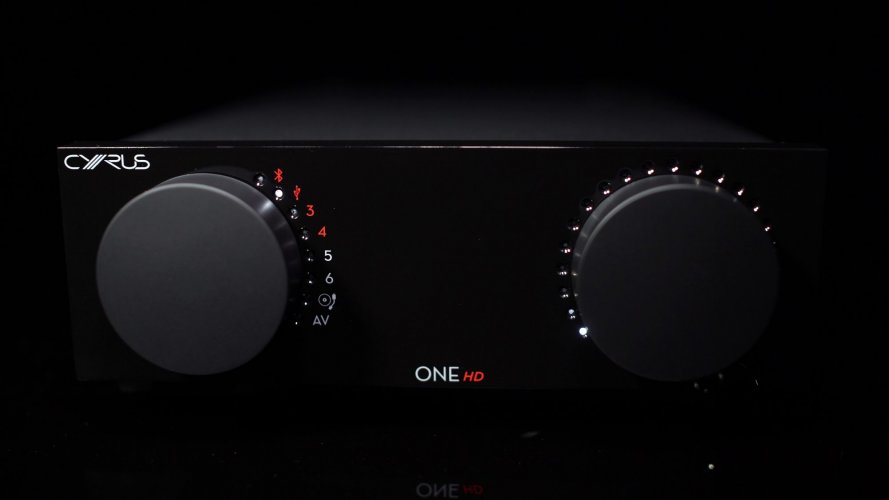




Internals:
This is the hardest section to write for this unit as the One HD has a lot going on. It starts with the previously mentioned large toroidal transformer that feeds the power circuitry and feeds everything else hiding inside. The digital inputs feed a Burr Brown 17xx series dac chip which allows the USB input to handle up to 32 bit data at up to 192kHz. The Coaxial and Optical inputs are able to handle up to 24/192 as well. In addition the OneHD also supports bluetooth input using AptX HD. Three sets of analog inputs in addition to the Moving Magnet phono stage round out the input options. Other than an AM/FM tuner, the One HD covers pretty much all the possible bases. Regardless of which input you choose, they are fed to class D power amplifiers circuits of Cyrus own design if using the speaker outputs or to a class A/B amplifier if using the headphone jack. The speaker taps also utilize an impedance sensing mechanism. This can be thought of as a feedback loop where a micro-controller analyzes the high frequency impedance of the connected speaker and adjusts to match the impedance the speaker needs to perform well. This is one of the things often criticized with class-D amplification, the reconstruction filters in class-D tend to cause impedance mismatches and deviations. That mismatch is why speakers like my Magnepans recommend against using a class D amplifier to power them. The One HD although a little light on power at a 100W per channel, can indeed be used safely with the Magnepans and actually drove them a bit better than I expected it would.
Even a computer controlled impedance matching system has its limits though and with speakers generally ranging between 4 and 16 Ohms, its not realistic to expect that same circuit to be optimized for headphone use. So instead of even trying to tune the class D system to handle 600Ω AKGs, or 300Ω Sennheisers the One HD instead redirects the power to a class A/B headphone amplifier that is more suited to the task at hand.
The One HD also has a mini-USB connector on the rear for servicing or updates so as improvements to the micro-controllers code become available, the One HD can take full advantage rather than becoming obsolete.

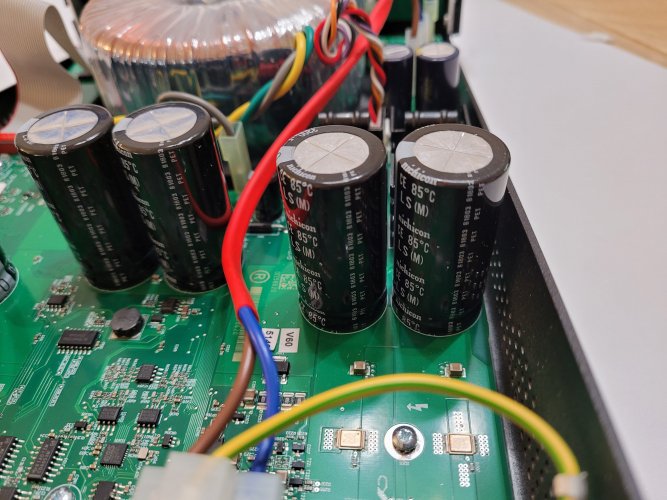

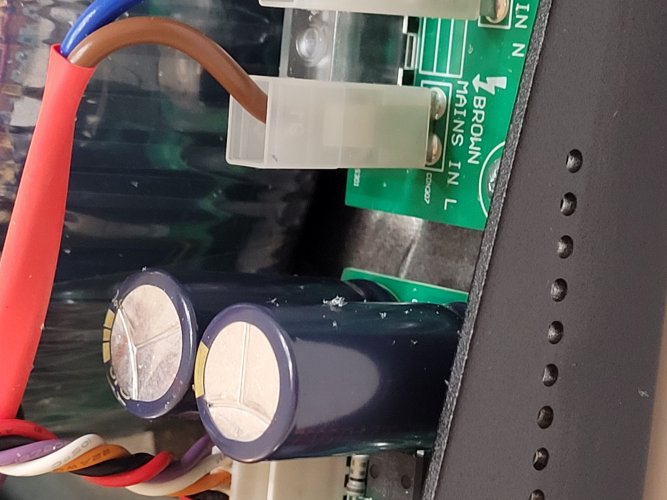

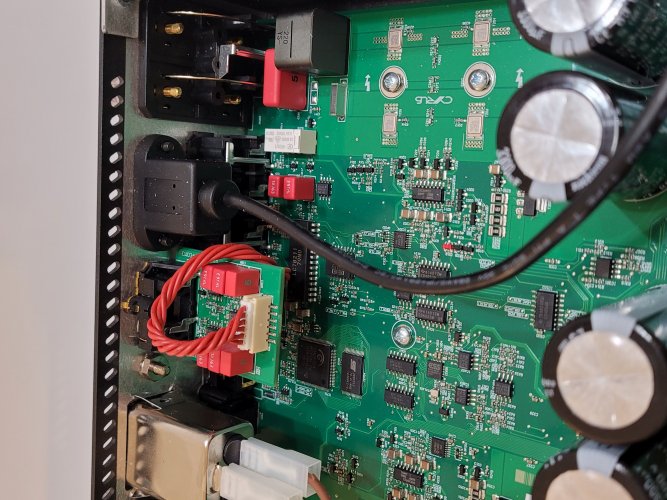

Controls / Bluetooth:
This is where we part ways with what I thought I knew about the Cryus One HD. The older model came with a remote that was fairly simple and uncluttered but gave the user quick access to switch sources or adjust volume. With the One HD gaining Bluetooth input, it makes perfect sense that the remote would be migrated to an app for your smartphone or tablet and that is exactly what has happened. The App is titled the Cyrus One Remote in the Google and Apple stores and gives the user the same ability as was found in the earlier generation remote. The remote is still simple with options to adjust which source is in use, adjust volume and set maximum volume, adjust balance, LED brightness, and mute.
I found pairing the One HD very straight forward and connectivity was quite good once established. With my LG phone using AptX HD latency was minimal and I only lost connection to the One HD when line of sight was lost and obstacles blocked the signal. Pairing a new source was equally easy once the connection from the previous source was dropped.
Sound:
(Speaker Taps)
Having owned an earlier model Cyrus One, I had some expectations going in as to what I would hear and for the most part I was correct in my assumptions. The One HD has good resolution and power as long as not matched with something too far outside its comfort zone. Although I did try it with my Magnepans, I did my critical listening with a pair of Klipsch Heresy IIs that it is more suited to driving. The One HD has a very clean detailed sound with good texture and enough body to give vocals a natural weight to them. The nicest thing is the One HD does seem to vanish into the background and picking out any coloration that is contributed to the sound by the amp was difficult. The other nice feature was the signature does not seem to change appreciably when switching between optical, coaxial, and USB as can sometimes be the case as well. If there is one knock here, it is that the OneHD does not have the dynamic range that something like my big Levinson can deliver, but remembering the price point of the One HD and the fact that the One HD is also a pre-amp, a dac, and a headphone amp, this is hardly a stumbling block.
(Headphones)
When switching to the headphone amp, many of those same qualities come through. Detail is very good with lots of texture and nuance to the sound although there is a touch more coloration here than in the speaker amp. Here the One HD does show a slight upper-mid lift that translates into female vocals being slightly in front of their male counterparts. I didn’t find the lift distracting though as it is fairly small and if anything it does make the One HD a better listen for vocal music and choral arrangements as they really stand out nicely. There is plenty of headroom here and dynamic range so the issue seen on the speaker taps may be more my choice of speaker than anything inherent to the One HD.
Interestingly, The One HD shares the same DAC family with both my Bel Canto DAC in my home system and with the Ifi iDSD Neo that I recently reviewed and still have access to. Although all three share a dac, the Bel Canto sounds more analytical and has less coloration than either the One HD or the Neo which both sport a similar lift in the upper mids. The One HD splits the difference in clarity between the Neo which loses a little detail to musicality and the Bel Canto that is a bit more revealing but also a bit less forgiving.
Conclusions:
The Cyrus One HD has to be looked at holistically to be fully appreciated. The amp alone is quite good, but not quite as good as some at the $1500 price point. Likewise, the phono stage is good, but can be bettered by other stand alone pre-amps. The Headphone amp is impressive but again at $1500 is should be fairly good. When we take all of those things into consideration though, the One HD comes into its own. None of those devices that I mentioned out-doing the One HD have the feature set to compete with it, and all would require a lot more space and interconnects. What the One HD brings to the party is a small, all-in-one package that offers solid performance in multiple categories rather than dedicating its efforts to be the best at only part of the equation. The One HD would make a great office companion or in a den or bedroom where space is limited. Those looking for a unit that can do it all with a minimum of fuss will be pleased with the One HD’s simplicity. I could build a better system, but not for the asking price of the One HD, and certainly not with the ease of setup and use of it. Like I said, look at the One HD holistically and it can be almost therapeutic.
Packaging - 7.5/10
Build Quality - 8/10
Sound Quality - 8/10
Controls - 9/10
Connectivity - 8/10
8.1/10
Packaging:
The One HD is a large unit and as such comes packed for travel and not for a retail shelf. The unit was well packed in form-fitted foam blocks with the manual, driver CD, and power cable all well packed into a separate box in the shipping container to avoid contact with the unit and scratches that might occur as a result. If purchasing the One HD know that no interconnects are provided with the unit so sets of RCA cables, a USB, optical or coax cable for inputs, and a set of speaker cables will be needed to complete the installation. The unit does not ship with a remote either, but does have an app available on the Google Play Store and the Apple Store for use with the unit.
Build:
Again, this is a fairly plain looking amp. It is rougly half width and full depth when compared to most full-sized audio components with a well built metal chassis. The two halves of the chassis are held together by hex-nuts with a pair on the lead edge of the sides that also lock the faceplate into position and a single hex-nut at the rear of each side. The faceplate lifts out of slots in the metal frame and is connected to the main board by ribbon cable which makes the chassis easy to open for cleaning or should maintenance be required. The faceplate itself is plastic and high gloss while the remaining shell is powder coated and a more matte satin finish. There are two large knobs on the front that each have a partial circle of LEDs surrounding them. The left knob is the selector and the right is volume control. the power button is tucked beneath the left knob while the headphone jack is at the far right beneath the volume adjustment. At the rear, speaker binding posts (dual type banana/spade) occupy both outside edges with power connection and inputs occupying the middle space. The Unit has USB, coaxial, and optical digital inputs as well as 3 RCA inputs, a MM phono stage input with ground connector, and a single pair of RCA outputs. The other prominent feature in looking at the unit is a single heavy bolt through the center bottom of the chassis that mounts the monster sized torodial transformer that is the heart of the linear power supply used in the One and One HD.






Internals:
This is the hardest section to write for this unit as the One HD has a lot going on. It starts with the previously mentioned large toroidal transformer that feeds the power circuitry and feeds everything else hiding inside. The digital inputs feed a Burr Brown 17xx series dac chip which allows the USB input to handle up to 32 bit data at up to 192kHz. The Coaxial and Optical inputs are able to handle up to 24/192 as well. In addition the OneHD also supports bluetooth input using AptX HD. Three sets of analog inputs in addition to the Moving Magnet phono stage round out the input options. Other than an AM/FM tuner, the One HD covers pretty much all the possible bases. Regardless of which input you choose, they are fed to class D power amplifiers circuits of Cyrus own design if using the speaker outputs or to a class A/B amplifier if using the headphone jack. The speaker taps also utilize an impedance sensing mechanism. This can be thought of as a feedback loop where a micro-controller analyzes the high frequency impedance of the connected speaker and adjusts to match the impedance the speaker needs to perform well. This is one of the things often criticized with class-D amplification, the reconstruction filters in class-D tend to cause impedance mismatches and deviations. That mismatch is why speakers like my Magnepans recommend against using a class D amplifier to power them. The One HD although a little light on power at a 100W per channel, can indeed be used safely with the Magnepans and actually drove them a bit better than I expected it would.
Even a computer controlled impedance matching system has its limits though and with speakers generally ranging between 4 and 16 Ohms, its not realistic to expect that same circuit to be optimized for headphone use. So instead of even trying to tune the class D system to handle 600Ω AKGs, or 300Ω Sennheisers the One HD instead redirects the power to a class A/B headphone amplifier that is more suited to the task at hand.
The One HD also has a mini-USB connector on the rear for servicing or updates so as improvements to the micro-controllers code become available, the One HD can take full advantage rather than becoming obsolete.







Controls / Bluetooth:
This is where we part ways with what I thought I knew about the Cryus One HD. The older model came with a remote that was fairly simple and uncluttered but gave the user quick access to switch sources or adjust volume. With the One HD gaining Bluetooth input, it makes perfect sense that the remote would be migrated to an app for your smartphone or tablet and that is exactly what has happened. The App is titled the Cyrus One Remote in the Google and Apple stores and gives the user the same ability as was found in the earlier generation remote. The remote is still simple with options to adjust which source is in use, adjust volume and set maximum volume, adjust balance, LED brightness, and mute.
I found pairing the One HD very straight forward and connectivity was quite good once established. With my LG phone using AptX HD latency was minimal and I only lost connection to the One HD when line of sight was lost and obstacles blocked the signal. Pairing a new source was equally easy once the connection from the previous source was dropped.
Sound:
(Speaker Taps)
Having owned an earlier model Cyrus One, I had some expectations going in as to what I would hear and for the most part I was correct in my assumptions. The One HD has good resolution and power as long as not matched with something too far outside its comfort zone. Although I did try it with my Magnepans, I did my critical listening with a pair of Klipsch Heresy IIs that it is more suited to driving. The One HD has a very clean detailed sound with good texture and enough body to give vocals a natural weight to them. The nicest thing is the One HD does seem to vanish into the background and picking out any coloration that is contributed to the sound by the amp was difficult. The other nice feature was the signature does not seem to change appreciably when switching between optical, coaxial, and USB as can sometimes be the case as well. If there is one knock here, it is that the OneHD does not have the dynamic range that something like my big Levinson can deliver, but remembering the price point of the One HD and the fact that the One HD is also a pre-amp, a dac, and a headphone amp, this is hardly a stumbling block.
(Headphones)
When switching to the headphone amp, many of those same qualities come through. Detail is very good with lots of texture and nuance to the sound although there is a touch more coloration here than in the speaker amp. Here the One HD does show a slight upper-mid lift that translates into female vocals being slightly in front of their male counterparts. I didn’t find the lift distracting though as it is fairly small and if anything it does make the One HD a better listen for vocal music and choral arrangements as they really stand out nicely. There is plenty of headroom here and dynamic range so the issue seen on the speaker taps may be more my choice of speaker than anything inherent to the One HD.
Interestingly, The One HD shares the same DAC family with both my Bel Canto DAC in my home system and with the Ifi iDSD Neo that I recently reviewed and still have access to. Although all three share a dac, the Bel Canto sounds more analytical and has less coloration than either the One HD or the Neo which both sport a similar lift in the upper mids. The One HD splits the difference in clarity between the Neo which loses a little detail to musicality and the Bel Canto that is a bit more revealing but also a bit less forgiving.
Conclusions:
The Cyrus One HD has to be looked at holistically to be fully appreciated. The amp alone is quite good, but not quite as good as some at the $1500 price point. Likewise, the phono stage is good, but can be bettered by other stand alone pre-amps. The Headphone amp is impressive but again at $1500 is should be fairly good. When we take all of those things into consideration though, the One HD comes into its own. None of those devices that I mentioned out-doing the One HD have the feature set to compete with it, and all would require a lot more space and interconnects. What the One HD brings to the party is a small, all-in-one package that offers solid performance in multiple categories rather than dedicating its efforts to be the best at only part of the equation. The One HD would make a great office companion or in a den or bedroom where space is limited. Those looking for a unit that can do it all with a minimum of fuss will be pleased with the One HD’s simplicity. I could build a better system, but not for the asking price of the One HD, and certainly not with the ease of setup and use of it. Like I said, look at the One HD holistically and it can be almost therapeutic.
Packaging - 7.5/10
Build Quality - 8/10
Sound Quality - 8/10
Controls - 9/10
Connectivity - 8/10
8.1/10
Attachments
Wiljen
Headphoneus Supremus
Pros: Summary
Pros: very fluid and listenable signature, well made, good kit
Cons: non-detachable cable, some detail smoothed over
Pros: very fluid and listenable signature, well made, good kit
Cons: non-detachable cable, some detail smoothed over
Cons: Summary
Pros: very fluid and listenable signature, well made, good kit
Cons: non-detachable cable, some detail smoothed over
Pros: very fluid and listenable signature, well made, good kit
Cons: non-detachable cable, some detail smoothed over

disclaimer: I borrowed the Meze 12 Classic V2 from The Contraptionist since I have owned and enjoyed the V1. If you haven’t checked out the Contraptionist’s blog, be sure to check it out. He’s got a ton of good content and a lot of models that complement what can be found here. Well worth a look. I have no financial interest in Meze Audio, nor have I received any advice or incentive for this review. I returned the product at completion so had the 12 Classics for a span of roughly 3 weeks.
Unboxing / Packaging:
The packaging for the 12 Classics makes a lot of use of the Lyrebird that is the Meze Mascot/Logo. From the positioning of the earpiece and cable graphic on the front cover to the positioning of the actual earpieces, cable and case in the foam surround, the theme is evident. The package front displays the earpieces while the sides and reverse display the specs in both text and graphics. In addition to the earphones and case, four sets of tips (3 single flange and 1 dual flange set) are provided with the 12Cs. The box has a hanger for wall display and looks the part for a premium maker even if this is their entry level option.






Build/Fit:
The 12Cs are a barrel shaped, straight into the ear design with a central shell made of walnut and a copper anodized aluminum nose and tail. Nozzles are fairly short with no rake and a fairly large lip for tip retention. The single vent sits at the base of the nozzle and is fairly small (pin-head sized) and I found that use of some tip styles can block the vent so be careful when tip rolling to be sure no obstruction occurs. Cables exit the bottom of the walnut portion of the shell with good strain reliefs and a cloth casing for durability. Finally the outer cap is a concave with a white lyrebird logo in the center giving the earphone a nice classy, understated style. All the cable fixtures match the copper anodizing on the earpieces and continue the theme with the lyrebird and Meze shown in white on the splitter as well. I found the 12Cs to be quite comfortable when paired with medium sized tips and ended up settling on the Shure olives that have worked well for me on so many other models. (With this being a borrowed in-ear, I didn’t use the stock tips other than to photograph them). The Shure tip is fairly close in both bore diameter and exterior dimensions to the stock tips so I’d expect listening notes to be fairly accurate comparatively.









Internals:
The heart of the Meze 12 remains an 8mm dynamic driver utilizing a titanium coated Mylar diaphragm and a copper clad aluminum voice coil. The specs also remain the same from the original version with an impedance of 16Ω and a sensitivity of 101 dB/mW (±3dB) at 1kHz. The previous generation was easy to drive from a phone or tablet and the new version is equally at home paired with a smart phone dongle or tablet but does scale some both qualitatively and quantitatively with better sources. I found the bass a little loose when using a tablet but tightened up with dongles or more potency. One thing to note here too is the only vent is on the face just below the nozzle and large tips can overlap it and will impact the bass as well so if you find yourself not liking the clarity of the lows, make sure your tips aren’t blocking the vent when inserted into the ear. I found that spinfits did this with their large as did Azla tips.

Cable:
The one spec I did find that varied from v1 to v2 is the cable. V1 offered an mic and remote that is no longer an option on v2, and the cable itself is listed as 6N OFC for v2 and was listed as 7N OFC for the first generation version. Other than that the two remain quite similar with the same jack (3.5mm straight), same casing (Cloth covered rubber – single strand), same splitter (barrel), same lack of chin-slider, and same direct attachment to the earpieces. Strain reliefs are quite good at all junctions which is a plus for an earphone with a non-removable cable. Unfortunately, the same complaint I have with the 1st generation cable still holds true and that is it has a bad habit of passing any movement of the cable directly into the earpiece. There is enough distance to wear these tip-up, and if exercising or doing anything particularly strenuous, it is advisable to mitigate microphonics.
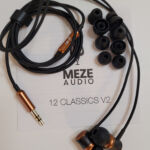



Sound:

Bass:
Sub-bass is elevated with a center around 70Hz and roll-off becoming notable below about 35Hz where it starts to be more a rumble than individual tones. Mid-bass begins a gradual decline but is still elevated for most of its range. Overall rumble and slam have good quantity and moderately good quality although the bass is a little thick and does bleed into the lower mids enough to color them. The low end adds some needed warmth and helps the 12C mimic its bigger brother the 99C in overall tonality if not in absolute performance. Attack is slightly faster than decay which gives the 12c a realistic tone but is subject to some compression as tracks get faster.
Mids:
Lower mids have a bit of an elevation compared to the true mid range which helps lift male vocals and gives them a bit more fullness as well. Here again, there is a nice natural if a bit relaxed tone with a very smooth delivery. These aren’t going to extract every last minute bit of detail, but what is presented flows without any jagged edges or harshness to the sound. Guitar growl is good if a little smooth and strings have good tone but could use a touch more energy to sound entirely correct. Upper mids climb back up from the trough of the true mids and female vocals do cut through the rest of the mix to stand out in front as a result. Again, no tendency toward sibilance, and a smooth delivery, but perhaps a bit more energy than realistic as it does pull some vocals and instruments forward in the mix.
Treble:
The treble tuning is well done in my opinion as lower and true treble are pushed forward to match the bass emphasis but then fall back starting at about 7kHz to keep the tuning from getting too bright or fatiguing. Final roll-off is above 14kHz but really the range between about 8kHz and 14kHz can be thought of as mildly de-emphasized compared to the rest of the signature. Treble detail is good with snare rattle being well defined if a little less crisp than perfect, but cymbals so need a touch more energy to be realistic. The nice thing here again is a smooth delivery with very little grain in its delivery.
Soundstage / Imaging:
Stage is about what one should expect from an in ear in this price bracket. It has moderate dimensions with more width than depth and some height albeit not quite as much as needed for total realism. The good news is instrument separation is above average and layering is also fairly good so seating the orchestra leaves no huge gaps or overlaps even in spite a of a wider than deep stage. Imaging is good as well with movements easily tracked, but here again that smoothness of deliver means that at times positions in space are not as tightly defined as some models. There is some compression as tracks get busier and some thickening particularly of the low end.
Thoughts / Conclusion:
The original model 12 Classic was aimed at reproducing the 99 Classic in an earphone and it succeeded in some respects and left some room for improvement in others. The v2 is an iterative step forward as the driver has been updated while leaving the aesthetic intact. I do like the Copper anodizing as I think the newer version looks a little more high end and the copper helps accentuate the walnut in the barrels better than the previous version. Sound wise, the two are again largely alike with only iterative differences in the signature. I find the bass a little cleaner on the V2 and slightly less exaggerated in the mid-bass while the true mids and upper mids have a little more realistic timbre than the previous generation. Those with an original V12 or V11 Neo will appreciated the upgrades to the v2 and those who haven’t had the opportunity to try the series yet will enjoy an easy-going listen that is more musical than technical most of the time, but offers a very engaging signature that is easy to get lost in while relaxing.

Wiljen
Headphoneus Supremus
Pros: tiny unit, simple operation, relatively low cost.
Cons: low power output, no Lightning option, no Dsd or MQA support
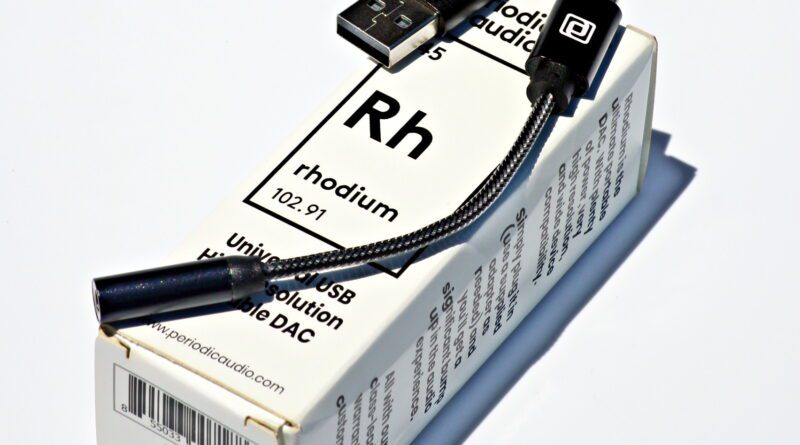
disclaimer: The Periodic Audio Rhodium was provided for review by Periodic Audio. I have no financial interest in Periodic, nor have I received any payment beyond the test unit itself for this review. If you have an interest in learning more about Periodic Audio products, See their website and Facebook. Right now Periodic has a promotion for Father’s day that includes a free Rhodium with purchase of a Carbon in-ear and Nickel Amp.
Packaging:
Packaging is very simple with a white card stock box with black lettering and the periodic table style layout we have come to expect from PA. Inside the box, we find the dongle itself and a USB type-C to type-A adapter. No USB to lightning adapter is provided and the Periodic website is quick to note that even with the camera kit, the Rhodium may not work with apple devices so this is best used for android, windows, Linux, and mac-OS where it is detected by plug and play and works well.





Build:
The dongle itself is tiny and one would be forgiven for assuming there was no dac in it as it seems there simply is not space to accommodate one. At the south end, we have a USB type C connector in a black polymer housing with a short strain relief then at the opposite end of the cloth wrapped cable we have a a round housing for the 3.5mm port. Again a short strain relief is provided. Overall length is just short of five inches with the USB connecting being just under 1 inch in length, three eighths of an inch wide, and roughly one quarter inch thick. The 3.5 port is also roughly one inch long with a quarter inch diameter. As suggested, this leaves little room for anything internally as space is certainly at a premium. The good news is the dongle weighs almost nothing and certainly wont be something you have to contend with when on the go.



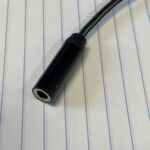
Internals:
Periodic doesn’t list the chip used inside the Rhodium but a little digging using android and linux USB tools identifies the chip as either a Realtek ALC4042 or ALC4050. I have attached both datasheets for those interested in more details. Regardless of which of these two codecs is in use, the dongle supports up to 32bit / 384kHz PCM but does not support DSD or MQA which is a bit limiting by today’s standards. The specs list 31mW @32Ω which makes this best reserved for in-ears or extremely efficient headphones. I tried the Rhodium with several different models just to see how far I could push and definitely found some limits. Beyerdynamic’s 600Ω DT990 is definitely out as the Rhodium simply doesn’t have enough usable volume range for this. The HD6xx was better but still lacked enough volume range to really be useful. If I maxed out the volume, I could reach a comfortable listening level, but it had no headroom left for a crescendo at that point. With iems it fared a good bit better with the exception of the TinAudio P1 and the Tri I3 where it again struggled to have enough power to push them to full capability. Periodic markets the Rhodium as a pre-amp rather than a DAC/Amp which is probably a good way to think of it as alone it lacks the potency to drive all but the most sensitive of in ears. On the plus side, there was no his with my Magaosi K5 which is notoriously sensitive so it pairs well in those instances where more power is a drawback.
Sound:
It can be hard to determine exactly what any dac/amp brings to the mix as so much is dependent on source and headphones in use. The Rhodium does have good detail and clarity, but lacks some impact in the lows especially when paired with anything it struggles to drive. I found the Magaosi K5 paired well and had good detail retrieval, nice crisp mids, and acceptable bass (it never has a ton here anyway), but as I moved to harder to drive models, it quickly became evident that the Rhodium is meant as a pre-amp and not as a dac/amp by itself. When used with an amp following and thought of as a dac only, the Rhodium does a good job of staying neutral and rendering detail well.
Conclusions:
With makers coming out of the woodwork to provide USB to 3.5mm jack dongles for the cellphone market, it is no surprise that Periodic felt the need to have a model of their own to complement their in-ear offerings. The Rhodium offers a good level of detail and a quality build and does pair well with the Beryllium and Carbon models and the low output power does mean it helps conserve your phone battery which is a good thing if your in-ears don’t need additional power. The downside to that limited output is it either needs to be paired with an amp or doesn’t have the potency to drive over-ear models or high impedance / low sensitivity ear buds. This makes it a niche player at best as too many other dongles offer those features at nearly the same price. Periodic does market the the Rhodium as a pre-amp and even goes so far as to package the Rhodium with the Nickel amplifier and Carbon in ear as a kit and this is likely the best use case for the Rhodium as it functions well as a dac but needs a potent amplifier to complement it.
John Massaria
Rhodium is a rare metal - very cool name for a dac and amp and only $49 bucks seems like I would buy it just b/c
| Rhodium Price per Ounce | $17,450.00 |
Wiljen
yeah, unfortunately, the realtek chipset in it and the lack of output power combine to steal a lot of its potential. Better options abound even at $49.
John Massaria
true I just have a thing for Rhodium lol
Wiljen
Headphoneus Supremus
Pros: Good build quality, great kit, warm signature
Cons: Too blinged out for some, large size, limited extension at top
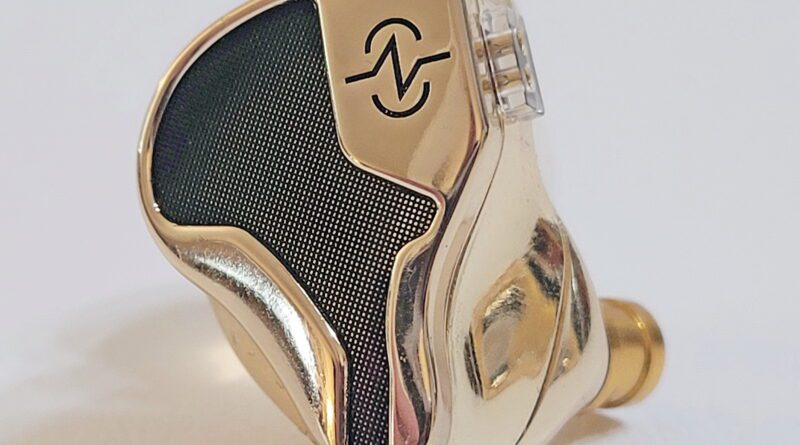
disclaimer: The CCZ Plume was sent by a company representative for review. I have no financial interest in CCZ or any of its suppliers, distributors, or subsidiaries. If you have an interest in the Plume, see the Keephifi facebook page or their store for more details and to purchase.
Unboxing / Packaging:
From the moment you open the shipping box, the Plume announces its presence with bold color choices and graphics throughout the packaging. The rear of the package has the specs for the unit while the front is the CCZ logo In gold leaf over a gold and pale blue graphic design. Upon opening the box, the experience is equally bold with the earpieces and tips displayed in a foam surround which gives a presentation case aesthetic. Beneath the foam tray is a leather hard-shell case, the cable, cleaner, additional tips, cleaning cloth, and adapters. it is a very complete kit as it includes eight sets of tips, 3.5, 4.4, and 2.5mm jacks, and both a case and cleaning kit. It is hard to find fault with the accessories provided as many at this price have far lesser kits. CCZ obviously wanted to create a premium experience from the first look and the kit shows that attention to detail.

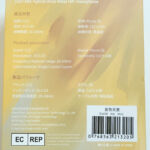




Build/Fit:
The Shell of the Plume certainly is eye catching with its gold and gray metal finish. Most of the shell is bright gold with an inlay that has a mesh over the bright gold to give it a grey/black appearance when turned directly into the light and an antiqued gold when looked at from an angle. Shells are indeed all metal with the semi-custom shape we have become used to but construction is a departure from average with a four part design using an outer faceplate, a mid shell, an inner shell and a nozzle. The nozzle has a more orange tint than the other three parts which are very closely matched and well mated. There are two vents both on the under surface with one on the inner shell near the nozzle and the other on the mid shell directly behind the first. Nozzles have a slightly forward rake when in ear and offer fairly deep insertion. The only issue with the Plume is they are larger than average so those with small ears may be wise to try them on before purchase as they may cause some fitment issues. I was able to wear them comfortably for extended periods but my daughter complained of discomfort when using them for more than 30-40 minutes.
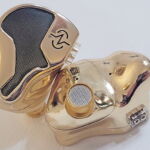
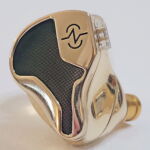
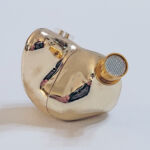
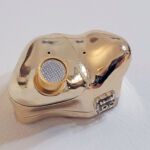
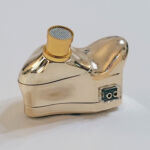



Internals:
The Plume is a 5 driver hybrid using a 10mm dynamic driver for lows and a pair of custom balanced armatures for the mids and another pair for highs. The armatures are designed and built in house and are refereed to in the notes as the CCZ-IF-A (intermediate frequency) and the CCZ-HI-A (High frequency) models respectively. All wiring inside and out is 6N OCC as well. Nominal specs are 16Ω impedance and 110dB/mW ±2dB measured at 1Khz. I found the Plume easy to drive using a phone/dongle or tablet but that it does scale some with both better dacs and more potent sources. The plume is well suited for mid-potency dongles and phones as it performs well with moderate power and really doesn’t scale much beyond that point without introducing some audible noise when the music isn’t playing. With this high a sensitivity hiss is to be expected if paired with sources designed for large planar magnetic headphones or high impedance dynamics.
I was not able to find any exploded diagrams or internals views of the Plume but understand that Delta Fyre will be doing a tear down of the Plume on his site so those interested may want to head that direction.
Cable:
As previously mentioned the cable is 6N OCC single crystal copper wrapped rubber casing and a cloth overlay. The jack is a 2.5mm straight type with a short strain relief and a 2 tone (chrome and black) barrel housing. The cable leaves the jack as a tight 2 strand twist up to the splitter (matching chrome and black carbon fiber barrel) and then exits as single strands. A black bead chin slider is provided and functioned well in my use. At the north end, the Plume has pre-formed hooks and 0.78mm bi-pin connectors using a short square hood to cover the connector on the shell and reinforce the connection. Non-hooded model cables will work, but may look slightly odd with the connector extending the length of the connector slightly. Also included are two adapters that convert the 2.5mm to 4.4mm balanced and 3.5mm single ended respectively. These both worked well in my trials but I much prefer a 90º version of the adapters as these do provide a long lever that can put a lot of force on a jack in your source if not handled with care. the provided adapters will work fine when using desktop equipment in quiet/safe environments, but for travel and mobile application purchasing an aftermarket 90º adapter may be a bit more prudent.
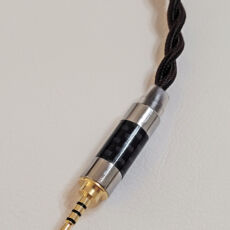





Sound:
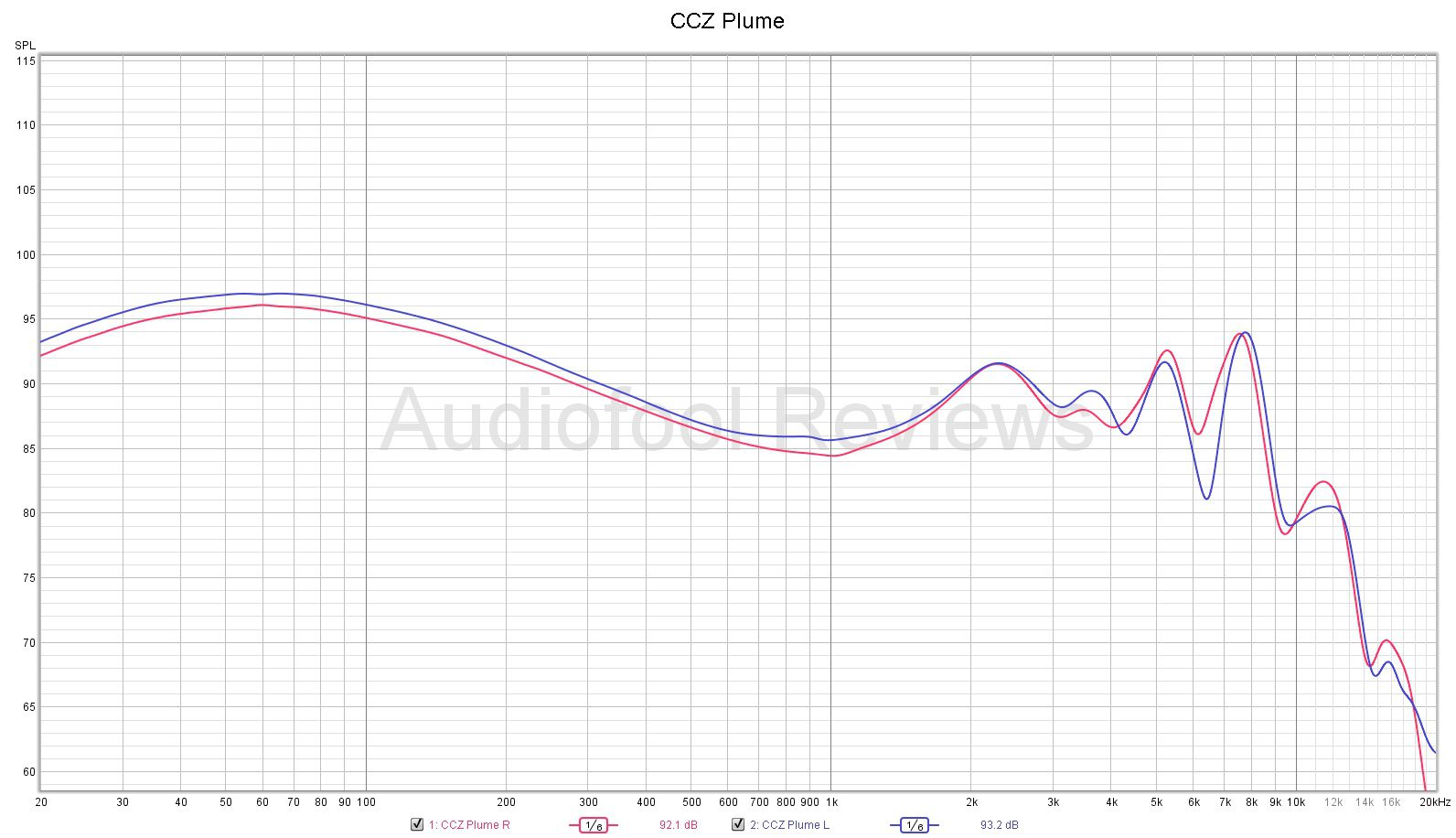
Bass:
Sub-bass has good presence but is somewhat source dependent as it gains or loses a bit of impact and clarity depending on source in use. I found that something with a bit more power than a standard phone was necessary to get the best out of it as with a bit of extra power the bass tightens up nicely. The sub-bass is probably the most prominent feature of the sound landscape here with the mid-bass gradually stepping back but still emphasized from pretty much the entire range. Bass textures are good for the price point and detail is more than honestly expected in a tuning this warm. The lows can get a little thickened with extremely fast passages and source pairing is important in getting the most from the Plume.
Mids:
There is some mid-bass bleed here, no way around it, the lower mids are at times obscured by the bass and when combined with a V shape tuning, the mids do sound a bit recessed. Detail is good once you get above the bleed but the warmth carries through all the way to the upper-mids and gives them a bit thicker vocal presentation than average and dulls the transients so guitar growl isn’t as sharp as some others in its class. True mids have good texture and detail but again lack a bit of energy needed for strings to be entirely realistic. There is a push forward of the upper-mids that give female vocals a step forward in the mix and enough energy to sound realistic. By comparison their male counterparts are a step back into the mix and have a thicker heavier tonality that at times is welcome and at others is a bit too much.
Treble:
Treble has good energy, clarity, and detail without becoming too far forward or harsh. Snare rattle has good crisp edges and is notable sharper than the guitar growl below it. Cymbals are not metallic but could use a touch more sustain and decay as they drop back out a bit more quickly than entirely realistic. There is some air and space at the top but sparkle is somewhat limited by the tuning and rolloff is pretty steep above about 11kHz to my ear which keeps the Plume from sounding entirely open and spacious at the top.
Soundstage / Imaging:
Soundstage has good dimension with slightly greater depth than width and a limited sense of height. Closed back in-ears as a class are generally not known for large stages and the Plume very much falls into this description as while there is good instrument separation and seating the orchestra is fairly straight forward the resulting stage seems both somewhat narrow and a little shallow when compared open back models that allow the sound to stretch a bit more. Movement is easily tracked but positions are not as precise in lower tones as they are in higher voices so imaging while generally good lacks a little bit of precision when low pitched sounds are tracked. There is a good bit of compression of the lows on fast paced complex tracks and the result is that it does get thicker as pieces get more complex. Again, not unexpected on a bass forward model, but may influence a purchasing decision for some.
Thoughts / Conclusion:
I like the Plume a good bit. For a freshman effort by a new company it shows that CCZ put a lot of thought and effort into this release. I’m not a huge fan of blinged out stuff, but the aesthetic definitely sets the Plume apart from the crowd and gets it noticed. The tuning is also a departure from the average with big bass and an overall warm tonality that departs from the standard deep V with a lot of treble push. The minus side of the argument is size may be too large for some, the Plume does exhibit some source dependence, and a bit of micro-detail lost to the tuning. The Plume does not play nice with poor recordings and will reveal them as poor quality fairly abruptly so be forewarned, it may not be the Plume that sounds bad, it may well be what you are feeding it. I find the plume adds an option to the market that has been somewhat overlooked as it has bold lows, a warm overall tone, and a polite treble that will appeal to those looking for an earphone for things like Electronic music ,dub-step, and hip-hop.
Wiljen
Headphoneus Supremus
Pros: well built, good power, fully differential
Cons: balanced only, no pre-amp function, no switching between front and rear inputs, no RCA inputs.

disclaimer: The MT-604 was provided for the purpose of this review and the tube rolling article by Xduoo Audio. I have no financial interest in Xduoo or any of its distributors, nor did I receive any compensation beyond the product itself for this review. If you have an interest in purchasing any of the Xduoo amplifiers I have recently written about, I suggest you check out Xduoo’s website directly as they now offer direct sales. You can also follow them on Facebook for more information.
Unboxing / Packaging:
The packaging of the MT-604 is the same style as the 601 and 602 packages with a very western retail look to the box. The front has the line drawing of the amp while the reverse has company info and some suggested uses but does not have even basic specs. Lifting the top of the box reveals the manual and then a couple of blocks of heavy foam. The top most block serves to protect the pre-installed tubes, while the lower block protects the 604 itself. Beneath the unit and foam protection is a box containing the power supply and power supply cable. Audio cables are not provided so you will need either a 4.4mm pentaconn interconnect cable or a pair of XLR inputs as the 604 does not have RCA inputs.



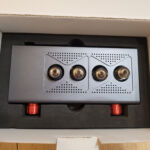

Build/Fit:
The case is gray anodized aluminum with removable end plates and rear plate in very much the same style as the 601 and 602. To remove the internals for cleaning or repair, only the rear plate needs to be removed as the internals no not attach to either side plate. The top of the case has two X logos with a pair of tubes centered in each and venting to the front and rear of the X. Additional venting is provided by the side plates that also sport the logo pattern. The unit has four 6J1 tubes that protrude roughly ½ an inch. above the top surface.
Inputs are a 4.4mm pentaconn jack on the right front and a pair of XLR jacks on the rear. Outputs are a single XLR on the center front and a 4.4mm pentaconn to the left of it. Unlike the 602, no pre-amp outputs are provided and the 604 has no single ended input or output options.
This is purely an amplifier so no usb, optical, or coax connectors are needed and the only other features not covered yet are a large red volume knob centered immediately in front of the tubes and a 12V DC input on the rear of the unit. Overall the unit stands a little over 1.5 inches tall (excluding the tube) , about 7 inches long and a little over 3 inches deep. The unit weighs slightly over a lbs as well so is quite compact.
This is where I got the first surprise, no two of the tubes were the same height when I unboxed the amp. I figured the amp had just been jostled in transit and needed the tubes reseated but to my surprise all four tubes were fully seated in the sockets and are different heights. I checked the dates on the tubes and all have the same date code so I can only guess either the codes are fake and applied sometime after the fact or the QC was non-existent that day at the factory.

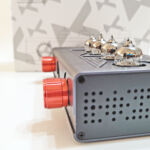



Internals:
The MT-604 uses four 6Ak5 tubes as the pre-amp followed by eight D882M transistors that are used as a buffer stage. The D882M transistors are mounted to the bottom of the board and use the case as the heatsink rather than needing a dedicated sink like the 601 uses. Those interested in the D882M can find the datasheet here. Capacitors are either Elna Silmic or RubyCon branded throughout. The 604 also lists a built in mute circuit in the headphone output to prevent pops at power on. The 604 lists gain as +15dB exactly the same as the 602, but output power is much larger at 2000mW into a 32Ω load compared to the 1300mW of the 602. SNR is listed as 115dB with a THD+N of <.01 at 1kHz with a 32Ω load. The 604 lists as suitable for use with headphones between 16 and 600Ω impedance and indeed was capable of powering just about anything thrown at it. The 6AK5 family is quite large and provides lots of options for tube rolling as it has been in production worldwide since the 1940s nearly continuously. For more on that, see Tube Rolling the MT-604.


Sound:
The MT-604 is a hybrid amp so can have some warmth added by tubes but retains some of the same character regardless based on its output stage. If you’d rather avoid such coloration the Xa-10 or XD-05 balanced provide all solid-state options but both are considerably more costly than the 604. The 6J1 tube used offers a fairly wide range of options and the amount of warmth, extension, and detail can be impacted considerably. This family also includes tubes labeled 5654, 6J1 (Chinese and Russian designation), CV4010 (British), EF95 (Euro), 403a/b (Western Electric) as well as 6AK5W and 5654W designations. I used the Khadas Tone2Pro with a pair of balanced RCA to XLR cables to feed the MT-604, and worked my through no less than 12 different sets of tubes. Tube rolling the MT-604 proved a more complicated exercise as with each new tube, the volume had to be re-tested and matched before listening. While the MT-604 does have some tube characteristics, it is ultimately a fairly clean and detailed amp without the syrupy flavor of some tubes. I think this is due in part to the use of the 5654 tube which has less warmth than some other tubes and partially to the output buffer stage design. The end result is a detailed signature with a hint of warmth depending on the tube used. Overall, I found the 604 to have good output power as it was able to run the HD800 without issue. The He6 was not quite driven to full capability and that duty is better handed off to the Ta-30. For more on the sound with various tubes, see my tube rolling article.
Thoughts / Conclusion:
The MT series are all budget models that make trade offs in order to get the desired result. The 601 is a pre-amp with an earphone output and has very limited output power for using full sized headphones. The 602 has more power but may be a bit over-powered for sensitive in-ears and best reserved for full sized headphones, and the 604 has no pre-amp outputs, no rca inputs, has separate volume controls per channel and is balanced only. I include the separate volume controls among the cost savings here as bringing the two independent signals into a single volume pot would require more hardware to accomplish and no doubt increase costs. All models in the MT line share the issue of lacking input switching so be careful not to have multiple sources connected. Effectively, Xduoo has built a series of single purpose budget amps and with price tags of all three being sub $200 USD and the 601 and 602 hovering right around the $100 USD mark, we should expect no different. The 604 offers a fully balanced tube amplifier with independent volume controls that allow the end user the ability to offset small channel imbalances elsewhere in the chain for a cost of less than half of the next least expensive balanced tube amp I was able to find on the market. It has very usable power with nearly 2 watts of output, and the signature can be tweaked with readily available and inexpensive tubes. Will it displace the Eddie Current Balancing Act in totl setups? No, but for the asking price you can buy 15 of the 604s and still have less than the cost of a used model. That gives newcomers to tubes a very cost effective way to stick a toe in the water and see what this tube stuff is all about. Kudos to Xduoo for making tube audio more affordable and accessible. Everyone should own a good tube headphone amp and the MT-604 makes a good place to start.

B
borkenarrou
Guys a dumb question, are the 1st and 2nd tubes from left for left channel and 3rd and 4th from left are for right channel?
Condocondor
Got one with an upgraded power supply for sale: https://www.head-fi.org/classifieds/mt-604-tube-hybrid-w-2-new-extra-matched-tube-sets.53928/
El nai del vent
volume control is by R-L channels. The sound improves by changing the tubes, I used it with GE Jan 5654w.
Wiljen
Headphoneus Supremus
Pros: distinctive design and construction, comfortable extended wear, great stage, good detail
Cons: very energetic tuning, mid-bass could use more texture.

disclaimer: I was provided the Final Audio A4000 by Audio46 as part of their review tour. I had the A4000 in my possession for a week to listen and take notes before sending it on up the road to the next participant. I have received no compensation or remuneration for this review. If you have an interest in Final Audio, please see their website and follow them on Facebook. To purchase Final Audio products, see Audio46.
Unboxing / Packaging:
The A4000 arrived boxed in a lift-top style box with a graphic of the earpieces on front and specs on the reverse. Lifting the top reveals a round clamshell style silicone case and box with tips cradled in a foam support. The earpieces and cable are inside the case with each earpiece bagged to prevent scratches in transit. The Tip case houses 5 different sizes of E-series silicone tips. Foams are not provided. Under the silicone case is another small clear bag with the snap-on ear-hooks contained in it and beneath it is the documentation. The Silicone case is a unique style with one convex and one concave side and 3 latching points around the outer edge. It holds the earpieces and attached cable very tightly so carrying anything extra in the case is not possible. Also there is no dedicated connecting point for a clip or caribiner to attach the case to a bag or keys.






Build/Fit:
The A4000 and its sibling the A3000 share very similar abs thermoplastic shell thats give them a very distinctive look with lots of angular cuts, they look like they might be a bit blocky and uncomfortable in the ear, but I found the opposite to be the case. All edges are beveled and rounded and you won’t find a sharp edge anywhere on them. Size wise, the use of the 6mm instead of the standard 10mm helps as well as the housing can be made smaller and lighter. Shells are designed with a deep outer shell and a thin inner shell opposite of the standard faceplate and shell arrangement. The color is also unique in that Final calls it Dark Navy but at times it appears almost jet black and at others a gunmetal grey/black depending on lighting. There are two vents on the under surface of the shell along with the Final/A4000 printed on the main body and either L or R printed on the connector extension. Connector housing s hare slightly raised but well fitted and have key-ways to prevent the cable from being attached incorrectly. Nozzles are fairly short with a lip for tip retention and the duly famous set of E-series tips.








Internals:
Inside that shell, the heart of the A4000 is a single 6mm dynamic driver that was designed from the ground up for the A series. The driver which Final calls the F-core DU, was designed originally for the flagship A8000 but trickle down technology means the A4000 version of the driver comes off the same production line with only slight changes from the earlier flagship design. Final is quick to point out that the driver required that not only nearly every part be rethought ( diaphragm, voice coil, magnet, magnetic circuits, and adhesives used are all new), but also required designing new machinery to complete the assembly process. The front housing of the driver is brass as it is less magnetically sensitive and less subject to resonance issues than aluminum. The Voice coil uses a a 30μ ultrathin copper coated aluminum wire with as little adhesive as possible to improve the strength of the magnetic field and shave weight in moving parts. Diaphragms are manufactured in small batches with heightened quality control measures as well to minimize deviation and enhance uniformity. Nominal impedance is listed as 18Ω with a sensitivity of 100 dB/mW. I found the A4000 to be easy to drive, but that it does require a bit of a turn on the volume knob as it does like a little more power than the average. This meant that I had a bit less headroom when using a phone or dongle, but it was still quite usable from a phone or tablet. With a more potent amplifier, the A4000 does scale some with a bit more potent bass response when compared to some of the lower powered sources.

Cable:
The cable provided with the A4000 starts with a 90º 3.5mm jack in a black plastic housing with a good strain relief before exiting as two parallel strands in a heavier than average coating. This creates a nice balance between microphonics and the likelihood of tangles. The package also has a pair of locking ear hooks that help mitigate some of the cable weight and minimize any cable noise to the earpieces. The cable itself is oxygen free copper but exact core count was not specified. The splitter is a simple black plastic flattened barrel with a matching slider above which the two strands head off in their own directions. At the north end, 0.78mm bi-pin connectors also in black plastic housings complete the package. One nice touch is the bi-pin connectors and sockets are keyed so they cannot be installed incorrectly. With cables that have permanent earhooks, its usually fairly obvious as to proper orientation, but without them it can be hard to be sure. They keys help and are appreciated. I found the cable to work well, not tangle in storage, and the provided hooks were not needed.



Tips:
The A4000 comes with 5 sizes of Type-E tips. These use a mix of stiffer silicone for the cores and softer for the flanges which makes for a very comfortable fit. Unfortunately for me, they also tend to fold and crease which makes them difficult to get a good seal with and even with 5 sizes I’m somehow between two of them where one is slightly undersized and the other creases. For my testing I swapped in Shure Olives which fit my ear better so some notes may be influenced by that change in tips.

Sound:

Bass:
There is a sub-bass emphasis to the A4000 centered around 60Hz with a slow drop back all the way through the mid-bass and lower-mids. Sub-bass roll-off is only notable in the low 20s and delivers good rumble when called upon. In spite of the graph, the bass boost is not as prominent as it appears and shows up more as a complimentary piece to the upper-mid/treble emphasis than as a stand alone component. Mid-bass has good speed and note weight giving the A4000 some detail and texture although I would have liked a bit more texture as it isn’t quite as clear as it could be and so texture is somewhat muted. There is no perceptible bleed into the mids.
Mids:
Here the texture veil is lifted and mids have great detail and don’t seem as recessed as the graph might suggest. Lower mids have good note weight and male vocals have a nice natural tonality. Guitar growl has a nice crisp attack and enough guttural feel to sound fairly natural as well. There is a marked climb in the upper-mids that actually overshoots natural timbre for strings and they wind up with a touch more energy than wholly natural. Female vocals fall into the same category as strings. They are pushed a full step forward and have a bit too much energy at times that can get strident if the track has any tendency in that direction. The upside is great clarity, the downside is fatigue and a bit of sibilance at times.
Treble:
Lower treble follows the upper-mid rise and remains plateau’d for most of the range with a drop off only around 9kHz. This gives the A4000 a very energetic treble that reveals detail well but also contributes to the stridency mentioned earlier. There is good texture so snare rattle is crisp and tightly defined but hi-hat is metallic and over-done and cymbals in general suffer a bit unless some judicious EQ is applied to the mid-treble range. Roll-off is above the limit of my hearing so for me the sound feels nice and open with good air and sparkle at the top. Sparkle can turn to sizzle on occasion when tracks push that direction, so this is probably not the in ear for the treble shy.
Soundstage / Imaging:
This is a high point for the A4000 as stage has good size and dimension with both width and depth being roughly equal and even some height in the mix. Seating the orchestra is straight forward thanks to the stage and good instrument separation. Stereo separation is also above average which probably aids in both stage size and imaging as well. Movements are easily tracked and positioned in space and definition is good considering the asking price. There is some mild compression but the A4000 handled fast tracks fairly easily without a lot of thickening.
Thoughts / Conclusion:
So I guess you could say, this is my Final review (Sorry couldn’t resist the pun). The A4000 is a sibling in the new A series that technically is the middle model between A8000 above and A3000 below but more realistically is an entry level offering based on price and a much closer sibling to the A3000 in construction than to the A8000. The shells are interesting in their use of thermoplastic instead of metal or resin and are light and comfortable for extended wear. Although a great tip selection is provided, I found a need for aftermarket tips, but with standard sized nozzles even this proved easy enough to remedy. I like the earhooks, particularly that they aren’t attached and honestly other than to test them and see that they worked, I found no need of them. Sonics follow a fairly typical Japanese pattern of bright overall tonality and share some similarity with other Final models I have tried and Audio Technica models as well. This seems to be the preferred tuning of the region and while not my favorite it does bring a lot of detail and energy to the sound. Overall, I am impressed with what Final is able to do at a price range they rarely dip into and I hope this means good things for models to come. For those that like a bright, energetic tuning, the A4000 offers a lot.
Wiljen
Headphoneus Supremus
Pros: Improved dynamics compared to Spring, less expensive than Spring, improved cable
Cons: step back in build compared to Spring models, uneven treble, could use more texture
disclaimer: I was sent the BQEYZ Summer for purposes of reviewing it by BQYEZ. I have no financial interest in BQEYZ nor have I been provided with any remuneration beyond the earphone itself for this review. If you have an interest in BQYEZ, I recommend you check out their facebook page, or to purchase BQEYZ products shop their Aliexpress store.
Unboxing / Packaging:
The Summer ships in a slipcover with summer on the front and specifications in Chinese and English on the reverse. Removing the slip-cover reveals a black book-fold box with BQEYZ in silver. Opening the box reveals the earpieces in foam in the main compartment. A cardstock flap covers the soft case which houses the cable as well but not the tips. You’d be forgiven for not thinking any were provided as there is no indicator that the foam the earpieces sits in has another layer under it that contains 6 sets of silcone tips. Tips in 2 styles are provided with one listing as reference tuning and the other as a more bass-forward option. Kit is pretty standard at this price point but the included items are good quality which I would rather see than more lesser quality stuff being thrown in just to say it has extras.







Build/Fit:
Unlike the previous seasons (spring 1 & 2) the shell of the summer is acrylic rather than aluminum but dimensions and shape are largely the same with the addition of a small spur to the rear of the inner shell. The result is a slightly lighter medium sized shell with a more ornate face-plate as the previous models are smooth surfaced where the Summer has 3 stylized ripples in the outer surface. Currently two colors are available which are listed as blue and black. The model I received is listed as black but is actually a very dark shade of purple as can be seen in the better lit photos. It looks black in average light, but shows a purple/blue color in bright light. Shells are 3 part with an acrylic face and inner shell and aluminum nozzles. Nozzles have a forward rake and a pronounced lip for tip retention. Shells have a vent immediately behind the nozzle and another pair nearer the rear edge of the inner surface. The bi-pin connectors have a slight recess rather than using a hooded connector. I found the shells comfortable and had no problem with extended wear. I also found the mid-sized stock black (reference tips) worked well so didn’t have to spend long getting tips sorted out like I sometimes do.








Internals:
All of the seasons so far have been tri-brid models with a 13mm dynamic driver, a single balanced armature, and a piezo electric element. The summer is no different as it too uses a 13mm dynamic driver, a single armature, and a piezo, but all three elements have been updated since the Spring 2. The dynamic driver is faster responding with a new PU+LCP diaphragm. The balanced armature has been retuned for better linearity, and the piezo has been reduced from nine(9) layers in the spring 2 to five(5) in the Summer. Impedance is listed as 32Ω with a nominal sensitivity of 107 dB/mW which puts the summer somewhere between Spring1 (43/108) and Spring2 (32/110). I found the summer worked well from dongle dacs and while it needs a little power to do its best, it will work from a cell phone on high output mode (LG) or from one of the various dongles for phones and tablets without need for a dedicated amp.

Cable:
If people feel the shell is a step back from the Spring models, the cable certainly is not. The cable provided with the Summer in an eight (8) strand braid of silver plated single crystal oxygen free copper up to the splitter and 4 strand braids above that. the Jack, splitter, and connectors are all brushed aluminum with a pinched waist. Even the chin slider is brushed aluminum with the same style. Bi-pin connectors are 0.78mm type and fit into slight recesses in the shell rather than opting for a hooded type. The cables do have pre-formed hooks without memory wire and the connectors have L/R clearly marked on the exterior. The end user has the choice of 3.5mm single-ended, 2.5mm balanced or 4.4mm balanced at time of purchase or additional cables can be bought from the Aliexpress store. I think the cable is a large step forward from the original BQEYZ models and applaud their progress. I would purchase this as a replacement cable for some of my other bi-pin in-ears as it has little or no tendency to tangle and is pliable with little weight felt on the ear and almost no microphonics.



Tips:
The summer comes with two styles of tips, one a clear tip with a blue core (atmosphere) and the other a solid grey (reference). I found the two tips do make a difference and prefer the reference for their more balanced presentation. Those looking to get more bass out of the Summer may wish to try the atmosphere (blue-core) tips as they do increase the bass at the expense of a little clarity in the lows. The one omission here is the Spring2 shipped with foams in addition to the two types of silicones while the summer does not ship with any foam tips in the kit.

Sound:

Bass:
The summer has the best bass of the seasons so far but that doesn’t mean it is going to please everyone. Sub-bass has some thump when called upon but rolls off in the upper 20s so doesn’t have as much impact as it might with a bit more depth. Overall, mid-bass seems more elevated in spite of what the FR chart would suggest with sub-bass being well controlled but not overly prominent. Mid-bass is fast with good attack speed and natural decay giving a nice clean sound but at the same time I can’t help but feel the texture could be a little better. At times, you hear elements that let you know the driver is capable of producing good texture but at others it feels restrained. It may be that the tuning went a little too safe here and lost a little texture in favor of keeping the linearity and balance instead. Overall, the bass is well matched to the rest of the signature, has good speed, and a natural tonality, so the knock on texture is probably nitpicking considering the price point.
Mids:
There is very slight mid-bass bleed and it contributes some warmth to the lower mids and a bit of weight. Bass guitar and male vocals both have good note weight and timbre with lead guitar having slightly less weight than its brother. Growl is good with sharp lead edge and good energy. Mids have good clarity and detail and are improved over the Spring2 in the lower registers but about even with the spring2 as we move into the upper-mids. Strings have good energy and tonality so that trend continues as well. Female vocals are a bit forward of their male counterparts but not so much so as to be unnatural sounding, it is more that female vocals cut through the mix while male vocals stand between instruments.
Treble:
This was probably the most polarizing feature of the Spring models and quite frankly it will likely continue to be on the summer as well. I felt the treble on the Springs was good for the most part but did occasionally cross into hot territory. With a peak in the 9kHz range, the Summer is capable of that same behavior. During most of my listening, I was not bothered at all, but then a particular passage would trigger that spike and I would find it piercing, then it was gone again as quickly as it came. Lower treble has good energy and detail and gives snare rattle a nice realism, but hi-hat can be metallic and clicky (its right on that border). I think this just shows that the peizo elements are still a work in progress and while the BQEYZ models are doing a good job harnessing them, there is still some work to be done to perfect it.
Soundstage / Imaging:
This is where the Summer steps out of the shadows of the Spring 1&2 and owns it. The stage is improved over both of its predecessors by more than a little bit. Stage is still a little wider than deep but depth is improved and height has as well with the Summer stopping just short of 3d. Seating the orchestra is straight forward with no overlaps or gaps and seating feels natural without the absurd width you get with the original Spring1. Instrument separation and stereo separation are both quite good as well which helps the Summer as well. Imaging is good as well but not exceptional as spatial cues show good movement but perhaps a bit less precision than it could have. Layering was impressive as I expected to trip up the dynamic with some of the busier passages but found only very mild compression even with the worst tracks.
Comparisons:
I’ve pretty much covered the territory of comparing spring models to summer all the way through the review so will settle for posting the comparison graph here. I have included the three models Spring 1, Spring 2, and Summer FR below for comparison.

Thoughts / Conclusion:
I have thoroughly enjoyed the Spring models and find BQEYZ consistently one of the better values on the market today so I expected good things from the Summer. Yes, its a step back in materials from the Spring, but about 75% of all in-ears are made from some form of acrylic so its hard to knock it for that and the price is lower as well so it isn’t like they lessened materials to make a bigger profit. Inside, they have improved the dynamic driver with faster transients, redesigned the peizo element with fewer moving parts and better coherency, and improved the armature in between. The tuning is very similar to the spring models from the lowest note up through the lower treble and then it departs a bit. For me that departure is not necessarily a welcome change as there is more emphasis in the 8-9kHz range which some will find opens up the sound and it probably is responsible for some of the improvements in the stage dimensions, but others will find it can be harsh and will need some EQ in that area to prevent fatigue. I do think the summer represents very good value as it has a lot of positive points, but we also have to remember not to expect miracles the budget price range and that some trade offs like loss of a little bit of texture in the lows and an occasional harsh note in the treble can still be expected.
Unboxing / Packaging:
The Summer ships in a slipcover with summer on the front and specifications in Chinese and English on the reverse. Removing the slip-cover reveals a black book-fold box with BQEYZ in silver. Opening the box reveals the earpieces in foam in the main compartment. A cardstock flap covers the soft case which houses the cable as well but not the tips. You’d be forgiven for not thinking any were provided as there is no indicator that the foam the earpieces sits in has another layer under it that contains 6 sets of silcone tips. Tips in 2 styles are provided with one listing as reference tuning and the other as a more bass-forward option. Kit is pretty standard at this price point but the included items are good quality which I would rather see than more lesser quality stuff being thrown in just to say it has extras.







Build/Fit:
Unlike the previous seasons (spring 1 & 2) the shell of the summer is acrylic rather than aluminum but dimensions and shape are largely the same with the addition of a small spur to the rear of the inner shell. The result is a slightly lighter medium sized shell with a more ornate face-plate as the previous models are smooth surfaced where the Summer has 3 stylized ripples in the outer surface. Currently two colors are available which are listed as blue and black. The model I received is listed as black but is actually a very dark shade of purple as can be seen in the better lit photos. It looks black in average light, but shows a purple/blue color in bright light. Shells are 3 part with an acrylic face and inner shell and aluminum nozzles. Nozzles have a forward rake and a pronounced lip for tip retention. Shells have a vent immediately behind the nozzle and another pair nearer the rear edge of the inner surface. The bi-pin connectors have a slight recess rather than using a hooded connector. I found the shells comfortable and had no problem with extended wear. I also found the mid-sized stock black (reference tips) worked well so didn’t have to spend long getting tips sorted out like I sometimes do.








Internals:
All of the seasons so far have been tri-brid models with a 13mm dynamic driver, a single balanced armature, and a piezo electric element. The summer is no different as it too uses a 13mm dynamic driver, a single armature, and a piezo, but all three elements have been updated since the Spring 2. The dynamic driver is faster responding with a new PU+LCP diaphragm. The balanced armature has been retuned for better linearity, and the piezo has been reduced from nine(9) layers in the spring 2 to five(5) in the Summer. Impedance is listed as 32Ω with a nominal sensitivity of 107 dB/mW which puts the summer somewhere between Spring1 (43/108) and Spring2 (32/110). I found the summer worked well from dongle dacs and while it needs a little power to do its best, it will work from a cell phone on high output mode (LG) or from one of the various dongles for phones and tablets without need for a dedicated amp.

Cable:
If people feel the shell is a step back from the Spring models, the cable certainly is not. The cable provided with the Summer in an eight (8) strand braid of silver plated single crystal oxygen free copper up to the splitter and 4 strand braids above that. the Jack, splitter, and connectors are all brushed aluminum with a pinched waist. Even the chin slider is brushed aluminum with the same style. Bi-pin connectors are 0.78mm type and fit into slight recesses in the shell rather than opting for a hooded type. The cables do have pre-formed hooks without memory wire and the connectors have L/R clearly marked on the exterior. The end user has the choice of 3.5mm single-ended, 2.5mm balanced or 4.4mm balanced at time of purchase or additional cables can be bought from the Aliexpress store. I think the cable is a large step forward from the original BQEYZ models and applaud their progress. I would purchase this as a replacement cable for some of my other bi-pin in-ears as it has little or no tendency to tangle and is pliable with little weight felt on the ear and almost no microphonics.



Tips:
The summer comes with two styles of tips, one a clear tip with a blue core (atmosphere) and the other a solid grey (reference). I found the two tips do make a difference and prefer the reference for their more balanced presentation. Those looking to get more bass out of the Summer may wish to try the atmosphere (blue-core) tips as they do increase the bass at the expense of a little clarity in the lows. The one omission here is the Spring2 shipped with foams in addition to the two types of silicones while the summer does not ship with any foam tips in the kit.

Sound:

Bass:
The summer has the best bass of the seasons so far but that doesn’t mean it is going to please everyone. Sub-bass has some thump when called upon but rolls off in the upper 20s so doesn’t have as much impact as it might with a bit more depth. Overall, mid-bass seems more elevated in spite of what the FR chart would suggest with sub-bass being well controlled but not overly prominent. Mid-bass is fast with good attack speed and natural decay giving a nice clean sound but at the same time I can’t help but feel the texture could be a little better. At times, you hear elements that let you know the driver is capable of producing good texture but at others it feels restrained. It may be that the tuning went a little too safe here and lost a little texture in favor of keeping the linearity and balance instead. Overall, the bass is well matched to the rest of the signature, has good speed, and a natural tonality, so the knock on texture is probably nitpicking considering the price point.
Mids:
There is very slight mid-bass bleed and it contributes some warmth to the lower mids and a bit of weight. Bass guitar and male vocals both have good note weight and timbre with lead guitar having slightly less weight than its brother. Growl is good with sharp lead edge and good energy. Mids have good clarity and detail and are improved over the Spring2 in the lower registers but about even with the spring2 as we move into the upper-mids. Strings have good energy and tonality so that trend continues as well. Female vocals are a bit forward of their male counterparts but not so much so as to be unnatural sounding, it is more that female vocals cut through the mix while male vocals stand between instruments.
Treble:
This was probably the most polarizing feature of the Spring models and quite frankly it will likely continue to be on the summer as well. I felt the treble on the Springs was good for the most part but did occasionally cross into hot territory. With a peak in the 9kHz range, the Summer is capable of that same behavior. During most of my listening, I was not bothered at all, but then a particular passage would trigger that spike and I would find it piercing, then it was gone again as quickly as it came. Lower treble has good energy and detail and gives snare rattle a nice realism, but hi-hat can be metallic and clicky (its right on that border). I think this just shows that the peizo elements are still a work in progress and while the BQEYZ models are doing a good job harnessing them, there is still some work to be done to perfect it.
Soundstage / Imaging:
This is where the Summer steps out of the shadows of the Spring 1&2 and owns it. The stage is improved over both of its predecessors by more than a little bit. Stage is still a little wider than deep but depth is improved and height has as well with the Summer stopping just short of 3d. Seating the orchestra is straight forward with no overlaps or gaps and seating feels natural without the absurd width you get with the original Spring1. Instrument separation and stereo separation are both quite good as well which helps the Summer as well. Imaging is good as well but not exceptional as spatial cues show good movement but perhaps a bit less precision than it could have. Layering was impressive as I expected to trip up the dynamic with some of the busier passages but found only very mild compression even with the worst tracks.
Comparisons:
I’ve pretty much covered the territory of comparing spring models to summer all the way through the review so will settle for posting the comparison graph here. I have included the three models Spring 1, Spring 2, and Summer FR below for comparison.

Thoughts / Conclusion:
I have thoroughly enjoyed the Spring models and find BQEYZ consistently one of the better values on the market today so I expected good things from the Summer. Yes, its a step back in materials from the Spring, but about 75% of all in-ears are made from some form of acrylic so its hard to knock it for that and the price is lower as well so it isn’t like they lessened materials to make a bigger profit. Inside, they have improved the dynamic driver with faster transients, redesigned the peizo element with fewer moving parts and better coherency, and improved the armature in between. The tuning is very similar to the spring models from the lowest note up through the lower treble and then it departs a bit. For me that departure is not necessarily a welcome change as there is more emphasis in the 8-9kHz range which some will find opens up the sound and it probably is responsible for some of the improvements in the stage dimensions, but others will find it can be harsh and will need some EQ in that area to prevent fatigue. I do think the summer represents very good value as it has a lot of positive points, but we also have to remember not to expect miracles the budget price range and that some trade offs like loss of a little bit of texture in the lows and an occasional harsh note in the treble can still be expected.
Attachments
Wiljen
Headphoneus Supremus
Pros: Solid build, excellent tonality, fantastic stage and imaging.
Cons: Large size won’t fit everyone, only average isolation
disclaimer: I have reviewed several Dunu models and found most of them above average (with one exception) so when I as approached about reviewing the EST 112 I quickly accepted. The EST 112 was given to me for purpose of review by Dunu. I don’t have any financial affiliation with Dunu or any of its affiliates, nor have I received compensation beyond the in-ear itself for this review. If you have an interest in learning more, please see Dunu’s website or follow them on Facebook. The EST 112 can be purchased directly from Dunu’s website or from most of the usual outlets.
Unboxing / Packaging:
The EST 112 (shortened to 112 from here out) comes boxed in a book-fold style box with a slip-cover over it. The slipcover has the exploded diagram of the internals on the front and the specifications in Chinese and English on the reverse. The box itself makes a nice presentation case as well as storage with subtle logo on top and the earpieces and cable displayed in a heavy foam tray in what is vaguely reminiscent of a stethoscope shape. Under that top layer, another foam layer holds the jacks (2.5, 3.5, and 4.4mm), the tips (two types in three sizes each), and then the soft case is hiding beneath a flap on the right hand side. Inside the soft case are a set of comply foams, three sets of spin-fit tips, a cleaning tool, a 6.35mm adapter, and an airline adapter. This is a very complete kit regardless of price as it covers pretty much all the useful accessories. The one thing I would like to see is a proper 6.35mm jack for the modular cable system rather than using an adapter after the fact.





Build/Fit:
Shells on the 112 are machined aluminum with the faceplate being polished with the Dunu name and design and the inner shell being matte and a bit darker colored. Shells are the typical inverted teardrop shape and are medium in height and width but larger than average in depth. Depth is slightly over 1/2 the height of the earpiece where most of the rest of my collection is closer to 1/3rd. Weight is slightly above average as well but they sit well in the ear and the cables distribute weight well so they are not uncomfortable for extended wear. Face-plates have a large vent directly over the nozzle. A second vent is on the under side directly over the dynamic driver. This small pinhole vent can be obstructed depending on fit in the ear and will cause a shift in signature if obstructed. Nozzles are part of the inner shell rather than a separate component and do have a lip for tip retention. Installing tips is difficult initially as the bore is slightly undersized so there is little if any possibility of the tips coming loose under normal use conditions. MMCX connectors are housed in a raised extension of the inner shell on the forward side of the shell near the top. Connectors are gold plated brass and are well centered inside the extensions with no play or glue. I would warn that the depth of these may be a problem for some as they sit more on the ear than in it. If you have smaller ears, I suggest auditioning before purchase as the size may be an issue. If it is, try the Sa6 as it is a little easier fit and also a great product.









Internals:
The EST 112 is a tri-bred model using a 13.5mm dynamic driver, a customized Knowles ED balanced armature tweeter, and a pair of Sonion EST Supertweeter electret drivers. The naming convention reflects this 1 dynamic, 1 BA, 2 EST so not the most original of names, but at least more descriptive than most. This is an interesting mix of drivers as the 13.5mm dynamic was designed in-house at Dunu and has a beryllium coating on both sides of the diaphragm for enhanced stiffness while remaining as light as possible. The Knowles ED package is customized specifically to mate to the dynamic driver as tightly as possible, and the twin ESTs provide additional top end extension compared to a BA top end. Nominal impedance is listed as 10Ω with a sensitivity of 110 dB/mW. This makes the 112 easy to drive, but susceptible to problems caused by high output impedance of some sources. With most recent portables having an output impedance of less than 1Ω, this won’t be as big an issue as it would have been four or five years ago when it was not uncommon for sources to have output impedance of nearly as high that of the 112. I found it was easy to drive using a phone and dongle or a low powered dap, but it does scale well with additional power and with improvemetns in dac. My favorite pairing is with the WM1A which put the micro-detail level of the 112 on full display.

Cable:
The first time I used this cable was with the Sa6 and I commented at that time that the cable alone might be worth the cost of the Sa6. It is extremely well thought out and is the best modular cable I have used to date. It comes with 3 90º jacks in 2.5mm, 3.5mm and 4.4mm respectively. The user chooses which to use and it latches into the connector (Dunu calls it the Quick-switch modular system) on the cable very solidly without being overly heavy or bulky in the process. Cable material is 8 core mono-crystalline silver plated copper with 6 strands in clear casing and 2 in dark gray that provides an interesting contrast in the braid. The splitter is a silver barrel that matches the jack housing. A chin slider in the form of a silver bead rests neatly on top of the splitter with 4 wire braids exiting to the earpieces. The cable terminates in pre-formed earhooks and .78mm bi-pin connectors that fit down into recesses in the shells themselves for added strength. This cable is a lighter-weight version of the Dunu Hulk and I think I prefer it as it hits a nice balance between weight, durability, and comfort.





Sound:

Bass:
Sub-bass has good reach with roll-off not evident until the lower 20Hz range and a mild elevation for its entire range with a center at around 60Hz. The dynamic driver here is fast enough that even the sub-bass has good texture and doesn’t feel mono-tone as they often can. Mid-bass is fast with good note weight and drops back so gradually from the sub-bass that it can hardly be noticed. The FR graph shows a mild V but listening does not, listening shows good linearity with a sub-bass and upper-mid emphasis added. The mid-bass has good transient speed and I was impressed with the amount of detail and texture combined with enough impact to provide good realism. The 112 won’t please the basshead crowd as it doesn’t over-power the signature and instead steps forward only when called upon. You’d be forgiven for thinking the 112 was a bit bass light if the source material isn’t bass heavy.
Mids:
Lower mids follow cleanly from the mid-bass with very little bleed and no obstruction but do carry a little weight and warmth from the mid-bass. There is no discernible recess or drop-off when moving from mid-bass to mids. Lower-mids have good note weight with male vocals having a natural timbre and bass guitar having a pleasant tone as well. Guitar growl is also nice and sharp edged and realistic. Moving into the true mids, strings have good energy and texture and are well presented. Female vocals do step forward slightly in the mix due to a upper-mid lift and this is the one place there is a bit of that typical BA tonality at times with male vocals carrying a bit more weight than their female counterparts. Again the upper-mid push rises to roughly the same level as the bass emphasis so doesn’t jump out as the dominant feature, but does help vocals cut through the mix and give the 112 a bit of life that a true neutral lacks.
Treble:
The lower treble drops back quickly after the upper-mid push and keeps the 112 from getting quickly fatiguing. As we expect with the combination of armature and electret drivers, treble detail is quite good with plenty of micro-detail and nuanced textures. Snare rattle is exceptionally good with crisp lead edges and natural decay and may be the best I’ve heard at this price. Cymbals have good eneare not metallic but again need a touch more energy to feel entirely real. There is a little extra energy added back at 9kHz before a drop between 10-11kHz but it wasn’t large enough to bother me and I tend to be very sensitive to 9kHz spikes so I suspect if you are like me and see a peak in that range and run the other way, this one is probably pretty safe. Final roll-off is above my hearing threshold and air and sparkle are quite good as we expect from an electret driver. Overall, the tuning here walks the line well with enough energy to sound natural but not enough to be quickly fatiguing. This is not to say a steady diet of treble rich tracks won’t fatigue as that is unavoidable, but the 112 itself isnt adding to that which the source presents.
Soundstage / Imaging:
Soundstage is one of the big strengths of the 112. It gets a little tiresome to write about soundstage on in-ears as most are way behind a good open back headphone and even the good ones leave a bit to be desired in the broader scheme of things. I am happy to report that the 112 has a nicely sized and proportioned stage with echos reflecting like you expect in tracks like “so lonesome I could cry” and instrument separation is above average as well. This makes seating the orchestra straight forward without any odd placements or overlaps. Layering is good as well which helps as tracks get more complex and faster. I noted very little compression in the dynamic driver even with the busiest bass passages as well. Imaging is also very good with the 112 being a capable in-ear for gaming or movie watching. Most of the image is in front of the head with good stereo separation and lateral spread .
Comparisons:
Boy is this a tough one. There are so many good iems in the $500 range these days that picking one or two to compare is always going to leave people asking why you didn’t compare it against X instead of Y. I picked the obvious compares of the Dunu Siblings, the DK 3001 Pro and Sa6, the Moondrop S8/A8, and the Fiio Fa9/FH7. Now if that is the list I whittled it down to, imagine the starting point. This price range is crowded with lots of good options so standing out is a tough one.
First up has to be the Dunu Sa6 as this is one of the current market leaders and many will ask “why dilute your own pool?”
The Sa6 differs a lot physically from the 112 with its acrylic and stabilized wood shell, bi-pin connector, and all balanced armature internals. It is smaller and thinner than the 112 with an easier fit for smaller ears, although I spent more time fiddling with the Sa6 to find a good fit than I did with the 112. When the Sa6 hit the market not long ago, it made quite an impact as the bass has enough impact to fool you into thinking it could be a dynamic driver and above the lows, the tuning and detail are on par with models costing a lot more. The 112 has a little less mid-bass and a bit more sub-bass compared to the Sa6 so those missing that rumble will prefer the EST. Mids are fantastic on both so hard to declare a winner there. Treble is tuned very differently with the 112 having less lower treble emphasis and a much higher roll-off while the Sa6 has more lower treble and then drops back considerably earlier. Those looking for top-end sparkle and air will prefer the 112 while those who are a bit treble shy will likely enjoy the Sa6 a bit more.

The Dunu DK-3001 Pro is arguably the parent of the Sa6 with a dynamic driver for lows and the same complement of balanced armatures above that point. Following the lineage, it is either a grandparent or a great uncle to the EST 112.
Shell shapes are entirely different but both use a brushed metal shell, mmcx connectors, and the 13.5mm dynamic driver. Lows are very similar on these two with the 3001 having more sub-bass emphasis and a little more mid-bass as well while to my ear the 112 is a bit faster and cleaner in those same ranges. Mids favor the 112 but not by a lot as the tonality is a bit better and the 3001 suffers from some plasticity in the mids that the 112 manages to avoid. Treble detail also favors the 112 by a good margin. To my ear, the 112 is a direct successor to the 3001 pro having improved on it in most measures.
Moondrop is quite possibly Dunu’s strongest competitor across the full range from budget to flagships so it would be remiss not to include the S8 and A8 that are Moondrop’s competitors at this price point and share a lot of commonality to the EST112 and Sa6.
The two Moondrop models (s8 and a8) can be covered in a single discussion as they share more than not. Both use the same acrylic shell and are about the same size as the 112 but considerably thinner so fit is a bit easier. The A8 and S8 share most of the same signature characteristics as they share all the same components except the bass drivers where the s8 uses a Sonion 37 and the a8 uses a Knowles CI package. Both have some plasticity due to the all balanced armature arrangements with it most evident in the mids. That is about the only knock I can throw at these two at the price point and the S8 is favorite of mine as it has a bit more sub-bass and a bit fuller low end compared to the A8. Having said that, I prefer the 112 over the A8 and maybe very slightly over the S8 for its mid-range presentation and better sparkle.
If Moondrop isn’t the strongest competitor to Dunu, Fiio probably is. Fiio has concentrated on the lower end market but increasingly is moving into the higher price ranges and offers some tremendous iems for the spend in those mid-tier brackets. The two closest to the EST112 are the Fa9 and FH7.
The FH7 is arguably the Fiio version of the 112, Aluminum shells with mmcx connectors, a 13.5mm beryllium diaphragm dynamic, and customized Knowles DFK and SWFK balanced armature packages are the defining features of the FH7. Even size is similar although the FH7 is somewhat thinner than the 112 but is large enough that either probably warrants auditioning before purchase for smaller ears. The FH7 offers tuning filters to adjust the sound so is a bit more versatile in that respect but none of those filters bring the mids up to the level of the 112. To my ear, Fiio did a great job with the lows and highs on the FH7 but the mids are just not up to that same standard. I listen to a lot of strings so this is a cardinal sin for me but may not have as big an impact for others. To me, bass favors the FH7 slightly, mids favor the 112 considerably and treble is a wash.
Arguably, the Fa9 is closer to the Sa6 than the 112 but it is the other Fiio product at the $500 mark, so I include it here. Shells are acrylic and smaller than the 112 so fitment may be a bit easier. Tuning options are provided by switches this time instead of screw on filters but arguably are less intuitive with one switch being for impedance and two for tuning. Sub-bass rumble favors the 112 with its dynamic driver over the armatures of the Fa9 and mid-bass is also a bit more detailed on the 112. The Fa9 has a bit of a dip in the lower mids that also keeps it from challenging the 112. Overall, I prefer the tuning of the Fh7 over the Fa9 and the 112 over both of them.
Thoughts / Conclusion:
Dunu has been crushing it lately with the 3001 Pro, 4001 Pro, Sa6, and now EST 112 all becoming solid recommendations in my opinion. The EST112 combines some of the features of the 3001 and others from the Sa line and represents Dunu’s first foray into the electret drivers that have recently become available. I am particularly impressed with the the lows and mids on the 112 which seems a little odd considering its dual EST drivers that focus on the top-end. I expected the 112 to have plenty of top end, and it does, and I figured the big dynamic would have good impact and it does, but that leaves the middle ground where the dynamic and balanced armature overlap to handle the mids. Generally this is a problem area as mixing two drivers to cover any single range often results in some in coherency and often the mids suffer when a sub-woofer tuned dynamic is combined with a BA tweeter with the idea that the mids will be ok between the two. The 112 pleasantly surprised me as the mids sound no less coherent or present than the mid-bass or lower treble and even though they are partially served up by an armature, that typical plasticity associated with BA drivers is minimized and rarely on display here. The EST112 isn’t perfect as the treble tuning won’t please everyone, and bassheads will lament that it doesn’t have enough punch but for all of us in the middle ground, it offers a great listen for the budget and is dangerously close to things costing a lot more. I may just like it better than my JH and that says a lot.
Unboxing / Packaging:
The EST 112 (shortened to 112 from here out) comes boxed in a book-fold style box with a slip-cover over it. The slipcover has the exploded diagram of the internals on the front and the specifications in Chinese and English on the reverse. The box itself makes a nice presentation case as well as storage with subtle logo on top and the earpieces and cable displayed in a heavy foam tray in what is vaguely reminiscent of a stethoscope shape. Under that top layer, another foam layer holds the jacks (2.5, 3.5, and 4.4mm), the tips (two types in three sizes each), and then the soft case is hiding beneath a flap on the right hand side. Inside the soft case are a set of comply foams, three sets of spin-fit tips, a cleaning tool, a 6.35mm adapter, and an airline adapter. This is a very complete kit regardless of price as it covers pretty much all the useful accessories. The one thing I would like to see is a proper 6.35mm jack for the modular cable system rather than using an adapter after the fact.





Build/Fit:
Shells on the 112 are machined aluminum with the faceplate being polished with the Dunu name and design and the inner shell being matte and a bit darker colored. Shells are the typical inverted teardrop shape and are medium in height and width but larger than average in depth. Depth is slightly over 1/2 the height of the earpiece where most of the rest of my collection is closer to 1/3rd. Weight is slightly above average as well but they sit well in the ear and the cables distribute weight well so they are not uncomfortable for extended wear. Face-plates have a large vent directly over the nozzle. A second vent is on the under side directly over the dynamic driver. This small pinhole vent can be obstructed depending on fit in the ear and will cause a shift in signature if obstructed. Nozzles are part of the inner shell rather than a separate component and do have a lip for tip retention. Installing tips is difficult initially as the bore is slightly undersized so there is little if any possibility of the tips coming loose under normal use conditions. MMCX connectors are housed in a raised extension of the inner shell on the forward side of the shell near the top. Connectors are gold plated brass and are well centered inside the extensions with no play or glue. I would warn that the depth of these may be a problem for some as they sit more on the ear than in it. If you have smaller ears, I suggest auditioning before purchase as the size may be an issue. If it is, try the Sa6 as it is a little easier fit and also a great product.









Internals:
The EST 112 is a tri-bred model using a 13.5mm dynamic driver, a customized Knowles ED balanced armature tweeter, and a pair of Sonion EST Supertweeter electret drivers. The naming convention reflects this 1 dynamic, 1 BA, 2 EST so not the most original of names, but at least more descriptive than most. This is an interesting mix of drivers as the 13.5mm dynamic was designed in-house at Dunu and has a beryllium coating on both sides of the diaphragm for enhanced stiffness while remaining as light as possible. The Knowles ED package is customized specifically to mate to the dynamic driver as tightly as possible, and the twin ESTs provide additional top end extension compared to a BA top end. Nominal impedance is listed as 10Ω with a sensitivity of 110 dB/mW. This makes the 112 easy to drive, but susceptible to problems caused by high output impedance of some sources. With most recent portables having an output impedance of less than 1Ω, this won’t be as big an issue as it would have been four or five years ago when it was not uncommon for sources to have output impedance of nearly as high that of the 112. I found it was easy to drive using a phone and dongle or a low powered dap, but it does scale well with additional power and with improvemetns in dac. My favorite pairing is with the WM1A which put the micro-detail level of the 112 on full display.

Cable:
The first time I used this cable was with the Sa6 and I commented at that time that the cable alone might be worth the cost of the Sa6. It is extremely well thought out and is the best modular cable I have used to date. It comes with 3 90º jacks in 2.5mm, 3.5mm and 4.4mm respectively. The user chooses which to use and it latches into the connector (Dunu calls it the Quick-switch modular system) on the cable very solidly without being overly heavy or bulky in the process. Cable material is 8 core mono-crystalline silver plated copper with 6 strands in clear casing and 2 in dark gray that provides an interesting contrast in the braid. The splitter is a silver barrel that matches the jack housing. A chin slider in the form of a silver bead rests neatly on top of the splitter with 4 wire braids exiting to the earpieces. The cable terminates in pre-formed earhooks and .78mm bi-pin connectors that fit down into recesses in the shells themselves for added strength. This cable is a lighter-weight version of the Dunu Hulk and I think I prefer it as it hits a nice balance between weight, durability, and comfort.





Sound:

Bass:
Sub-bass has good reach with roll-off not evident until the lower 20Hz range and a mild elevation for its entire range with a center at around 60Hz. The dynamic driver here is fast enough that even the sub-bass has good texture and doesn’t feel mono-tone as they often can. Mid-bass is fast with good note weight and drops back so gradually from the sub-bass that it can hardly be noticed. The FR graph shows a mild V but listening does not, listening shows good linearity with a sub-bass and upper-mid emphasis added. The mid-bass has good transient speed and I was impressed with the amount of detail and texture combined with enough impact to provide good realism. The 112 won’t please the basshead crowd as it doesn’t over-power the signature and instead steps forward only when called upon. You’d be forgiven for thinking the 112 was a bit bass light if the source material isn’t bass heavy.
Mids:
Lower mids follow cleanly from the mid-bass with very little bleed and no obstruction but do carry a little weight and warmth from the mid-bass. There is no discernible recess or drop-off when moving from mid-bass to mids. Lower-mids have good note weight with male vocals having a natural timbre and bass guitar having a pleasant tone as well. Guitar growl is also nice and sharp edged and realistic. Moving into the true mids, strings have good energy and texture and are well presented. Female vocals do step forward slightly in the mix due to a upper-mid lift and this is the one place there is a bit of that typical BA tonality at times with male vocals carrying a bit more weight than their female counterparts. Again the upper-mid push rises to roughly the same level as the bass emphasis so doesn’t jump out as the dominant feature, but does help vocals cut through the mix and give the 112 a bit of life that a true neutral lacks.
Treble:
The lower treble drops back quickly after the upper-mid push and keeps the 112 from getting quickly fatiguing. As we expect with the combination of armature and electret drivers, treble detail is quite good with plenty of micro-detail and nuanced textures. Snare rattle is exceptionally good with crisp lead edges and natural decay and may be the best I’ve heard at this price. Cymbals have good eneare not metallic but again need a touch more energy to feel entirely real. There is a little extra energy added back at 9kHz before a drop between 10-11kHz but it wasn’t large enough to bother me and I tend to be very sensitive to 9kHz spikes so I suspect if you are like me and see a peak in that range and run the other way, this one is probably pretty safe. Final roll-off is above my hearing threshold and air and sparkle are quite good as we expect from an electret driver. Overall, the tuning here walks the line well with enough energy to sound natural but not enough to be quickly fatiguing. This is not to say a steady diet of treble rich tracks won’t fatigue as that is unavoidable, but the 112 itself isnt adding to that which the source presents.
Soundstage / Imaging:
Soundstage is one of the big strengths of the 112. It gets a little tiresome to write about soundstage on in-ears as most are way behind a good open back headphone and even the good ones leave a bit to be desired in the broader scheme of things. I am happy to report that the 112 has a nicely sized and proportioned stage with echos reflecting like you expect in tracks like “so lonesome I could cry” and instrument separation is above average as well. This makes seating the orchestra straight forward without any odd placements or overlaps. Layering is good as well which helps as tracks get more complex and faster. I noted very little compression in the dynamic driver even with the busiest bass passages as well. Imaging is also very good with the 112 being a capable in-ear for gaming or movie watching. Most of the image is in front of the head with good stereo separation and lateral spread .
Comparisons:
Boy is this a tough one. There are so many good iems in the $500 range these days that picking one or two to compare is always going to leave people asking why you didn’t compare it against X instead of Y. I picked the obvious compares of the Dunu Siblings, the DK 3001 Pro and Sa6, the Moondrop S8/A8, and the Fiio Fa9/FH7. Now if that is the list I whittled it down to, imagine the starting point. This price range is crowded with lots of good options so standing out is a tough one.
First up has to be the Dunu Sa6 as this is one of the current market leaders and many will ask “why dilute your own pool?”
The Sa6 differs a lot physically from the 112 with its acrylic and stabilized wood shell, bi-pin connector, and all balanced armature internals. It is smaller and thinner than the 112 with an easier fit for smaller ears, although I spent more time fiddling with the Sa6 to find a good fit than I did with the 112. When the Sa6 hit the market not long ago, it made quite an impact as the bass has enough impact to fool you into thinking it could be a dynamic driver and above the lows, the tuning and detail are on par with models costing a lot more. The 112 has a little less mid-bass and a bit more sub-bass compared to the Sa6 so those missing that rumble will prefer the EST. Mids are fantastic on both so hard to declare a winner there. Treble is tuned very differently with the 112 having less lower treble emphasis and a much higher roll-off while the Sa6 has more lower treble and then drops back considerably earlier. Those looking for top-end sparkle and air will prefer the 112 while those who are a bit treble shy will likely enjoy the Sa6 a bit more.

The Dunu DK-3001 Pro is arguably the parent of the Sa6 with a dynamic driver for lows and the same complement of balanced armatures above that point. Following the lineage, it is either a grandparent or a great uncle to the EST 112.
Shell shapes are entirely different but both use a brushed metal shell, mmcx connectors, and the 13.5mm dynamic driver. Lows are very similar on these two with the 3001 having more sub-bass emphasis and a little more mid-bass as well while to my ear the 112 is a bit faster and cleaner in those same ranges. Mids favor the 112 but not by a lot as the tonality is a bit better and the 3001 suffers from some plasticity in the mids that the 112 manages to avoid. Treble detail also favors the 112 by a good margin. To my ear, the 112 is a direct successor to the 3001 pro having improved on it in most measures.
Moondrop is quite possibly Dunu’s strongest competitor across the full range from budget to flagships so it would be remiss not to include the S8 and A8 that are Moondrop’s competitors at this price point and share a lot of commonality to the EST112 and Sa6.
The two Moondrop models (s8 and a8) can be covered in a single discussion as they share more than not. Both use the same acrylic shell and are about the same size as the 112 but considerably thinner so fit is a bit easier. The A8 and S8 share most of the same signature characteristics as they share all the same components except the bass drivers where the s8 uses a Sonion 37 and the a8 uses a Knowles CI package. Both have some plasticity due to the all balanced armature arrangements with it most evident in the mids. That is about the only knock I can throw at these two at the price point and the S8 is favorite of mine as it has a bit more sub-bass and a bit fuller low end compared to the A8. Having said that, I prefer the 112 over the A8 and maybe very slightly over the S8 for its mid-range presentation and better sparkle.
If Moondrop isn’t the strongest competitor to Dunu, Fiio probably is. Fiio has concentrated on the lower end market but increasingly is moving into the higher price ranges and offers some tremendous iems for the spend in those mid-tier brackets. The two closest to the EST112 are the Fa9 and FH7.
The FH7 is arguably the Fiio version of the 112, Aluminum shells with mmcx connectors, a 13.5mm beryllium diaphragm dynamic, and customized Knowles DFK and SWFK balanced armature packages are the defining features of the FH7. Even size is similar although the FH7 is somewhat thinner than the 112 but is large enough that either probably warrants auditioning before purchase for smaller ears. The FH7 offers tuning filters to adjust the sound so is a bit more versatile in that respect but none of those filters bring the mids up to the level of the 112. To my ear, Fiio did a great job with the lows and highs on the FH7 but the mids are just not up to that same standard. I listen to a lot of strings so this is a cardinal sin for me but may not have as big an impact for others. To me, bass favors the FH7 slightly, mids favor the 112 considerably and treble is a wash.
Arguably, the Fa9 is closer to the Sa6 than the 112 but it is the other Fiio product at the $500 mark, so I include it here. Shells are acrylic and smaller than the 112 so fitment may be a bit easier. Tuning options are provided by switches this time instead of screw on filters but arguably are less intuitive with one switch being for impedance and two for tuning. Sub-bass rumble favors the 112 with its dynamic driver over the armatures of the Fa9 and mid-bass is also a bit more detailed on the 112. The Fa9 has a bit of a dip in the lower mids that also keeps it from challenging the 112. Overall, I prefer the tuning of the Fh7 over the Fa9 and the 112 over both of them.
Thoughts / Conclusion:
Dunu has been crushing it lately with the 3001 Pro, 4001 Pro, Sa6, and now EST 112 all becoming solid recommendations in my opinion. The EST112 combines some of the features of the 3001 and others from the Sa line and represents Dunu’s first foray into the electret drivers that have recently become available. I am particularly impressed with the the lows and mids on the 112 which seems a little odd considering its dual EST drivers that focus on the top-end. I expected the 112 to have plenty of top end, and it does, and I figured the big dynamic would have good impact and it does, but that leaves the middle ground where the dynamic and balanced armature overlap to handle the mids. Generally this is a problem area as mixing two drivers to cover any single range often results in some in coherency and often the mids suffer when a sub-woofer tuned dynamic is combined with a BA tweeter with the idea that the mids will be ok between the two. The 112 pleasantly surprised me as the mids sound no less coherent or present than the mid-bass or lower treble and even though they are partially served up by an armature, that typical plasticity associated with BA drivers is minimized and rarely on display here. The EST112 isn’t perfect as the treble tuning won’t please everyone, and bassheads will lament that it doesn’t have enough punch but for all of us in the middle ground, it offers a great listen for the budget and is dangerously close to things costing a lot more. I may just like it better than my JH and that says a lot.
Attachments
EQbumb
Is it worth spending this much money on EST112 or getting a planar ( hifiman edition xs) headphone instead?
Wiljen
to me, that depends entirely on your use case. A closed back in-ear can be used a lot of places an open back over-ear model simply cannot. Would I pick the sound of the EST over the Edition X? no. Are there times I use the EST instead of my Arya? yes
Wiljen
Headphoneus Supremus
Pros: great musicality with good power and dynamics. replaceable battery, spare battery packs available.
Cons: middling battery life, slight non-linearity in signature, some hiss with iem
Disclaimer: Cayin needs little introduction as a long time player in the Tube amp, DAC and DAP market and this latest product combines some elements of all of that backstory. I received the Cayin C9 as part of a review tour and spent 10 days with the C9 as my primary amplifier both home and portable to give it a good workout before sending it on to the next reviewer in line. I have no financial interest in Cayin or any of its distributors, nor have I received any remuneration for this review. I own several other Cayin Products and have reviewed several of their DAPs and IEMs previously in these pages. If you have an interest in the C9 or other Cayin products, see their website and follow them on Facebook.
Packaging:
The C9 is a premium product with a price tag to match so one expects a premium experience from start to finish and largely the packaging works although the sticker with the specs on the package reverse was not smoothed out well and air gaps can be seen in the photos, a little more care there would be appreciated. Once the slipcover is removed, the packaging is nicely laid out with the C9 tucked in a foam surround in the top compartment and a pull out shelf with cables (3.5 interconnect and 4.4 interconnect), USB charging cable, disassembly tool, extra screws and storage container for same all hiding under the manual. The kit is complete with everything one needs to take it out of the box and start using it without having to go search for a interconnect which is a nice touch. Likewise, my test unit came with the batteries at resting voltage (3.7V) so was usable out of the box even if not topped off before using. (How many of us resist the urge to try out a device before fully charging it?, I suspect many don't).





Build:
The C9 uses a three sided (top and sides) cnc milled anodized aluminum housing with two oval openings cut in the top surface for tube visibility. The bottom surface is a glass plate with a protective cover attached at the factory. Unfortunately no feet are provided so it would likely be worth investing in some felt or rubber stand-offs to keep from scratching the unit on the desk. Dimensions are about the size of an average cell phone in height and width (roughly 3.25 x 6.25 inches) and roughly 3 times as thick as phone (1 inch). Heft is significant at just over a half kg. Most of the controls are on the front panel except for a button on the left side that is used to activate pre-amp mode. On the unit's front there is a row of switches that sits atop a row of ports. From left to right the top row is line/pre-amp, gain, volume knob, solid state/tube, and finally Class A/AB switches. The bottom row contains the single ended 3.5mm input port, 4.4mm balanced input port, power button, 4.4mm balanced output port, and 3.5mm single ended output port. Some of that heft is because of the battery arrangement. Unlike most devices that use a LiPO foil pack battery, the C9 uses a removable battery tray with four 18650 Lithium Ion cells. The unit ships with Murata (formerly Sony) VtC6 cells installed (more about these in the battery section later) and makes it easy for the user to carry a spare set when recharging is not an option or to replace the battery when the originals inevitably wear out. The battery tray can be removed by using the provided tool to remove a screw from either side of the case about 1.5 inches from the rear, and then sliding the tray out of the rear of the unit. Be sure the unit is off before doing so. With the USB port and charging indicators being part of the battery tray, it may be used to charge the tray outside the unit. Cayin offers spare trays as well for those who want a quick change option. I'm glad to see a product that is acknowledges the need for user serviceable batteries as this is one of my biggest pet peeves with things like air buds. Planned obsolescence due to not having the ability to replace a battery with a known life-cycle of 500 or so charge cycles has kept many products off my recommended lists. One other note, this unit gets warm which shouldn't come as a shock when you see class A and tubes in the mix, but Cayin has done a good job of controlling the heat build up and the unit while warm never got hot enough to be uncomfortable to touch or carry.






Internals:
Circuitry:
This is a loaded discussion as the c9 has so many different options. The signal starts with the choice of tube or solid state balanced preamps (what Cayin labels as timbre circuits). These are followed by a split. One path remains balanced while the other is converted to single ended. From there both paths pass through the primary gain stage (voltage gain 6dB) followed by the secondary gain and a Muses 72320 electronic volume control (±18V). After leaving the volume control, the signal passes to two fully discrete headphone amplifier circuits in opposite phase (Those familiar with the Cayin N6ii and particularly the E01 module will recognize the discrete amplifier design as it seems to be a near copy of the one used in that module. Both of those circuits pass output to the balanced port while only one (the positive side) is used to feed the single ended circuit. This can all be seen in the attached diagram below. Just remember this is for a single channel so in reality the diagram would be doubled if looking at the entire C9 design. On top of that, the unit is capable of impressive power (4,100mW (at 16Ω) or 2600mW (at 32Ω) per channel) which makes cooling those amplifiers even more of a challenge.


Battery:
The C9 ships with four VTC6 cells made by Murata of Japan (formerly Sony). These are 3000 mAh cells that are slightly lower capacity than the market leaders, but lead the market in sustained current throughput with a 20Amp rating. That combination of 8.4V (2 in parallel 2 in series) at 20Amps gives the C9 the ability to run without needing a boost converter to dirty up the output. While 18650 type batteries can be found at pretty much any vape shop, there are very few cells currently on the market capable of support 20Amp continuous power draw so when sourcing replacement batteries, ask for the Sony VTC6 by name or make sure to purchase cells capable of sustaining a high current load from a reputable seller. Other compatible batteries include the Sony VTC5 cells, Samsung 25R, the LG IMR 18650 HE4, and Sanyo NCR2070C but all except the Sanyo have lower capacity than the VTC6 so will result in shorter battery life than the table below shows. The Sanyo NCR2070C is actually a bit higher capacity than the VTC6 cells (3475 vs 3000 mAh) so will extend charge life by rough 15% when using the 2070C cells in the C9. Also note that when charging lithium ion cells they will take an initial charge of 4.2V but will slowly self-discharge back to a resting voltage of 3.7-3.8V where they will then stabilize and can sit for an extended period at 3.7V. A cell that self-discharges below 3.7V is going bad and should be changed. When replacing batteries in the C9, always replace all four with a new set at the same time, do not mix old and new as this can have disastrous results. I found the numbers provided by Cayin on battery life to be pretty accurate and while 5.5 hours is a little disappointing as one can't get through an 8 hour work-day on a single charge, switching to class AB loses very little performance and nearly doubles that so is an acceptable trade off.



Korg NuTube 6P1:
I gave the tubes used here their own section as they are quite a departure from the tubes I grew up with and most here recognize. The Nutube looks like an IC with a couple blue/green LEDs embedded. In reality, it is a modern vacuum tube with improved power handling and microphonics and it behaves similarly to a 12ax7 in use. The 6P1 is a directly heated dual triode tube using vacuum fluorescent display technology and is made under license by Noritake Itron of Japan for Korg. Compared to the 12Ax7 that has a heater voltage/current of 12V/0.15A, the Nutube uses a heater voltage of 0.7V/.017A. Likewise plate voltage of a 12ax7 is usually somewhere around 200-250V vs the nutube's 12V. One big difference though is mu (kind of gain in the tube if you will) where the 12ax7 is a good bit higher output than the Nutube. Still we don't see 12ax7's used as pre-amp tubes often due to the fact they are too high powered for that role and instead they often are the 2nd tube in a circuit following a 12au7 or 6922 preamp tube with a mu similar to that of the Nutube. So here we have a modern take on the classic preamp tube with lower power requirements, better stability, and a 30,000 hour rated life. For more information, see Korg's guide.

Sound:
There really is no way to discuss the C9s sound in a single section as it has too many options to tune the sound to do that. I have broken it down a bit based on modes so I can cover at least most of the options. So first lets look at Class A vs Class AB as that actually makes more difference than many will expect and will impact our tubes vs solid-state discussion that follows. The C9 in class A mode is a bit less impactful than in AB mode but remains a little closer to neutral as well. AB mode is more aggressive from bottom to top with more impact in the sub-bass and more shimmer in the treble range, but a bit less warmth than in pure A. This is particularly notable in the mids and lower treble with AB having a bit tighter sound with a bit more edge to it. The Class A by comparison is a bit warmer in the mids, but a bit more laid-back as well. These qualities show through in both solid-state and tube modes. For example in class AB switching from Solid state to tubes doesn't make this huge jump that many will expect, instead it softens the sound a bit and gives the C9 a more relaxed feel with less of that assertive edge in the treble heard in solid state. Overall the AB tube mode is probably the best combination of detail and euphony and is what I would leave the C9 set to were I listening for pleasure. Class A tube sound is smooth, warm and provides that creamy signature that pure class A tubes are known for. It is a little thinner than the Tube AB which I found carried a touch more weight in the mids compared to Class A mode. I preferred the detail of the AB mode with the tubes but for those looking for pure tube sound, the Class A tube setting will provide what they are after. In solid state, the Class AB mode has the most impactful bass and treble of all the modes but also has what I thought was the worst mid-range tonality with strings presenting a bit too much energy at times. It would likely pair well with a headphone that needs a little mid push to do its best work. Class A solid-state loses a little of the impact of AB but gains a better timbre to the mids and treble that makes it a better option to my ear. Vocal performance was best of all 4 modes in my estimation in the pure class A solid state setting. Class A solid state is a good pairing for headphones that already have a V-shaped signature where it calms it a bit.
You can see that modes on the C9 are not gimmicks, they do actually give the user enough tuning options to use the C9 with a wide variety of sources and headphones and coax the most out of them. Regardless of mode, the C9 had good clarity and instrument separation. I have a hard time attributing things like stage and imaging to an amp as I find the headphone is mostly responsible for these qualities but I can say at the very least the C9 did nothing to detract from stage and imaging and in most cases it did seem to have a beneficial effect with improved stage dimensions.
The C9 also has the option of Line in or preamp input. The issue here is if using the line-input mode and accidentally switching to preamp input where the c9 is set to maximum possible output level one could destroy both the headphones and their hearing in a matter of seconds. For this reason, switching to preamp mode requires that the button on the left side of the unit be pressed and held as well as moving the switch to pre position on the front panel before engaging the preamp mode (smart!). I tried the C9 in pre-amp mode and generally found that I preferred using line-in mode as essentially you are amping the sound twice in pre-amp mode coming from the likes of the WM1A or Cayin N3 Pro and in both cases I felt it lost a little bit of dynamic range as a result.
Pairings:
As mentioned earlier, the C9 is quite capable with nearly 2.7 watts into a 32Ω load so one would expect it to be best suited for full sized headphones or high impedance/low sensitivity in-ears. I tested with the normal murderer's row of 600Ω beyer dynamics, the He6 (balanced), and the HD800 (also balanced) and it handled all as well as I expected it would. The tube mode seemed a particularly good match with the HD700 as it added a little body to the mids with its warmth. Once I got through testing every headphone I could throw at it without finding any it really hated (from the Cascade and T5p at the easy to drive end all the way to 600+ Ohm AKG and power hungry T60rp and He6), I turned to in-ears. Surely this beast with enough power to light up an He6 was going to hiss when I plugged in something like the Andromeda and indeed it does. Plugging in an iE-match solves the issue, but it is fairly clear that high sensitivity in-ears were not the intended target of the C9.
Comparisons:
Let's face it, there are not too many competitors for the C9 as most are either half the cost or twice it. I used the two closest things I had at the house for comparison sake. Those are an iFi micro iDSD Black label which puts out similar power to the C9 but lacks the modes and costs a good bit less, and the Chord Hugo 2 (a borrowed unit) which again, similar form factor and portability, but at a substantial increase in cost vs the C9. The iDSD Diablo might be a fairer comparison but having not had the opportunity to get my hands on one yet, I'll have to save that for a later date.
ifi Micro iDSD BL-
These two have similar shapes with the ifi having a less convenient shape for stacking should the need arise. The iDSD is a DAC/Amp vs the Amp-only C9, but offers similar power at 4 Watts into 16Ω (in turbo mode) and also has similar battery performance when set to equal output levels. Sound wise the iDSD does not offer A/AB switching, or tube/solid state but does expose the dac filters and offers 3d and Xbass boost so does provide the end user some tuning ability. The iDSD has an additional gain level that lets it drop lower than the C9 as the mid and high on the iDSD are roughly comparable to low and high on the C9. iDSD also has the iE-match built in that will be needed for use with in-ears with the C9. What the iDSD does not have is as rich and full a tonality as the c9 when on tube mode or the dynamic range of the C9 on solid state. The iFi has become a very popular dac/amp for price performance, but Cayin clearly has outclassed it with the C9 and a quick listen will show any would be naysayer why the C9 commands the price it does comparatively. The battery in the iDSD is non-removable and charging requires a male to female USB cable that is much more difficult to source than a replacement USB type C used with the C9. While I still find the iDSD good value in the $600 range, it doesn't fit in this comparison as build and sound both favor the C9 by a good margin.
Chord Hugo 2 -
Here again, its dac/amp vs amp with the Hugo 2 having Chords FCPGA as its centerpiece that operates as both dac and control unit. Unlike the previous compare, the Hugo 2 comes in at roughly $500 more than the C9 so we have both a functional and price disparity. I might have mentioned the market for $2k amps is pretty thin. In order to do a valid compare I used the Hugo 2 dac output to the C9 via a 3.5mm to RCA cable so as to only compare amp to amp. Both are more transportable than pocket material with the Hugo coming in at 400 grams and the C9 at 550, neither is a lightweight and both are fairly large footprints for portables as well. Construction favors the C9 as it looks more premium while the brushed shell of the Hugo 2 looks a bit unfinished by contrast and don't get me started on the controls on the Hugo. Whoever thought it was a good idea to wrap controls all the way around the unit has obviously never tried to use the Hugo 2 on an office desk where you either expose the controls or the headphone jack. And on top of that you have to wrap the USB cables around the front to connect a source via USB or charge the unit. Ergonomics very much favors the C9. The Hugo 2 is a class A only amp with no option for tubes or class AB so the ability to change its tonality is only through the dac filters and changes are more subtle compared to mode switches on the C9. Power handling is quite similar in single-ended between the two units with a slightly advantage to the Hugo as we get above about 300Ω headphones. Having said that, the balanced output on the C9 is not even an option on the Hugo and easily outperforms the Hugo's single ended output (even including 300-600Ω models that slightly favor the Hugo2 on single ended). The other oddity here is despite power being roughly equal, the C9 has less hiss and noise when using things like the Andromeda or K5 and the Hugo 2 is about unusable with these same in-ears without adding the iE-match to the mix.
Soundwise, the star of the Hugo 2 is the DAC as it is super detailed and very near neutral so sorting out the amp differences was a bit of a task. The c9 has more weight and a bit more low end grunt with either a slight sub-bass emphasis or simply enough power to get all of it out of the connected headphone. The Hugo2 is slightly less impactful, but a little tighter and a little more linear. Above the lows, the Hugo 2 seems a bit thinner while the C9 is a bit fuller and more lush. The Hugo 2 is the better technical performer but the C9 is more engaging of the pair with vocals being notably more musical via the c9 and more analytical via the Hugo2. These two obviously target different things with the Hugo going for absolute neutrality and cleanliness and the C9 going for a more organic musical experience. If listening for review purposes, I'd choose the Hugo 2, if instead listening for pleasure, I'd use the Hugo 2 dac output to the C9 and pair it with the HD800 all day.
As a final note, the Hugo 2 battery life is even less than that of the C9 so if you plan on using the Hugo 2 for any extended period, plug it in.
Conclusions:
Cayin has been in this game for more than a few years and has made premium products in the tube amplifier space for years. More recently they got heavily into the portable space and have now produced some fantastic products in that space with innovations like being the first premium DAP with modular dac/amp modules, the first budget DAP with tube/solid state amplification options etc. Seeing them combine their design chops from portables and tube amps into the C9 was a natural extension of their business and it shows. There is nothing about the C9 that isn't well thought out, well designed, and equally well implemented. From the removable, replaceable battery pack, to the location of all controls centrally, to the options of sound signature, the C9 shows that Cayin did their homework. The C9 is expensive for sure, but it shows all the polish and capability we expect from a product in that space and for those who can afford it, it's a helluva product. I was honestly sad to see this one go as it rivals the best options I have on hand and is more portable than things like my Auris Euterpe that compete with it in performance. The other nice thing is being a pure amp with a tube lifespan of 30,000 hours of continuous use, and replaceable batteries, this could well be the last amp you need to buy for the foreseeable future since while DAC and OS functionality seems to change weekly, a pure Class A tube amp has been around since the 1940s and is still going strong today.
Packaging:
The C9 is a premium product with a price tag to match so one expects a premium experience from start to finish and largely the packaging works although the sticker with the specs on the package reverse was not smoothed out well and air gaps can be seen in the photos, a little more care there would be appreciated. Once the slipcover is removed, the packaging is nicely laid out with the C9 tucked in a foam surround in the top compartment and a pull out shelf with cables (3.5 interconnect and 4.4 interconnect), USB charging cable, disassembly tool, extra screws and storage container for same all hiding under the manual. The kit is complete with everything one needs to take it out of the box and start using it without having to go search for a interconnect which is a nice touch. Likewise, my test unit came with the batteries at resting voltage (3.7V) so was usable out of the box even if not topped off before using. (How many of us resist the urge to try out a device before fully charging it?, I suspect many don't).





Build:
The C9 uses a three sided (top and sides) cnc milled anodized aluminum housing with two oval openings cut in the top surface for tube visibility. The bottom surface is a glass plate with a protective cover attached at the factory. Unfortunately no feet are provided so it would likely be worth investing in some felt or rubber stand-offs to keep from scratching the unit on the desk. Dimensions are about the size of an average cell phone in height and width (roughly 3.25 x 6.25 inches) and roughly 3 times as thick as phone (1 inch). Heft is significant at just over a half kg. Most of the controls are on the front panel except for a button on the left side that is used to activate pre-amp mode. On the unit's front there is a row of switches that sits atop a row of ports. From left to right the top row is line/pre-amp, gain, volume knob, solid state/tube, and finally Class A/AB switches. The bottom row contains the single ended 3.5mm input port, 4.4mm balanced input port, power button, 4.4mm balanced output port, and 3.5mm single ended output port. Some of that heft is because of the battery arrangement. Unlike most devices that use a LiPO foil pack battery, the C9 uses a removable battery tray with four 18650 Lithium Ion cells. The unit ships with Murata (formerly Sony) VtC6 cells installed (more about these in the battery section later) and makes it easy for the user to carry a spare set when recharging is not an option or to replace the battery when the originals inevitably wear out. The battery tray can be removed by using the provided tool to remove a screw from either side of the case about 1.5 inches from the rear, and then sliding the tray out of the rear of the unit. Be sure the unit is off before doing so. With the USB port and charging indicators being part of the battery tray, it may be used to charge the tray outside the unit. Cayin offers spare trays as well for those who want a quick change option. I'm glad to see a product that is acknowledges the need for user serviceable batteries as this is one of my biggest pet peeves with things like air buds. Planned obsolescence due to not having the ability to replace a battery with a known life-cycle of 500 or so charge cycles has kept many products off my recommended lists. One other note, this unit gets warm which shouldn't come as a shock when you see class A and tubes in the mix, but Cayin has done a good job of controlling the heat build up and the unit while warm never got hot enough to be uncomfortable to touch or carry.






Internals:
Circuitry:
This is a loaded discussion as the c9 has so many different options. The signal starts with the choice of tube or solid state balanced preamps (what Cayin labels as timbre circuits). These are followed by a split. One path remains balanced while the other is converted to single ended. From there both paths pass through the primary gain stage (voltage gain 6dB) followed by the secondary gain and a Muses 72320 electronic volume control (±18V). After leaving the volume control, the signal passes to two fully discrete headphone amplifier circuits in opposite phase (Those familiar with the Cayin N6ii and particularly the E01 module will recognize the discrete amplifier design as it seems to be a near copy of the one used in that module. Both of those circuits pass output to the balanced port while only one (the positive side) is used to feed the single ended circuit. This can all be seen in the attached diagram below. Just remember this is for a single channel so in reality the diagram would be doubled if looking at the entire C9 design. On top of that, the unit is capable of impressive power (4,100mW (at 16Ω) or 2600mW (at 32Ω) per channel) which makes cooling those amplifiers even more of a challenge.


Battery:
The C9 ships with four VTC6 cells made by Murata of Japan (formerly Sony). These are 3000 mAh cells that are slightly lower capacity than the market leaders, but lead the market in sustained current throughput with a 20Amp rating. That combination of 8.4V (2 in parallel 2 in series) at 20Amps gives the C9 the ability to run without needing a boost converter to dirty up the output. While 18650 type batteries can be found at pretty much any vape shop, there are very few cells currently on the market capable of support 20Amp continuous power draw so when sourcing replacement batteries, ask for the Sony VTC6 by name or make sure to purchase cells capable of sustaining a high current load from a reputable seller. Other compatible batteries include the Sony VTC5 cells, Samsung 25R, the LG IMR 18650 HE4, and Sanyo NCR2070C but all except the Sanyo have lower capacity than the VTC6 so will result in shorter battery life than the table below shows. The Sanyo NCR2070C is actually a bit higher capacity than the VTC6 cells (3475 vs 3000 mAh) so will extend charge life by rough 15% when using the 2070C cells in the C9. Also note that when charging lithium ion cells they will take an initial charge of 4.2V but will slowly self-discharge back to a resting voltage of 3.7-3.8V where they will then stabilize and can sit for an extended period at 3.7V. A cell that self-discharges below 3.7V is going bad and should be changed. When replacing batteries in the C9, always replace all four with a new set at the same time, do not mix old and new as this can have disastrous results. I found the numbers provided by Cayin on battery life to be pretty accurate and while 5.5 hours is a little disappointing as one can't get through an 8 hour work-day on a single charge, switching to class AB loses very little performance and nearly doubles that so is an acceptable trade off.



Korg NuTube 6P1:
I gave the tubes used here their own section as they are quite a departure from the tubes I grew up with and most here recognize. The Nutube looks like an IC with a couple blue/green LEDs embedded. In reality, it is a modern vacuum tube with improved power handling and microphonics and it behaves similarly to a 12ax7 in use. The 6P1 is a directly heated dual triode tube using vacuum fluorescent display technology and is made under license by Noritake Itron of Japan for Korg. Compared to the 12Ax7 that has a heater voltage/current of 12V/0.15A, the Nutube uses a heater voltage of 0.7V/.017A. Likewise plate voltage of a 12ax7 is usually somewhere around 200-250V vs the nutube's 12V. One big difference though is mu (kind of gain in the tube if you will) where the 12ax7 is a good bit higher output than the Nutube. Still we don't see 12ax7's used as pre-amp tubes often due to the fact they are too high powered for that role and instead they often are the 2nd tube in a circuit following a 12au7 or 6922 preamp tube with a mu similar to that of the Nutube. So here we have a modern take on the classic preamp tube with lower power requirements, better stability, and a 30,000 hour rated life. For more information, see Korg's guide.

Sound:
There really is no way to discuss the C9s sound in a single section as it has too many options to tune the sound to do that. I have broken it down a bit based on modes so I can cover at least most of the options. So first lets look at Class A vs Class AB as that actually makes more difference than many will expect and will impact our tubes vs solid-state discussion that follows. The C9 in class A mode is a bit less impactful than in AB mode but remains a little closer to neutral as well. AB mode is more aggressive from bottom to top with more impact in the sub-bass and more shimmer in the treble range, but a bit less warmth than in pure A. This is particularly notable in the mids and lower treble with AB having a bit tighter sound with a bit more edge to it. The Class A by comparison is a bit warmer in the mids, but a bit more laid-back as well. These qualities show through in both solid-state and tube modes. For example in class AB switching from Solid state to tubes doesn't make this huge jump that many will expect, instead it softens the sound a bit and gives the C9 a more relaxed feel with less of that assertive edge in the treble heard in solid state. Overall the AB tube mode is probably the best combination of detail and euphony and is what I would leave the C9 set to were I listening for pleasure. Class A tube sound is smooth, warm and provides that creamy signature that pure class A tubes are known for. It is a little thinner than the Tube AB which I found carried a touch more weight in the mids compared to Class A mode. I preferred the detail of the AB mode with the tubes but for those looking for pure tube sound, the Class A tube setting will provide what they are after. In solid state, the Class AB mode has the most impactful bass and treble of all the modes but also has what I thought was the worst mid-range tonality with strings presenting a bit too much energy at times. It would likely pair well with a headphone that needs a little mid push to do its best work. Class A solid-state loses a little of the impact of AB but gains a better timbre to the mids and treble that makes it a better option to my ear. Vocal performance was best of all 4 modes in my estimation in the pure class A solid state setting. Class A solid state is a good pairing for headphones that already have a V-shaped signature where it calms it a bit.
You can see that modes on the C9 are not gimmicks, they do actually give the user enough tuning options to use the C9 with a wide variety of sources and headphones and coax the most out of them. Regardless of mode, the C9 had good clarity and instrument separation. I have a hard time attributing things like stage and imaging to an amp as I find the headphone is mostly responsible for these qualities but I can say at the very least the C9 did nothing to detract from stage and imaging and in most cases it did seem to have a beneficial effect with improved stage dimensions.
The C9 also has the option of Line in or preamp input. The issue here is if using the line-input mode and accidentally switching to preamp input where the c9 is set to maximum possible output level one could destroy both the headphones and their hearing in a matter of seconds. For this reason, switching to preamp mode requires that the button on the left side of the unit be pressed and held as well as moving the switch to pre position on the front panel before engaging the preamp mode (smart!). I tried the C9 in pre-amp mode and generally found that I preferred using line-in mode as essentially you are amping the sound twice in pre-amp mode coming from the likes of the WM1A or Cayin N3 Pro and in both cases I felt it lost a little bit of dynamic range as a result.
Pairings:
As mentioned earlier, the C9 is quite capable with nearly 2.7 watts into a 32Ω load so one would expect it to be best suited for full sized headphones or high impedance/low sensitivity in-ears. I tested with the normal murderer's row of 600Ω beyer dynamics, the He6 (balanced), and the HD800 (also balanced) and it handled all as well as I expected it would. The tube mode seemed a particularly good match with the HD700 as it added a little body to the mids with its warmth. Once I got through testing every headphone I could throw at it without finding any it really hated (from the Cascade and T5p at the easy to drive end all the way to 600+ Ohm AKG and power hungry T60rp and He6), I turned to in-ears. Surely this beast with enough power to light up an He6 was going to hiss when I plugged in something like the Andromeda and indeed it does. Plugging in an iE-match solves the issue, but it is fairly clear that high sensitivity in-ears were not the intended target of the C9.
Comparisons:
Let's face it, there are not too many competitors for the C9 as most are either half the cost or twice it. I used the two closest things I had at the house for comparison sake. Those are an iFi micro iDSD Black label which puts out similar power to the C9 but lacks the modes and costs a good bit less, and the Chord Hugo 2 (a borrowed unit) which again, similar form factor and portability, but at a substantial increase in cost vs the C9. The iDSD Diablo might be a fairer comparison but having not had the opportunity to get my hands on one yet, I'll have to save that for a later date.
ifi Micro iDSD BL-
These two have similar shapes with the ifi having a less convenient shape for stacking should the need arise. The iDSD is a DAC/Amp vs the Amp-only C9, but offers similar power at 4 Watts into 16Ω (in turbo mode) and also has similar battery performance when set to equal output levels. Sound wise the iDSD does not offer A/AB switching, or tube/solid state but does expose the dac filters and offers 3d and Xbass boost so does provide the end user some tuning ability. The iDSD has an additional gain level that lets it drop lower than the C9 as the mid and high on the iDSD are roughly comparable to low and high on the C9. iDSD also has the iE-match built in that will be needed for use with in-ears with the C9. What the iDSD does not have is as rich and full a tonality as the c9 when on tube mode or the dynamic range of the C9 on solid state. The iFi has become a very popular dac/amp for price performance, but Cayin clearly has outclassed it with the C9 and a quick listen will show any would be naysayer why the C9 commands the price it does comparatively. The battery in the iDSD is non-removable and charging requires a male to female USB cable that is much more difficult to source than a replacement USB type C used with the C9. While I still find the iDSD good value in the $600 range, it doesn't fit in this comparison as build and sound both favor the C9 by a good margin.
Chord Hugo 2 -
Here again, its dac/amp vs amp with the Hugo 2 having Chords FCPGA as its centerpiece that operates as both dac and control unit. Unlike the previous compare, the Hugo 2 comes in at roughly $500 more than the C9 so we have both a functional and price disparity. I might have mentioned the market for $2k amps is pretty thin. In order to do a valid compare I used the Hugo 2 dac output to the C9 via a 3.5mm to RCA cable so as to only compare amp to amp. Both are more transportable than pocket material with the Hugo coming in at 400 grams and the C9 at 550, neither is a lightweight and both are fairly large footprints for portables as well. Construction favors the C9 as it looks more premium while the brushed shell of the Hugo 2 looks a bit unfinished by contrast and don't get me started on the controls on the Hugo. Whoever thought it was a good idea to wrap controls all the way around the unit has obviously never tried to use the Hugo 2 on an office desk where you either expose the controls or the headphone jack. And on top of that you have to wrap the USB cables around the front to connect a source via USB or charge the unit. Ergonomics very much favors the C9. The Hugo 2 is a class A only amp with no option for tubes or class AB so the ability to change its tonality is only through the dac filters and changes are more subtle compared to mode switches on the C9. Power handling is quite similar in single-ended between the two units with a slightly advantage to the Hugo as we get above about 300Ω headphones. Having said that, the balanced output on the C9 is not even an option on the Hugo and easily outperforms the Hugo's single ended output (even including 300-600Ω models that slightly favor the Hugo2 on single ended). The other oddity here is despite power being roughly equal, the C9 has less hiss and noise when using things like the Andromeda or K5 and the Hugo 2 is about unusable with these same in-ears without adding the iE-match to the mix.
Soundwise, the star of the Hugo 2 is the DAC as it is super detailed and very near neutral so sorting out the amp differences was a bit of a task. The c9 has more weight and a bit more low end grunt with either a slight sub-bass emphasis or simply enough power to get all of it out of the connected headphone. The Hugo2 is slightly less impactful, but a little tighter and a little more linear. Above the lows, the Hugo 2 seems a bit thinner while the C9 is a bit fuller and more lush. The Hugo 2 is the better technical performer but the C9 is more engaging of the pair with vocals being notably more musical via the c9 and more analytical via the Hugo2. These two obviously target different things with the Hugo going for absolute neutrality and cleanliness and the C9 going for a more organic musical experience. If listening for review purposes, I'd choose the Hugo 2, if instead listening for pleasure, I'd use the Hugo 2 dac output to the C9 and pair it with the HD800 all day.
As a final note, the Hugo 2 battery life is even less than that of the C9 so if you plan on using the Hugo 2 for any extended period, plug it in.
Conclusions:
Cayin has been in this game for more than a few years and has made premium products in the tube amplifier space for years. More recently they got heavily into the portable space and have now produced some fantastic products in that space with innovations like being the first premium DAP with modular dac/amp modules, the first budget DAP with tube/solid state amplification options etc. Seeing them combine their design chops from portables and tube amps into the C9 was a natural extension of their business and it shows. There is nothing about the C9 that isn't well thought out, well designed, and equally well implemented. From the removable, replaceable battery pack, to the location of all controls centrally, to the options of sound signature, the C9 shows that Cayin did their homework. The C9 is expensive for sure, but it shows all the polish and capability we expect from a product in that space and for those who can afford it, it's a helluva product. I was honestly sad to see this one go as it rivals the best options I have on hand and is more portable than things like my Auris Euterpe that compete with it in performance. The other nice thing is being a pure amp with a tube lifespan of 30,000 hours of continuous use, and replaceable batteries, this could well be the last amp you need to buy for the foreseeable future since while DAC and OS functionality seems to change weekly, a pure Class A tube amp has been around since the 1940s and is still going strong today.
Attachments
B9Scrambler
Monster of a review. Great one Wil!
Wiljen
Headphoneus Supremus
Pros: Beautiful and well built, pleasant signature with good detail
Cons: Behaves more like closed back than open with limited stage, pleather pads get hot and uncomfortable
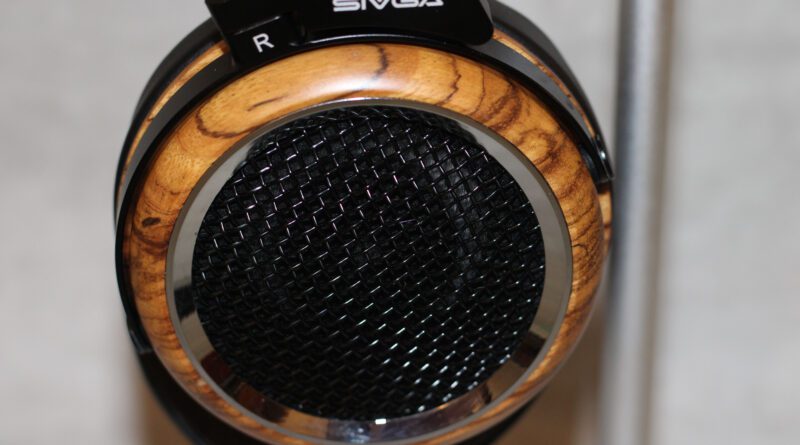
When reading this review, please remember that I grade on a very harsh scale so anything above a 2.5 is indeed above average on my grading scale and anything above 3 is a solid mark.
disclaimer: The Sivga Phoenix was sent to me directly by Sivga for review. Sivga and its sibling Sendy Audio are making in-roads into the US market and are carried by Audio46 and Musicteck in the US as well as being available for order directly from the Sivga website worldwide. I have no financial interest in Sivga, Sendy, or any of their distributors, nor have I received any compensation for this review. The Phoenix has been on-loan to me for purpose of this review and was shipped to another reviewer once this review was complete as well. I appreciate my time with the Phoenix and look forward to additional models from Sivga. Be sure to follow them on Facebook if you haven’t already so you get the next generation of product announcements.
Unboxing / Packaging:
The Phoenix packaging has hints of both Hifiman and Beyerdynamic packages with a lift top box that is reminiscent of the He6 box and a hard-case sitting inside that reminds me of the T5p. The front of the packaging has a line drawing of the Phoenix while the reverse has the specs. One thing to note, the wood grain on the sides of the box unfortunately do not do justice to the zebrawood cups and may be persuading customers to look away which is unfortunate. I’d leave the wood grain off the package and let the cups speak for themselves as they are beautiful and its a shame the packaging doesn’t capture that. Inside the box, you are greeted with a hard case and a pair of protein leather pads. Opening the case reveals the headphone itself, the cable in a small linen bag, and a set of hybrid pads with a cloth face. The cable is cloth wrapped and uses 2.5mm connectors at the northern ends and a 3.5mm single ended connnector and 6.3mm adapter at the southern end.





Build/Fit:
Construction on the Phoenix is first rate with gorgeous wood cups and well fit and finished metal parts making up the vast majority of the build. The only plastics are inside the cups in areas where they are not subject to repeated stress and as such I’d expect the Phoenix to last well. The Zebrawood cups are highly figured and well polished to really highlight the grain and detail in the wood. One thing to note is that the cups are on the small side so those with large ears may find these a little crowded as the combination of shallow pads and narrow cups could become an issue. If you have larger than average ears, I suggest trying these before purchase. The Hinges offers movement on both the vertical and horizontal axis which some have criticized in recent Hifiman models so that was nice to see. Padding on the headband is good and comfort was quite good if using the cloth pads. As mentioned earlier the Phoenix does ship with a hybrid (cloth) pad and a protein leather pad in the box. After a quick trial of the protein leather, I switched back to cloth and all of my testing and listening notes were conducted using the cloth pads as the pleather was just too hot and uncomfortable for extended use. I found that I could wear the Phoenix with my glasses without experiencing discomfort. Clamping force is minimal which probably helps contribute to the easy fit and comfort, but will limit utility of the Phoenix for active situations.

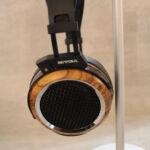







Internals:
The Phoenix uses a 50mm dynamic driver using a polycarbonate film diaphragm and in-house designed magnetic structure and basket to stiffen the diaphragm and reduce distortions of the diaphragm during use. Nominal impedance is listed as 32Ω with a sensitivity of 103dB/mW which makes them quite easy to drive and I found they worked well from a dongle via a phone as well as from desktop amps. They do scale some with better more potent sources but use with portable gear loses little in the overall. One thing to discuss while talking internals is the construction. I found the Phoenix to sound more like a closed back than the fully open back it appears to be. This can be easily tested by cupping one’s hands over the exterior of the cup and listening for reflections. Most open back headphones react to this by getting more bass quantity and much dirtier sound due to the reflections mixing with the original signal. The Phoenix changes very little when doing this so I had to suspect that very little sound was exiting the shell. A quick test showed sound leakage to the rear of the cup at -17dB compared to putting the mic the same distance from the front of the cup. (for the record I disconnected the other cup and moved it aside to prevent reflection from being measured on the inner measurement). The good news here is those looking for something they can wear without annoying the person sitting next to them will appreciate the Phoenix. The bad news, they don’t sound like they look and are more of a closed back signature than an open-back in some regards. Disassembly reveals that the driver is mostly encased in a plastic surround with an open cup behind it with no damping material between the rear driver face and screen so any modifications to change the signature will be permanent and require alteration of the driver housing to expose more of the drivers rear surface and allow more air travel from the rear of the driver. 3D printing a new driver housing would be a good option for preserving the original housing and altering the signature but is well beyond the scope work I’m willing to do on a loaner that needs to be sent on to the next reviewer in original condition.


Cable:
The cable provided with the Phoenix is fairly short which makes it useful when traveling but maybe not quite long enough for those sitting opposite their gear at home. The Jack is a 3.5mm straight type in a black knurled metal housing with a spring strain relief. At the north ends, the 2.5mm connectors have matching knurled black metal housings and red and green bands around the jack itself to help with indexing. The cable itself is single crystal copper in cloth sleeves for its entire length with a small splitter that matches the jacks.

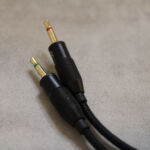

Sound:

Bass:
Sub-bass has good thump when called upon but what is most immediately noticeable is the mid-bass. Mid-bass is emphasized but and then a very gentle taper all the way through the lower mids which gives the Phoenix more punch than typical of an open-back. I think the semi-closed nature of the housing is on full display in the lows as it does combine some elements of a closed back (big bass) with elements of an open-back (more speed and balance). Bass has texture but is a bit smooth compared to some of the more articulate models (Hd6xx) so there is a bit of trade off of quantity for detail level. Attack is fast enough to keep things clean with a natural decay that adds a bit of fullness. This gives bass guitar a rich fluid tone that is a nice departure from some of the competition that is thinner and less natural sounding. The Phoenix bass can really slam when called upon but integrates well and doesn’t distract when it is not the main emphasis. It should please all but the most diehard basshead and be good for bass heavy genre.
Mids:
There is some mild mid-bass bleed that helps add some warmth and thickness and while the mids are not emphasized, it is hard to call the recessed as they still have good presence in the mix. Male vocals have good weight and texture but at times dont cut through the mix well. Guitar growl has enough texture to sound believable and strings have good timbre and energy as well. There is an upper-mid push that steps female vocals a bit in front of their male counterparts but at the same time they are a bit leaner compared to the lower voices. If strings have enough energy to be believable because of the push, acoustic guitar, banjo, and mandolin gain a little too much and come off as brighter than natural.
Treble:
The lower treble and true treble continue the climb of the upper-mids with a plateau in the 4-6kHz range before a drop back to the level of the upper-mids that continues up through about 12kHz where roll-off begins. Unlike a lot of models where the primary emphasis of the top-end is in the upper-mid/lower-treble range, the Phoenix emphasis is very much in the true treble range which at times sounds well balanced against the big lows the Phoenix is capable of, but at other times jumps out as a bit too much. I found that tracks without a bass emphasis to offset the treble peak sounded a bit harsh at times and would advise that the treble shy audition the Phoenix before purchase. The good news is that same emphasis gives the Phoenix a nice clean top end with good definition and snare rattle is quite good with hi-hat having enough energy to sound natural as well. Its a tightrope walk that most of the time the Phoenix does well, but pieces with less instrumentation do show a need for that bass to balance it off.
Soundstage / Imaging:
Stage is good with a bit more depth than width and some height and is particularly impressive considering this is a semi-closed design. It wont compete with the class leading HD800 or the like, but is more than enough to avoid feeling closed in. Seating the orchestra is straight forward as instrument separation is good (although not fantastic due to its slightly thickened sound) and layering is good as well. Imaging is also solid with movements easily tracked and well defined without a loss of detail in the center like some show. There is some mild compression with particularly complex tracks that appears first in the lower ranges but isn’t particularly noticeable until extremely complicated and fast tracks are involved.
Comparisons:
The price of the Phoenix hovers right around $250 new with a few open box models dropping to $180 USD or so, so in keeping with that price range I selected a handful of common headphones to compare against at roughly equal cost. All of the models listed here should be within $50 to one side or the other of the Phoenix.
Sennheiser HD6xx
Construction favors the Phoenix with metal vs plastics used for most critical parts and the wood certainly has an advantage in the looks department. Ear cups are larger on the 6xx and will fit those with larger ears better as a result. Kit is a bit better on the Phoenix as well as the included case is a nice touch. I prefer the cloth cable of the Phoenix to the one that ships with the 6xx but both are easily swapped so the option to upgrade probably favors the 6xx with a greater variety of aftermarket options. Pads are better on the 6xx (although its close) and again more aftermarket options exist for those looking for better options.
Sound-wise, the two are very different with the Phoenix offering a bit more and better bass punch and a bit thicker tone overall vs the leaner and cleaner tone of the 6xx. The 6xx has long been criticized for not having a particularly impactful bass and those looking for more body and thickness will appreciate the Phoenix. The 6xx is a little more detailed with the Phoenix instead opting for a smoother sound.
Meze 99
The Meze99 is closed back but uses similar materials with a mostly wood and metal build and a similarly sized cup so both fit on the head similarly although clamping force is a bit higher on the Phoenix vs my well worn 99. The Zebrawood figure on the Phoenix stands out more than the more subtle grain in the Meze cups and certainly is better looking than the Noir or Neo versions. Cables are roughly equal as well and kits are similar too. Sound wise stage is larger on the Phoenix which is expected vs the closed back 99. Bass depth favors the Phoenix while bass quantity slightly favors the 99. Clarity is better on the Phoenix as is detail retrieval, particularly in the mids. Overall the Phoenix sounds a bit less V shaped and more detailed while the 99 has a bit more impact and energy in the top end.
HifiMan He5xx
Another Drop edition joins the list, the He5xx hasn’t gained the traction of the He4xx yet but time will tell as the 4xx made a lot of its bones as the cheapest planar one could get. The 5xx instead concentrates on reproducing the He500 signature while sharing packaging with the Deva model. The He5xx doesn’t have the adjustments on the vertical axis that the Phoenix has which makes the Phoenix more comfortable for glasses wearers. I also find the Phoenix a much better looking headphone as the He5xx is sort of industrial looking comparatively. Soundwise, the Phoenix has a slight edge in bass depth with both having similar quantity. Both share a similar signature with good balance and a slightly boosted treble but tonality is different as the 5xx is thinner and a bit faster while the Phoenix is a bit thicker and smoother by comparison.
Beyerdynamic DT880 Pro
The 880 Pro again cant match the good looks of the Phoenix with its all metal outer construction and also loses points on the non-detachable cable. Yes, I know many have done balanced mods but the fact remains it doesn’t ship with them. The 880 is much harder to drive well at 250Ω vs the 32Ω Phoenix. If driven well the 880 has good bass and a fairly linear signature up to the boosted upper-mids/lower treble which is in some ways similar to the Phoenix only the 880 climbs earlier (upper-mids vs treble) and is more immediately noticeable than the later more gentle rise of the Phoenix. (yeah, I went there). The Phoenix is much better paired with lower powered sources and even when you give the 880P what it wants in the way of power, it doesn’t outshine the Phoenix.
Thoughts / Conclusion:
So where does this relative newcomer fit in the already crowded $200-300 market? Its a tough question to answer as the Phoenix is an open-back with closed back characteristics that is both warm and bright, bold and balanced, and art and industrial all at once. It has enough detail and separation to be clear, but is full-bodied and warm in the overall. Extension is very good at the low end and above average at the top giving it a nice balance. I found it did reasonably well with everything from piano concerto to death metal which says a lot. It may not be a master of any single genre, but it is a very good generalist which does little to offend regardless of what genre it is fed and what source is used. I mention the source here as that is kind of a big deal. Most of my good all-around headphones need a specific source to be able to find that magic balance where they do everything well. The Phoenix seems source agnostic and was equally at home with the Cayin N3 and the Xduoo Ta-30. I think Sivga has done a great job with the Phoenix and the minor criticisms I can level against it certainly are nitpicking when we consider the $250 price tag.
Treble - 7/10
Mids - 7/10
Bass - 8/10
Soundstage - 6.5/10
Imaging - 7/10
Last edited:
Wiljen
Headphoneus Supremus
Pros: Youthful style, sub-$25, big V signature, lots of bass
Cons: loose bass, obscured mids, limited kit

disclaimer: I was approached by **** Audio to review the Opera Factory OS1 Pro. Although produced by Whizzer, the OS1 Pro is being marketed in cooperation with KBear which explains why the KBear rep was involved. I have no financial interest in KBear or Whizzer, nor do I have any details as to the relationship between the two companies. I have received no remuneration for this review and purchased the item for review via their amazon store with an understanding that I would be refunded at a future date after the review was released. If you have an interest in the OS1 Pro, it can be purchased through Amazon for $26 USD (at the time of this writing).
Unboxing / Packaging:
Opera factory packaging has always had a creative flare to it. Memory serves the last model I reviewed came in a can style container with wild graphics on. Much like that, this model comes in a lift top style box with graphics all over it in black, white, and gray with highlights like the Opera Factory name in metallic gold. The rear of the box has company information, model number, and model color selection but does not reveal the specs like a lot of other product packages do. While the graphics are youthful and vibrant, I’d appreciate a few more informative bits scattered in among them. Once you lift the box top, you are greeted with a foam tray containing the earpieces with cable attached in a semi-heart shape. A tab at one end of the foam makes lifting it out an easy task and beneath it we find a compartment for the cable and one for the tips, manual, and warranty card that round out the kit. No case is provided, but a velcro cable tie is which helps some. Three sizes of silicone tips are provided but the kit does not contain any foams. Its a fairly basic kit, but that is to be expected in a budget model.


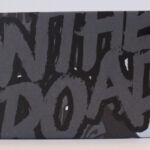
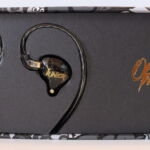
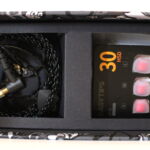

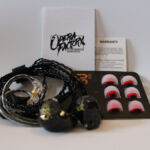
Build/Fit:
The OS1 Pro is an all resin shell in two parts with a faceplate and an inner shell that includes a cast in nozzle. The resin used is translucent black with gold sparkles dotted throughout and is dark enough to conceal most of the details unless the earpiece is placed directly on a light source and then the wiring and driver can be seen through the casing. The face plate is faceted and has a brass indexing pin behind the nozzle. Face plates have opera factory on the right and junior on the left and are marked L/R on the inner shell as well for indexing. The bi-pin connector is interesting as well as it is a raised type but conforms to neither of the current standards as it is not QDC, nor is it the squared off version like we’ve seen on the Nx7 and some other models. Instead, the connector is round and the outer diameter of the connector is roughly the same as the inner diameter of the connector on the cable side so the cable does mate over the connector on the earpiece. Standard .78mm bi-pin cables will work as well, but look somewhat out of place. Shape is a very standard upside down tear shape in a medium size and weight is fairly low which combined to make the OS1 pro a fairly comfortable in-ear to wear. Isolation is only average due to materials.


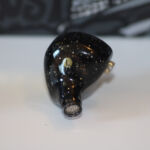






Internals:
The OS1 uses a single 10mm dynamic driver with a graphene coated diaphragm and an N52 high strength magnet. With a nominal impedance of 22Ω and a sensitivity of 112 dB/mW, the expectation is that the OS1 pro should be easy to drive with a phone or tablet as impedance is fairly low and sensitivity is very high. This also can sometimes produce problems with hiss when more potent amps are used on high sensitivity iems. I found the OS1 did well when paired to a phone but did like a bit more power and scaled some both qualitatively and quantitatively with better source devices. While the ceiling is fairly low, it is worth investing in an amplifier to get the most out of the OS1. This is something we are increasingly seeing with dynamics coated with exotic materials and stiffened beyond what was normal a few years ago.
Cable:
The cable is very typical of those offered with budget in ears. It starts with a 90º jack so at least we begin well, especially considering the proper strain relief at the cable exit. The cable is a double twist with two pairs wrapped tightly together from jack to splitter and then exiting as two looser pairs from the splitter to the earhooks. The splitter is the standard hard plastic Y shape with short reliefs on both sides. The right hand side has a red dot on the connector to identify it and also has the single button remote/microphone while the left side is clean from splitter up. The earhooks are a heavy clear plastic sheathing that does react to a heat gun so can be shaped as desired. As previously mentioned the bi-pin connectors are .78mm and a standard cable will work although the provided one uses a proprietary hood that covers the connectors base.
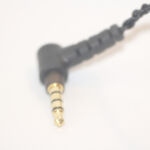

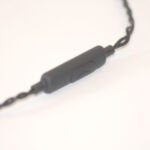
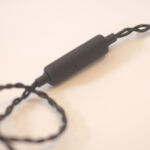

Sound:

Bass:
Sub-bass has a huge emphasis with its center around 50Hz and a gradual drop-off above that point but bass remains elevated compared to the rest of the signature all the way through its range. Bass is boomy and does bleed into the lower-mids more than a little. This is both obstructive and a bit overly warm at times. These are advertised as bass forward and they most certainly qualify as they have a ton of slam and rumble, if not the cleanest bass presentation one will find.
Mids:
Lower mids and upper mids share roughly the same level but the upper cut through much more clearly as the bass-bleed obscures some of the lower-mids and keeps male vocals from being presented as cleanly as they should be. Guitar growl is good with a nice rasp to it, and lower voices do cut through the mix enough not to get buried despite the bleed. True mids form the trough of the V and lack enough energy to make strings realistic, but for an in-ear made for EDM and pop, this was never the focus. Upper-mids do start to rise some and ultimately plateau out as they cross into the lower treble which gives female vocals a lift and pushes them out in front of their male counterparts. The upper-mids/lower treble do a good job of lifting the vocals without getting overly strident which is probably partially because they are still not anywhere near as forward as the bass.
Treble:
Lower treble has good detail and a texture before falling back above the 5kHz mark and ultimately rolling off at about 12kHz. Snare rattle is reasonably good but lacks a little crispness and cymbals lack the energy to sound entirely real as well. Still at $25, these deliver enough to be a fun listen for EDM and pop and have enough treble energy to give some sense of openness and air if lacking a bit of sparkle up top.
Soundstage / Imaging:
Stage is wider than deep which is not atypical in budget models, but the OS1 pro does manage some height in the mix as well. Overall dimensions are fairly small with most pieces feeling like the band is standing directly in front of the listener with some left to right spread. Seating the orchestra is tough as there is enough blur due to the bass to overlap some instruments and instrument separation is at best average. Same goes for layering, the OS1 Pro is already a bit boomy and when fed a diet of high complexity, fast, bass tracks it compresses quickly and becomes muddy. Imaging is acceptable but is not assisted by the layering and separation issues.
Thoughts / Conclusion:
I reviewed the OM1 years ago and concluded that it was geared toward the youth and those who liked heavy bass without a lot of concern for audiophile tuning. I think the same can be said for the OS1 Pro. Those looking for lots of boom and slam will find it appealing as it delivers on its promise of big bass. Those looking for a balanced in-ear will probably want to look elsewhere as this one is purely about the fun of EDM and pop and not designed to cater to a more jazz and piano oriented listener.
Bass - 5/10
Mids - 5/10
Treble - 6/10
Soundstage - 5/10
Imaging - 5/10
Last edited:
Vasarely
Thanks, bought!
I will modify it if need.
I will modify it if need.

Wiljen
Headphoneus Supremus
Pros: very musical signature with great imaging and non-fatiguing treble
Cons: cable transmits most movements to earpieces, lacks a little detail compared to hybrids in same price class.

disclaimer: I was approached by a Sennheiser representative about doing a review of the new IE300 and also helping to create a playlist of songs that showcase the IE300’s strong points. I have no financial interest in Sennheiser or any of its resellers, nor have I been compensated (other than the earphone being provided) for the content of this review. If you have an interest in the IE300, please visit Sennheiser’s site, or they are available now from most better resellers.
Because of the playlist request, this review is a bit longer than some. I have tried to keep the format the same as my standard with the exception of the playlist section that details the tracks I recommended be added to it and the reasoning for each.
Unboxing / Packaging:
The Sennheiser ie300 comes in a lift-top box with a large graphic of the earpieces on front and some of the marketing points on reverse. Lifting the lid reveals the earpieces with cable attached in a foam surround at top and the bulk of the cable and case in a cutout in the lower portion. The rest of the kit is hiding in the case with 6 pairs of tips (3 each SML silicones and foams), a cleaning tool, cable tie, warranty card, and manual. Overall, its a fairly complete kit and the case is nice and solid so should provide good protection. The inside of the case also has a mesh pocket for keeping spare tips and the cleaning tool handy without having them fall out every time you open it.






Build/Fit:
The earpieces are small-mid sized and made of a thermo-plastic resin with an outer shell, an inner plate that covers the rear portion of the shell and a round nozzle/driver housing that fits into the front section of the outer shell. The outer shell has a raised plate with the Sennheiser logo and a single vent to the rear of the logo. The right earpiece has a red ring around the mmcx to identify it and the left has IE300 cast into the inner plate. Nozzles have both a forward and upward rake which helps with insertion depth but isolation is only average with silicones and foams offer a bit of improvement in isolation but change the signature enough that I preferred the silicone tips. I did have a tough time finding a tip that fit well. Luckily the nozzles are standard sized with a pronounced lip so choices abound. I ultimately settled on the Azla Sedna M/L which gave a more consistent seal than the tips provided. Once the seal issue was worked out, these are a comfortable iem for long wear with the caveat that the cable transmits a lot of vibration directly to the earpieces and I can’t recommend these for gym use without at least a cable swap. I have seen no information on waterproofing on this model so it may be best that gym use is avoided anyway.








Internals:
True to their roots, Sennheiser uses an updated version of its 7mm extra wide band dynamic driver they have made famous in previous in-ears. The current version is rated at 16Ω but remember that Sennheiser rates their sensitivity at 1kHz/1Vrms so the 124dB rating is not the equal of the dB/mW rating used by a lot of other measurements. In my own testing I found the IE300 sensitivity to be roughly 103 dB/mW. (Remember the margin of error on my calculation is ±4 dB as my system is pretty rudimentary compared to some). Still the important thing regardless of how its measured is that the IE300 is easy enough to drive that it does well when paired to things like Hiby R3 pro Saber or the 1st generation Cayin N3, and should be usable with a smartphone or tablet although a dongle may help here to give a bit more potency. The driver also sports a rear resonance chamber designed specifically for it to help prevent unwanted reflections. A helmholtz resonator in the nozzle assembly is also used to tame unwanted resonance according to Sennheiser documentation.

Cable:
The cable starts with a 90º jack of the type I prefer with a good strain relief and a heavy para-aramid (generic name for Kevlar) coating on the single strand that exits. The splitter is brushed aluminum with a plastic V relief on the lead in and matching black plastic chin slider above the splitter. Perhaps oddly, wires above the split retain the same size and weight of the single wire below rather than going to a smaller lighter design. Cables terminate with heavy earhooks with memory wire and mmcx connectors in black plastic housings with R and L marked on the side of the housing. I’ll say it right up front. I’m not a fan of this cable. It is very durable for sure, but trades pliability for durability and the resultant product has a bad habit of transmitting every bit of movement directly to the earpieces despite the over-ear design. Part of this is also due to the memory wire ear-hooks that are always loosening up over time and fail to hold their shape. I wore the earpieces for 2 hours and had my wife help me measure from rear of the earpiece to the front of the base on the earhook and over that 2 hour period it had loosened up by 6mm. This was tested during a period where I was seated, and walking inside the house, not strenuous exercise so I have to think this is going to be accentuated by higher activity levels.

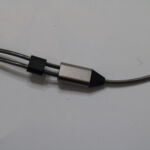

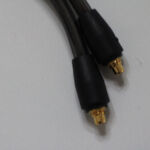
Sound:

Let’s set the stage appropriately before we go into sound details. This is the replacement for the ie80s with its tunable bass and is not a pure reference in-ear. Those looking for this to be the ruler flat frequency response of a true reference can quit reading now. This is a shallow V with emphasis in the sub-bass and lower treble ranges much like its predecessor when set to its most bass heavy setting. The good news is it distorts less than the ie80s on its most bass heavy setting and has more detail comparatively.
Bass:
Sub-bass is emphasized with a center point at roughly 45Hz and roll-off only evident below about 25Hz. Sub-bass textures are good, but not great as some minor detail is lost in its delivery in favor of quantity. From that peak, mid-bass drops back fairly quickly and loses all emphasis as it crosses into the lower mids. Mid-bass textures again are good but not class leading and driver speed shows a slower decay than attack which contributes to warmth but does make the bass bloom on pieces where the bass is a little loose anyway. I found the bass tuning good for pleasure listening but a bit too warm and a little boomy for critical listening. One of the criticisms of Sennheiser has been the lack of bass on many of their models. That was clearly something the IE300 was designed to address as if anything, it has a bit more than absolutely necessary and is certainly a departure from what many have grown to expect from the “Sennheiser House tuning”.
Mids:
Lower-mids flow well from the mid-bass without any obstruction and only minor mid-bass bleed and even with the lack of emphasis, the lower-mids don’t sound recessed and deeper vocals have good note weight and timbre without the classic Sennheiser veil. Guitar growl is good with enough ragged edge to be believable as well. True mids follow the same pattern, good detail and clarity with enough energy to be well voiced if not emphasized. For an in-ear tuned more toward popular genres, the IE300 does well with string quartet pieces and piano concertos where mids are dramatically emphasized. The IE300 isn’t mid-centric, but does a good job of handling pieces that are with good energy and speed. Female vocals are on the same plane with lower voices and both cut through the instrumentation without the feel of an artificial lift that so often comes with that.
Treble:
Unlike a lot of the Vs in this price range, the lower treble shares the same lack of emphasis with the mids and we only see the climb back foward begin as we leave the lower treble and move into the 4-5kHz range. Lower treble has enough energy to provide good detail but is non-fatiguing and fairly polite. While true treble is emphasized, there is a drop off before we reach the 9kHz range that keeps the IE300 from getting really fatiguing. Snare rattle is good with crisp edges but cymbals need a bit more energy than provided some of the time to be completely realistic. This is a tough balance as with sparkle comes fatigue most of the time. The move of the boost from lower treble to true treble does create a little brittleness in higher vocals at times so tracks that are a little on the hot side anyway may show this and mild sibilance as a result. Final roll-off is above the limit of my hearing (roughly 14kHz) and does give the IE300 an open top-end with no feeling of being closed in or limited.
Soundstage / Imaging:
Soundstage is wider than deep with some sense of height and is on the intimate side which shouldn’t be a shock for a closed back in-ear model, but what will surprise is how good the instrument separation and imaging is. Seating the orchestra is very straight forward with clear positions and no overlaps or missteps. Movements around the stage are easily identified and positions are tightly defined so this might even be an in-ear gamers would find usable. I found no big donut hole in the center stage like most iems and even sounds directly from the rear are represented well. Layering is quite good as well with compression only evident on extremely complex passages and then only in the lower mid-bass range and sub-bass.
Playlist:
This was a neat idea to put together a playlist that accentuated the good points of the ie300. You’ll find a lot of strings and vocals in my contributions to the list as those are the things I find the ie300 does with great aplomb.
First up on my list was tracks that feature the dynamics of the ie300 as well as its string tonality. For this I chose two pieces (3 movements) that I think really exemplify what the ie300 is capable of.
The Peer Gynt recording of Edvard Grieg’s “In the hall of the mountain King”. This piece has more dynamic range than most and gives the ie300 a chance to really show off the distance between the quiet passages while retaining detail and the elevated passages without loss of control of the low end.
The Pentatone recording of Mussorgsky’s “Pictures at an exhibition” (Carlo Ponti and the Russian National Orchestra) movements 14 (The Hot on Fowl’s legs) and 15 (The Great Gate of Kiev). Here again, soaring highs and nearly dead quiet lows in the passages give this work a lot of range and a lot of complexity of strings to show off the timbre and texture of the sound as well as the black background the ie300 can deliver.
Next up was timbre and tonality with the previous Mussorgsky piece lending itself well to show off strings.
The Telarc recording of Rufolf Serkin, Beethoven Piano Concerto #1. Serkin is among the world greatest pianists and a joy to listen to on a good system as he can coax every last bit of power out of the stronger passages and still make the quiet moments nearly inaudible. If the piano doesn’t speak to you in this piece, it likely never will on that device.
For male vocals, I moved to more popular genres and settled on Lindsey Buckingham’s “Go insane” from Fleetwood Mac’s The Very best of collection. This song was originally on Lindsey’s album of the same name, but I much prefer the stripped down acoustic version found on “The Dance” DVD and later released on “The very best of Fleetwood Mac” collection. This version lets the vocal really shine and the acoustic guitar tonality is on full display was well.
For female vocals, I picked another powerful vocal from Beth Hart. I could have used any number of her recordings but ultimately settled on “Damn your Eyes from the “Black Coffee” recording with Joe Bonamassa. Having Joe playing guitar never hurts, but Beth’s vocal’s and the orchestration play as big a role in making this track special as anything contributed by Joe. This tracks until about 3/4 of the way through to really see the vocal range into the upper octaves so may not be appreciated if you only listen to the first minute. The good news is Bonamassa’s guitar will keep most involved to that point. “Lullaby of the Leaves” off the same album is another powerhouse vocal and could have easily taken this spot as well as it shows off her range and has a more gentle tone. Looking back, I’d probably have been better off using Lullaby, but….
My last two contributions are tracks that show off stage depth and both are tracks I use for reviews quite frequently. The first is Keith Richard’s “Runnin too deep” off Main Offender. This album is largely forgotten today which is a shame as it represents Richard’s at the height of his career and creativity and didn’t do well on the charts probably due to poor marketing and the selection of the two weakest tracks as singles. Runnin too deep shows off Richard’s at his finest and has a depth to the stage that few studio tracks can match. The other song I use was recorded in a cathedral using a binaural mic so we expect to hear all the echoes off the walls. The track of course is one I’ve used as long as I can remember, the Cowboy Junkies “So lonesome I could cry” from the Trinity sessions.
Thoughts / Conclusion:
The $300 price bracket is arguably one of the most hotly contested spaces in the market so the IE300 enters the ring with more than a few challengers vying for the same dollars and some of them are quite good so why should one consider the IE300 in this mix? The Sennheiser name will do it for some as they have an enviable reputation for quality builds and excellent customer service. The IE300 is well built and with the cable using what amounts to Kevlar in the coating, it should last extremely well. For those more interested in sound than build, the IE300 offers a shallow V with good musicality and enough detail to keep your interest without a lot of fatigue or harshness. The biggest thing that would make me select the ie300 over others though is its excellent imaging. A lot of hybrids struggle to keep movements synced as different drivers contribute parts of the signature and this is where the single dynamic has a distinct advantage. The IE300 presents a very cohesive sound with movements being easily pinpointed and tracked and a very wide stereo separation really contributes to the overall enjoyment of the music more than some will realize until they try something with above average imaging and separation like the IE300. The latest from Sennheiser is a worthy successor to the IE80s in many ways and while it lacks the tuning options of the ie80, it has a better more listenable base signature that helps offset the need for those same options.
Bass - 7.5/10
Mids - 7/10
Treble - 6.5/10
Soundstage - 7/10
Imaging - 8/10
Evshrug
Very thorough review, I think people will appreciate the detail and research you put into this. I’m personally absolutely chuffed that you included song recommendations! I added them to the TIDAL and Spotify playlist here: https://www.head-fi.org/threads/sennheiser-ie-300-synergy-playlist.956900/post-16261491
DJ Core
Got mine in and loving them especially the fit. Needed something fun and this covers well. most impressive is even at high volumes,the sound doesn't break up and change. I'll use it on stage as well. sound sig is the same as the 400 Pro.
fablestruck
Do you own the 400s as well?
No difference to the 300s?
No difference to the 300s?
Wiljen
Headphoneus Supremus
Pros: well built, good power, pre-amp function works well
Cons: Single source with no switching between RCA and front 3.5 jack.

disclaimer: This review was originally posted to my blog on 2/12 but I decided to post it here after my images started showing up in other reviews of it. The MT-602 was provided for the purpose of this review and the tube rolling article by Xduoo Audio. I have no financial interest in Xduoo or any of its distributors, nor did I receive any compensation beyond the product itself for this review. If you have an interest in purchasing any of the Xduoo amplifiers I have recently written about, I suggest you check out Xduoo’s website directly as they now offer direct sales. You can also follow them on Facebook for more information.
Unboxing / Packaging:
The packaging of the MT-602 is a new style for Xduoo with a very western retail look to the box. The front has the line drawing of the amp while the reverse has company info and some suggested uses but does not have even basic specs. Lifting the top of the box reveals the manual and then a couple of blocks of heavy foam. The top most block serves to protect the pre-installed tubes, while the lower block protects the 601 itself. Beneath the unit and foam protection is a box containing the power supply cable. One thing worth noting, if you get the MT-601 and 602 both like I did, the power supplies look identical, have the same sized barrel connector so will physically interchange, but are not cross-compatible as the 602 uses a 12V power supply while the 601 uses a 24V supply. Close inspection of the box on the power supply does show that the only difference in the two (externally) is the voltage label. With these in black lettering on a black surface they do not immediately leap out so marking them in some easily seen way as you unbox them may be a wise plan to keep from having problems later.







Build/Fit:
The case is anodized aluminum in a matte gray with removable end plates and rear plate. To remove the internals for cleaning or repair, only the rear plate needs to be removed as the internals no not attach to either side plate. The top of the case is vented well around the tube and the side plates also have a pattern of vents showing the Xduoo X. A pair of 6AK5 type tubes are used and protrude only about .5 inches above the top surface. Inputs are a 3.5mm jack on the right front and a pair of RCA jacks on the rear. Outputs are a 6.3mm single ended output (a 6.3 to 3.5 adapter is provided) and a 3.5mm output on the front face, and a line out provided by a pair of RCA jacks on the rear of the unit. The line-out is volume controlled so the unit can be used to introduce some tube coloration and volume control to powered monitors. The 3.5s are clearly labeled as phone and aux in respectively so shouldn’t be easy to confuse. This is purely an amplifier so no usb, optical, or coax connectors are needed and the only other features not covered yet are a large red volume knob centered immediately in front of the tubes and a 12V DC input on the rear of the unit. Overall the unit stands a little over 1.5 inches tall (excluding the tube) , about 5 inches long and a little over 3 inches deep. The unit weighs slightly less than a lbs as well so is quite compact and comparable to the Schiit Magni or Modi in size and heft. The 602 is very slightly heavier than its 601 counterpart but for all practical purposes these two are identical in size and heft.

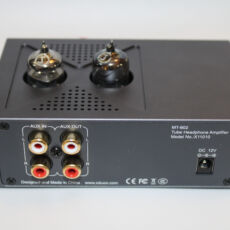


Internals:
The MT-602 uses a pair of 6AK5 tubes as the pre-amp followed by four D882M transistors that are used as a buffer stage. The 601 requires a large heatsink for its mosfet output, but here the four D882M transistors are mounted to the bottom of the board and don’t require the large heatsink used in the smaller sibling. Those interested in the D882M can find the datasheet here. Capacitors are either Elna Silmic or RubyCon branded throughout. The 602 also lists a built in mute circuit in the headphone output to prevent pops at power on. This either isnt present in the 601 or simply isn’t mentioned in the documentation. The 602 lists gain as +15dB so is slightly lower than the 601 in that measurement, but output power is much larger at 1300 mW into a 32Ω load compared to the 200mW of the 601. SNR is improved as well at 115dB compared to 100dB (601) while THD+N is not quite as good at <.1 at 1kHz with a 32Ω load. The 602 lists as suitable for use with headphones between 16 and 600Ω impedance and indeed was capable of powering just about anything thrown at it. The 6AK5 (6J1 Chinese designation or EF95 Euro designation) gives the user plenty of options to roll tubes in the 602 (an exercise I intend to do a bit later), as the 6AK5 has been in nearly constant production since the 1940s when it was introduced by Bell Labs and Western electric and used in early radar systems in fairly large numbers. It is not uncommon to find western electric examples with USN and an anchor on the packing designating those tubes accepted for military use during the war.


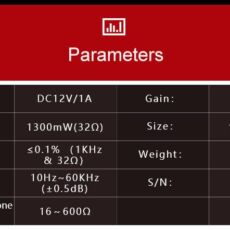
Sound:
Normally the goal of an amp is to be gain on the wire and nothing else, but when we introduce a tube pre, it almost always has an impact on the signal in an audible way. So here we can talk about coloration as not only expected but welcomed. Those who want to avoid such coloration of the sound will likely opt for one of the many solid state amps that are available instead anyway. The MT-602 utilizes the 6AK5 tube family. This family also includes tubes labeled 5654, 6J1 (Chinese and Russian designation), CV4010 (British), EF95 (Euro), 403a/b (Western Electric) as well as 6AK5W and 5654W designations. The tube was originally used in radar sets and was used in a ton of military equipment over the years so they are commonly found as new old stock in military stockpiles. With nearly constant production from the early 1940s through today there are too many options to possibly account for all of them but they are somewhat less common on the market than 12au7 or 6DJ8 pre-amp tubes that are commonly used in this type device and may require a bit more digging to surface satisfactory pairs for use in the MT-602. I am working on a tube rolling article and will add the link here when completed but will suggest the early Sylvania JHS 6AK5 as a good all-around tube with better stage size and tonality than the stock offering. When used a pre-amp, I also found the Western 403b to be a good option as it complemented the Klipsch R-R1PM and Kanto TUK powered monitors I had available well.
Thoughts / Conclusion:
I had mixed emotions about the little brother in this series as I think it was of somewhat limited utility and should be thought of more as a pre-amp with a earphone output than a bonafide headphone amp. I have no such reservations here. The MT-602 offers good power and was able to handle all but the most demanding headphones without any issues. The pre-amp function worked very well using both powered monitors and in place of my standard pre-amp in my home system (which is asking a lot). If there is a drawback it is that as a pre-amp you only have a single RCA input on the rear and 3.5mm jack on front and no switching to handle which input is in use. This limits the 602 to being a single source pre-amp. Thankfully for most this will be part of a desktop stack and will probably be asked to handle output from a DAC or perhaps directly from a PC sound card. I think this is the role Xduoo envisioned the MT-602 being used in and it performs quite respectably when used as such. The 5654W miniature tube has a lot of options to tune the sound to the end-users liking although it does puzzle me that the 601 went with the more expensive and more commonly available 6DJ8 while the bigger brother went the minature route. I suspect this was in order to keep the cases on the two models the same size and dual 6DJ8s simply could not be fit in the same space. I’m not sure I would have chosen the case size as my over-riding variable here as going with a more common tube would open up even more options for buyers to tune and tweak the device.
For those interested, I have a tube rolling the MT-602 article posted to my blog. Rules here prevent posting a link so google MT-602 Tube Rolling.
Last edited:







































